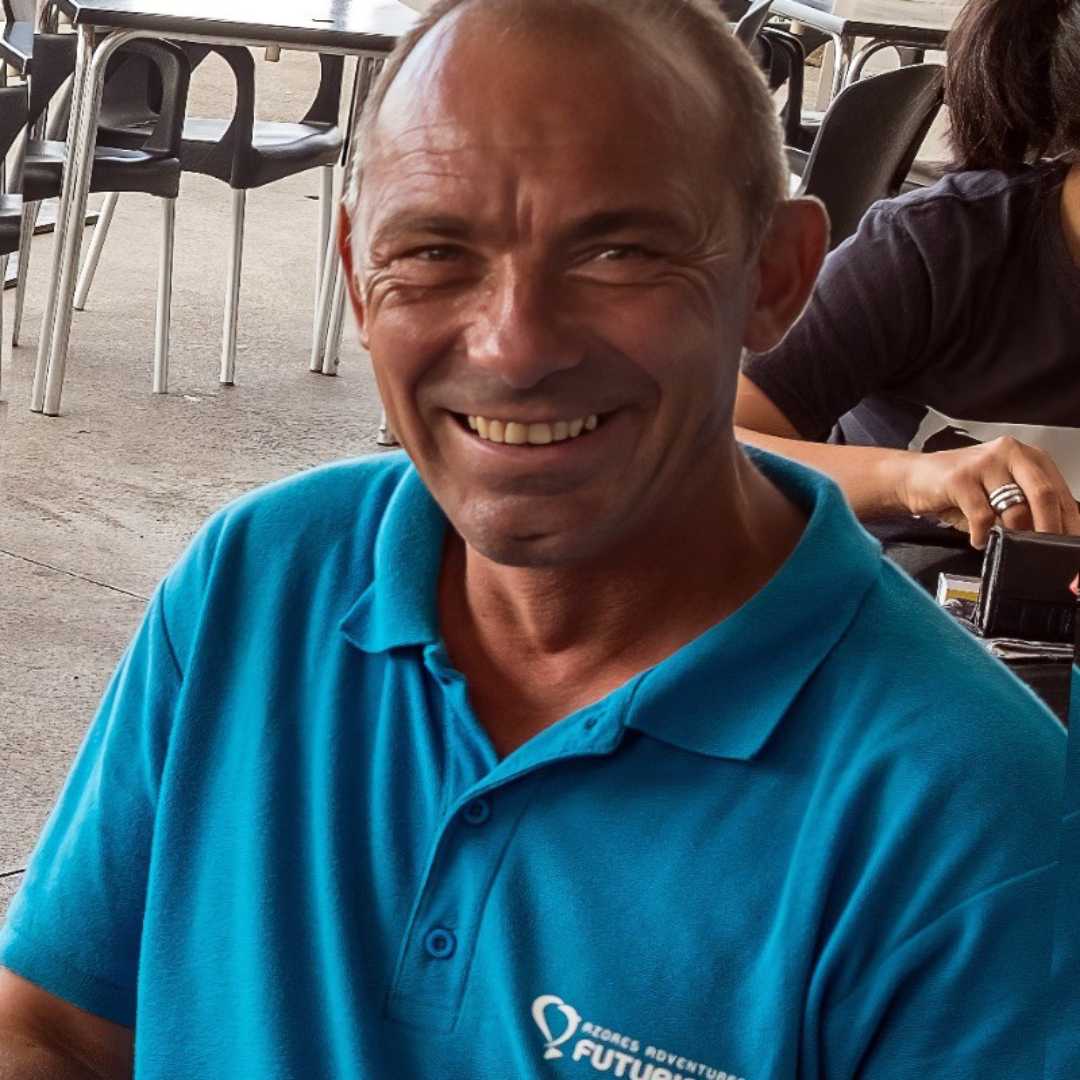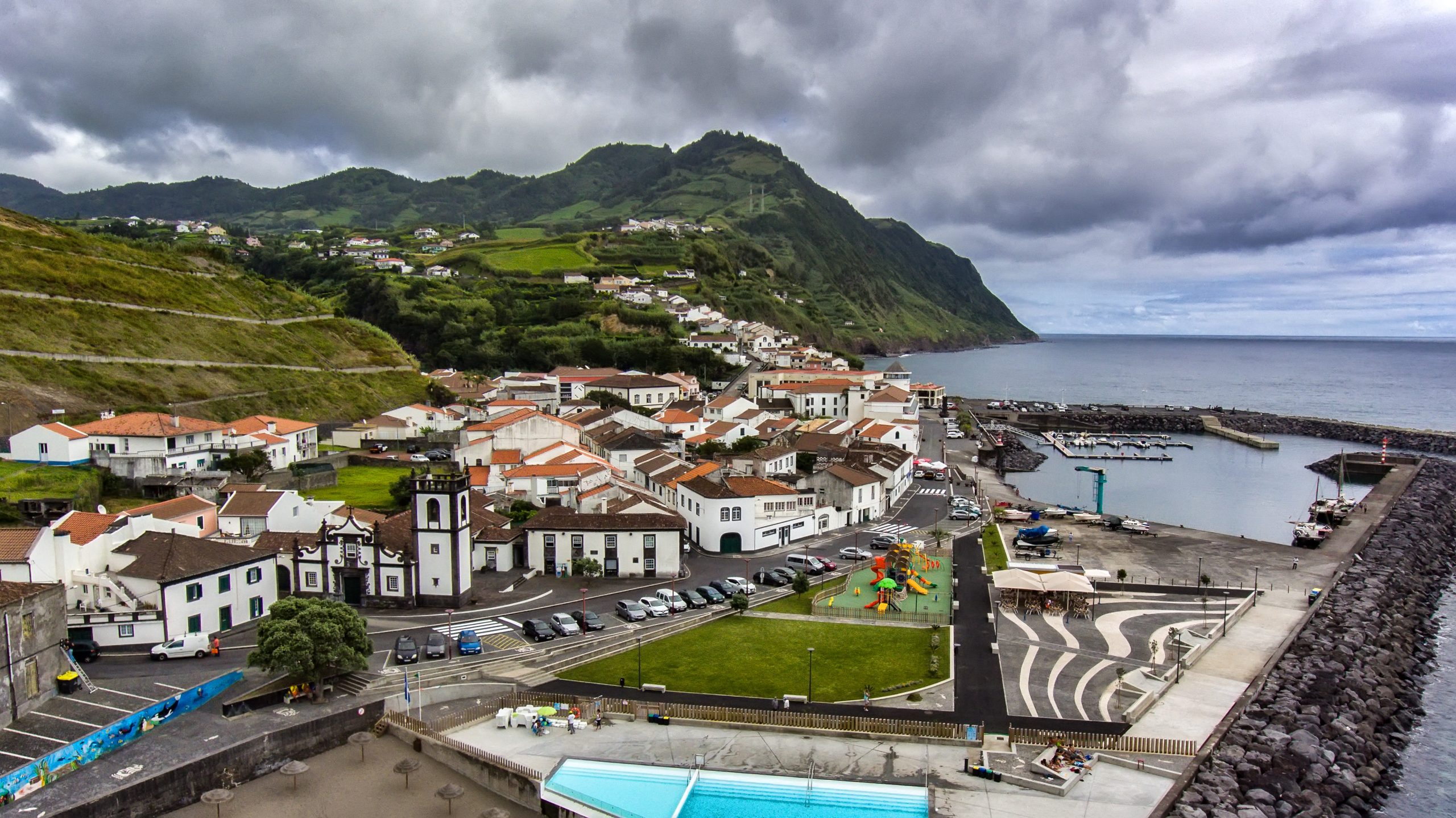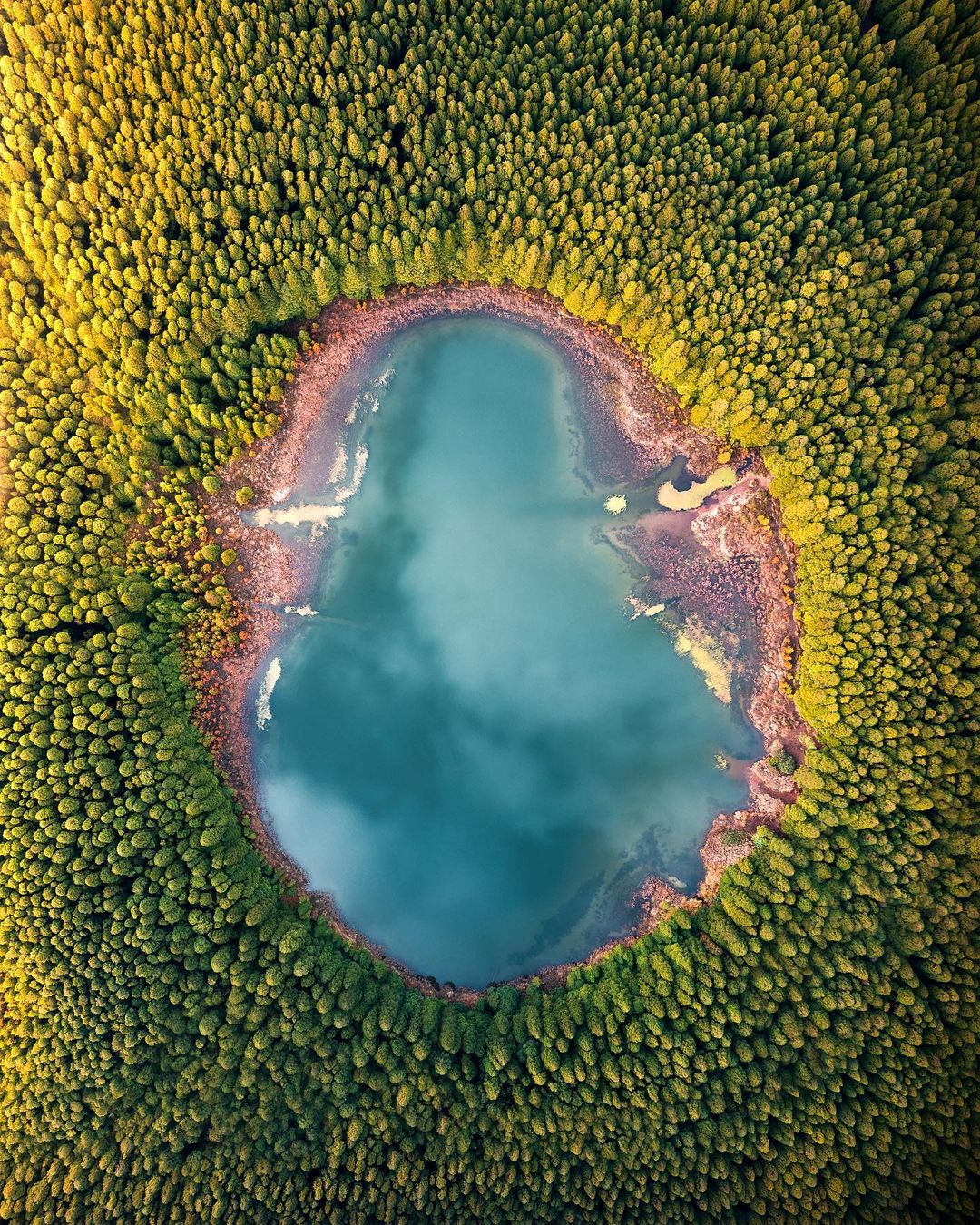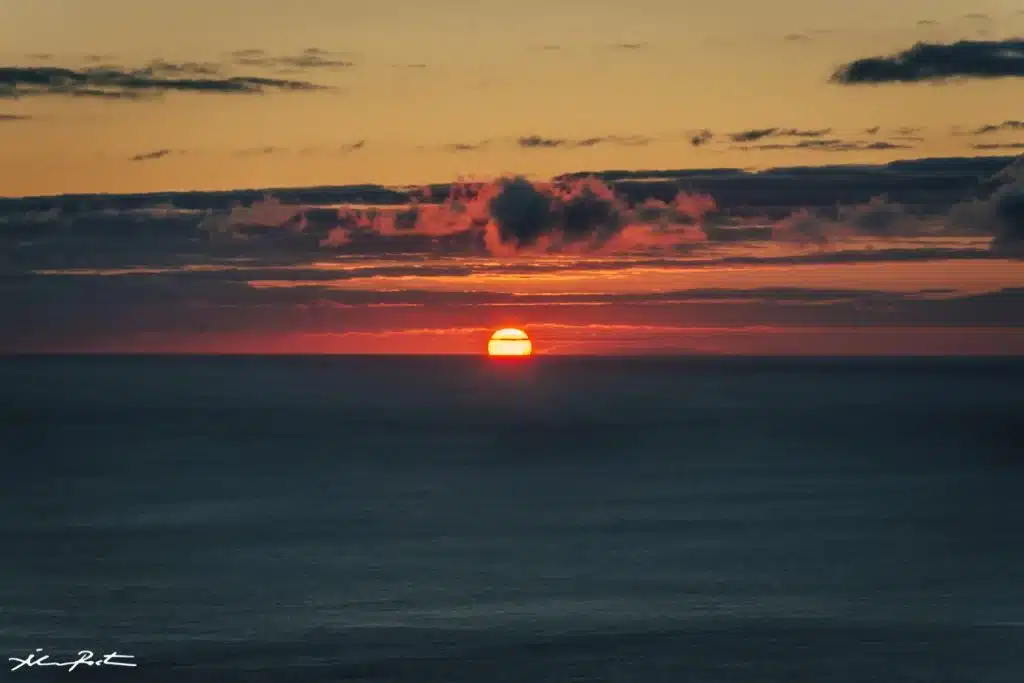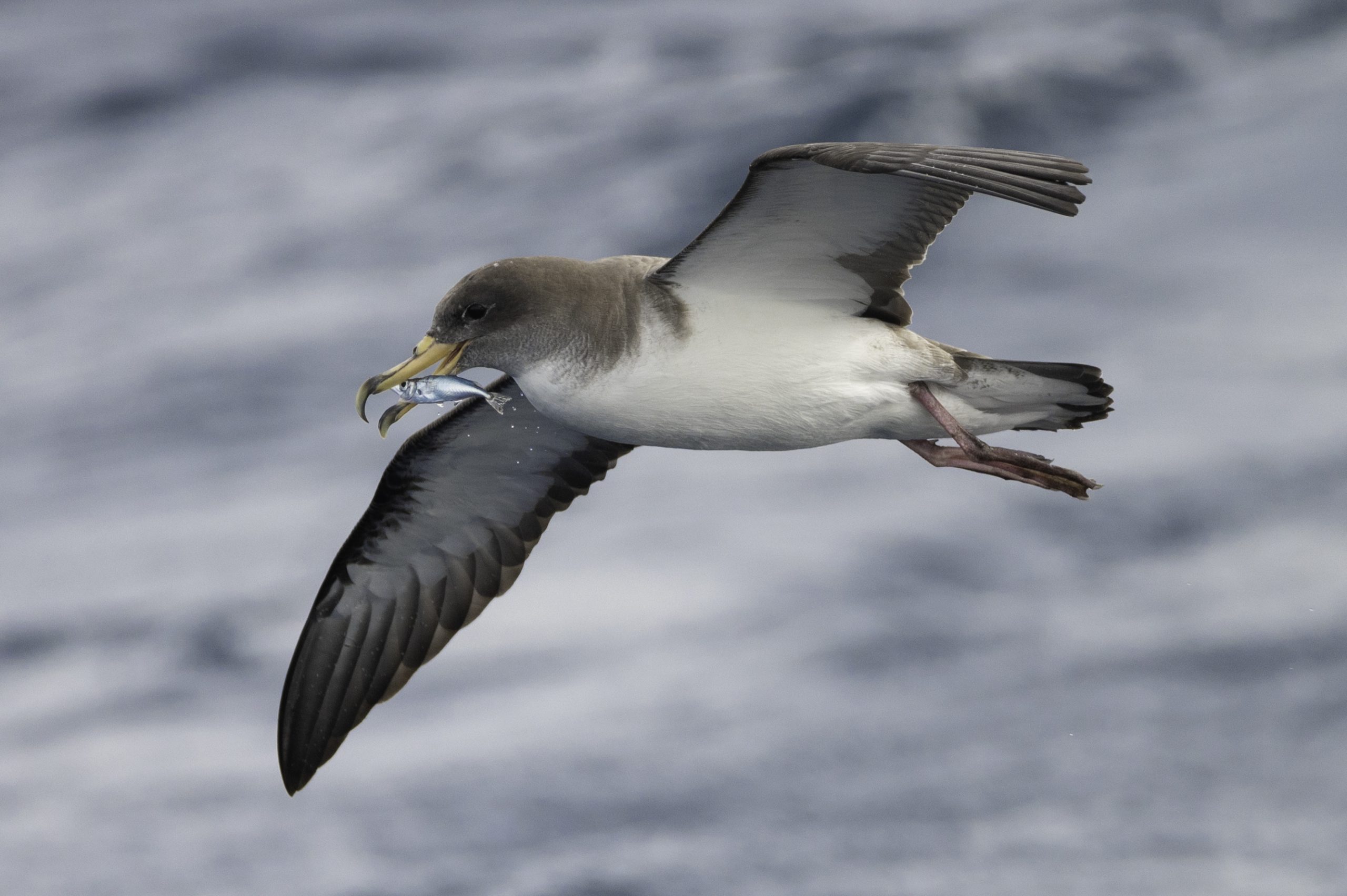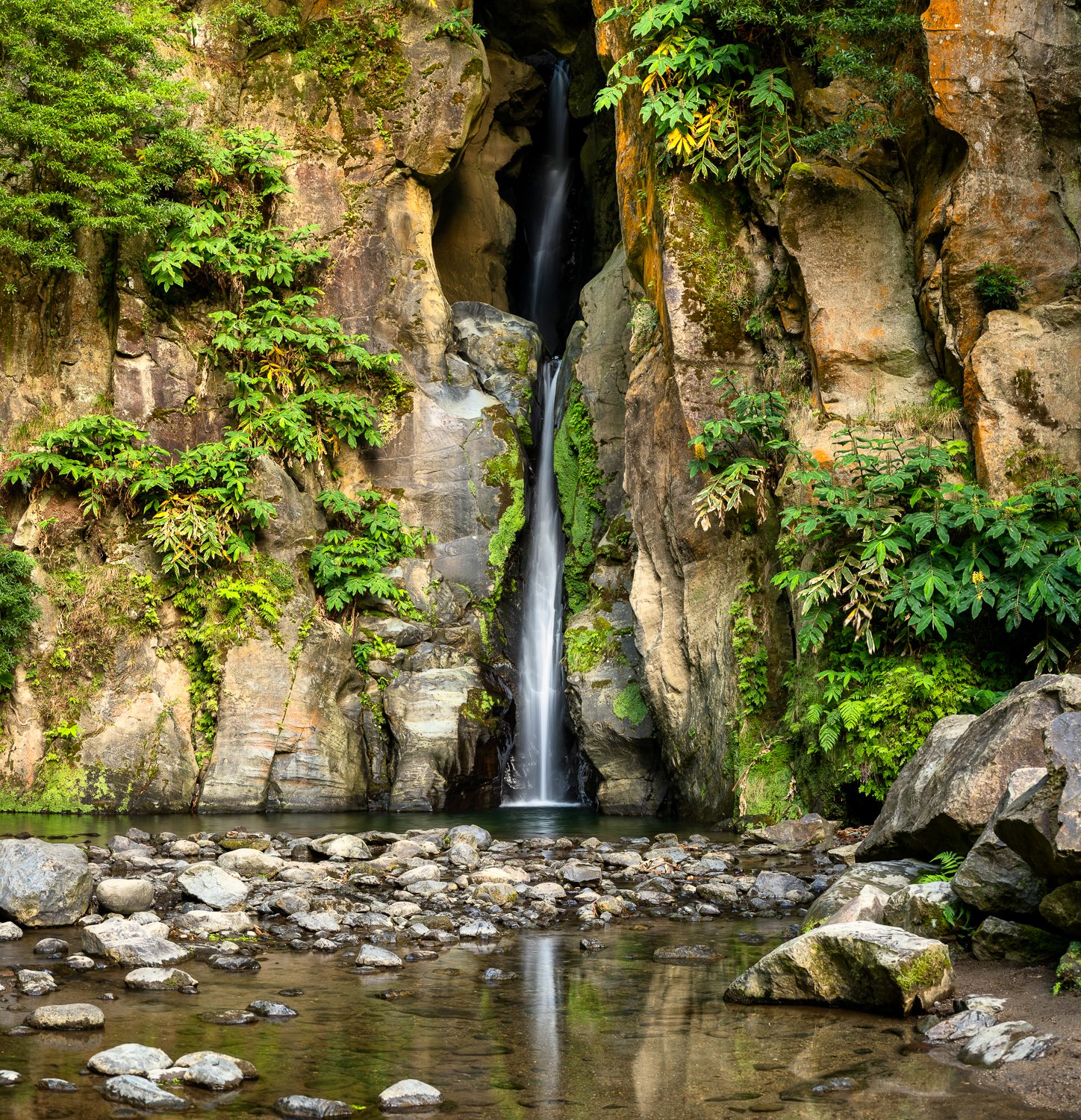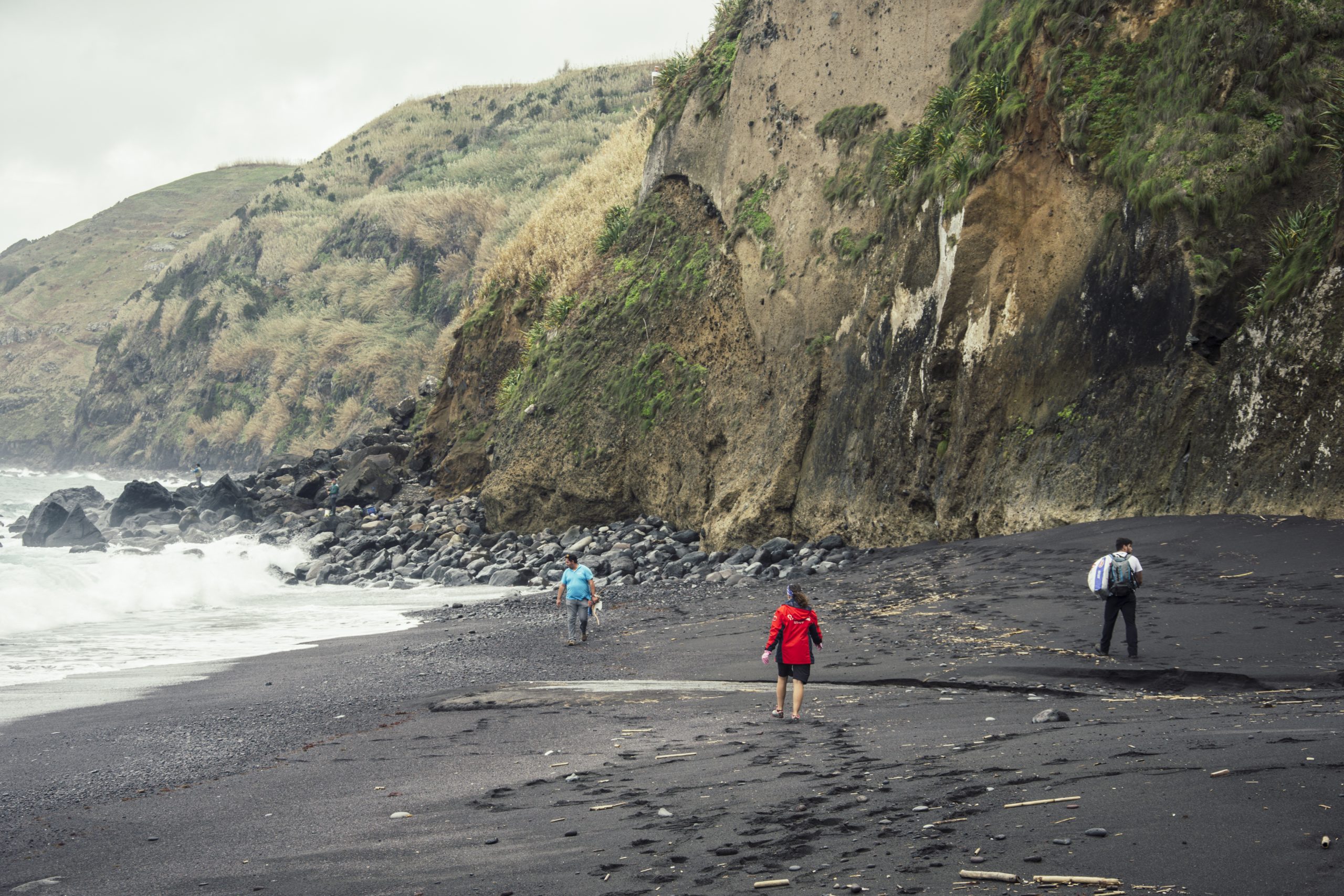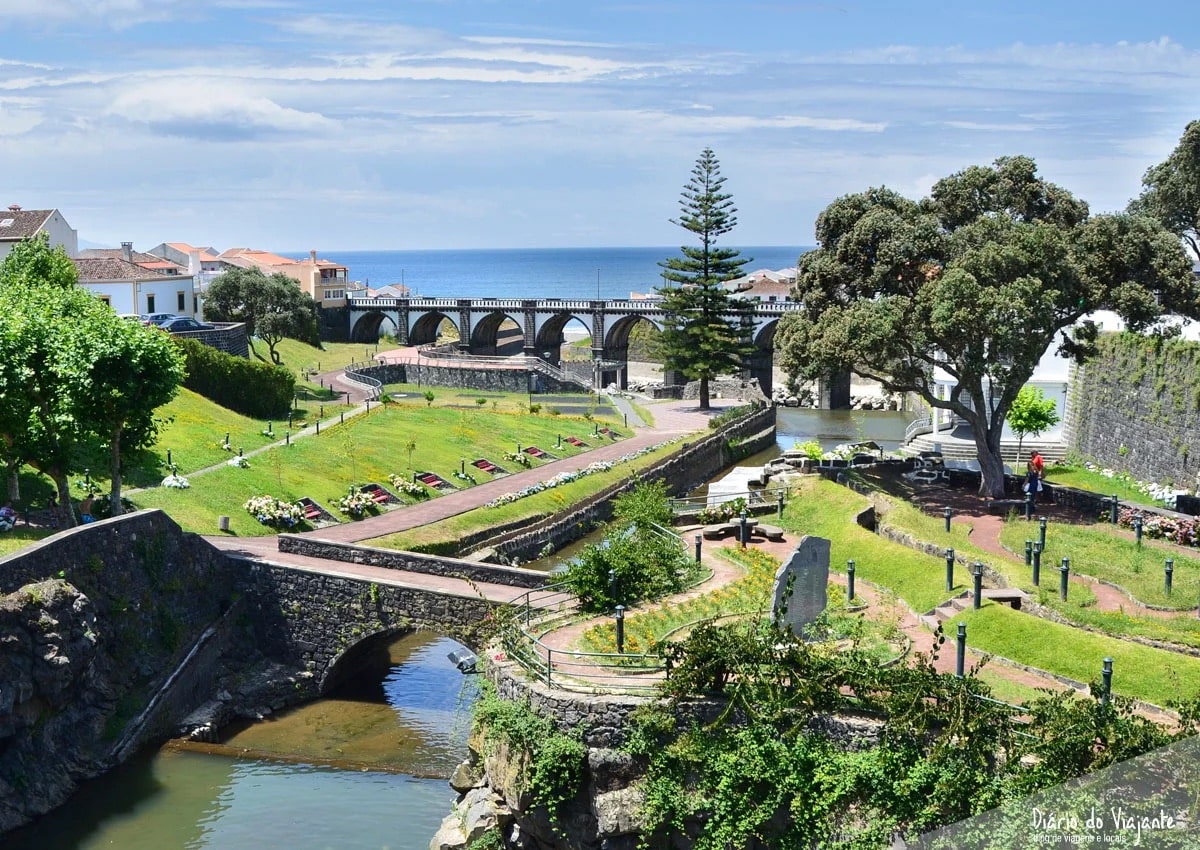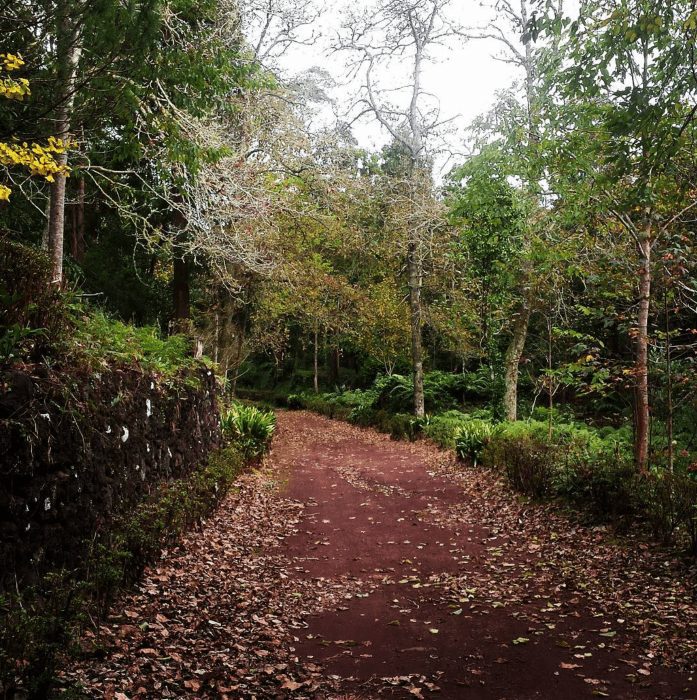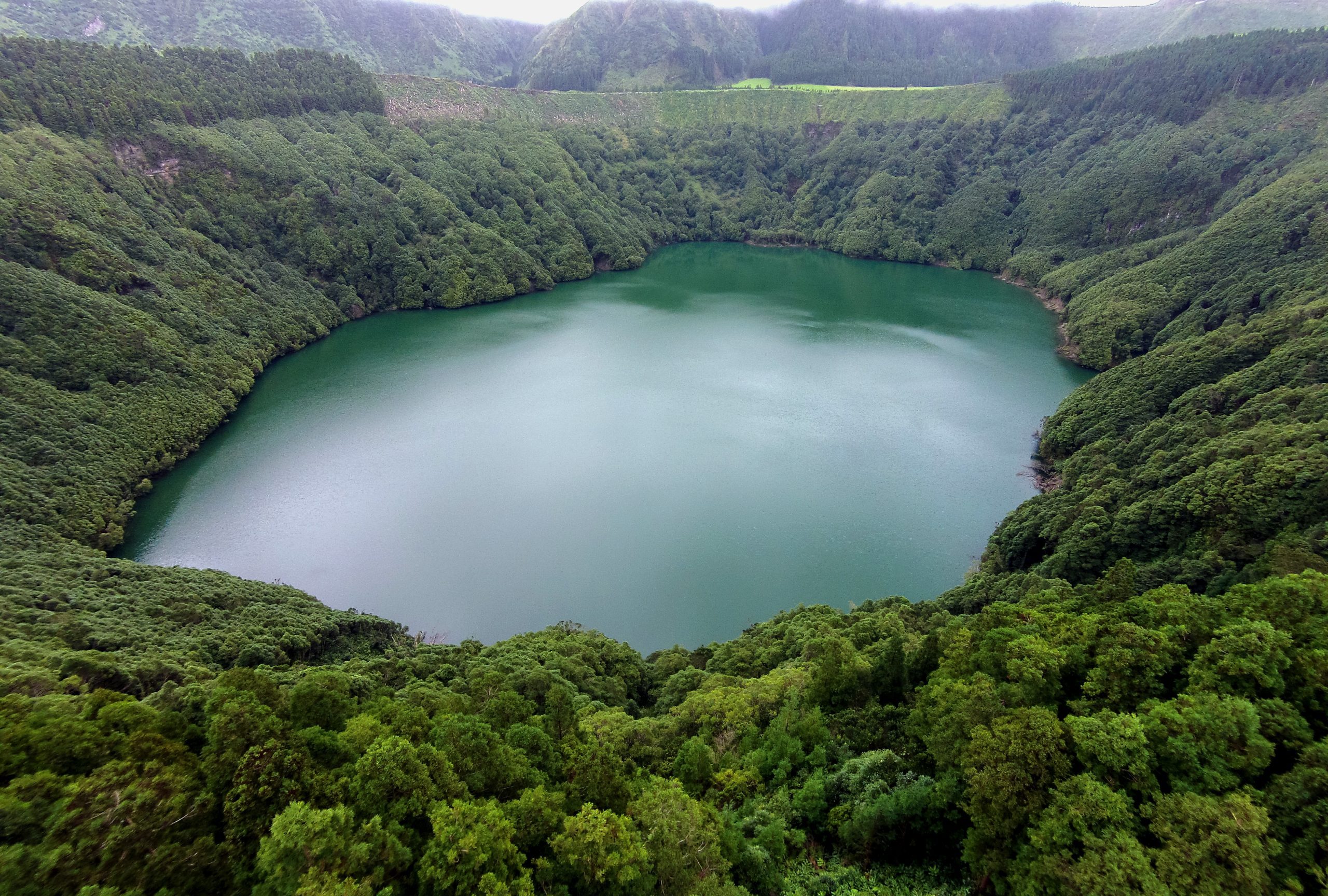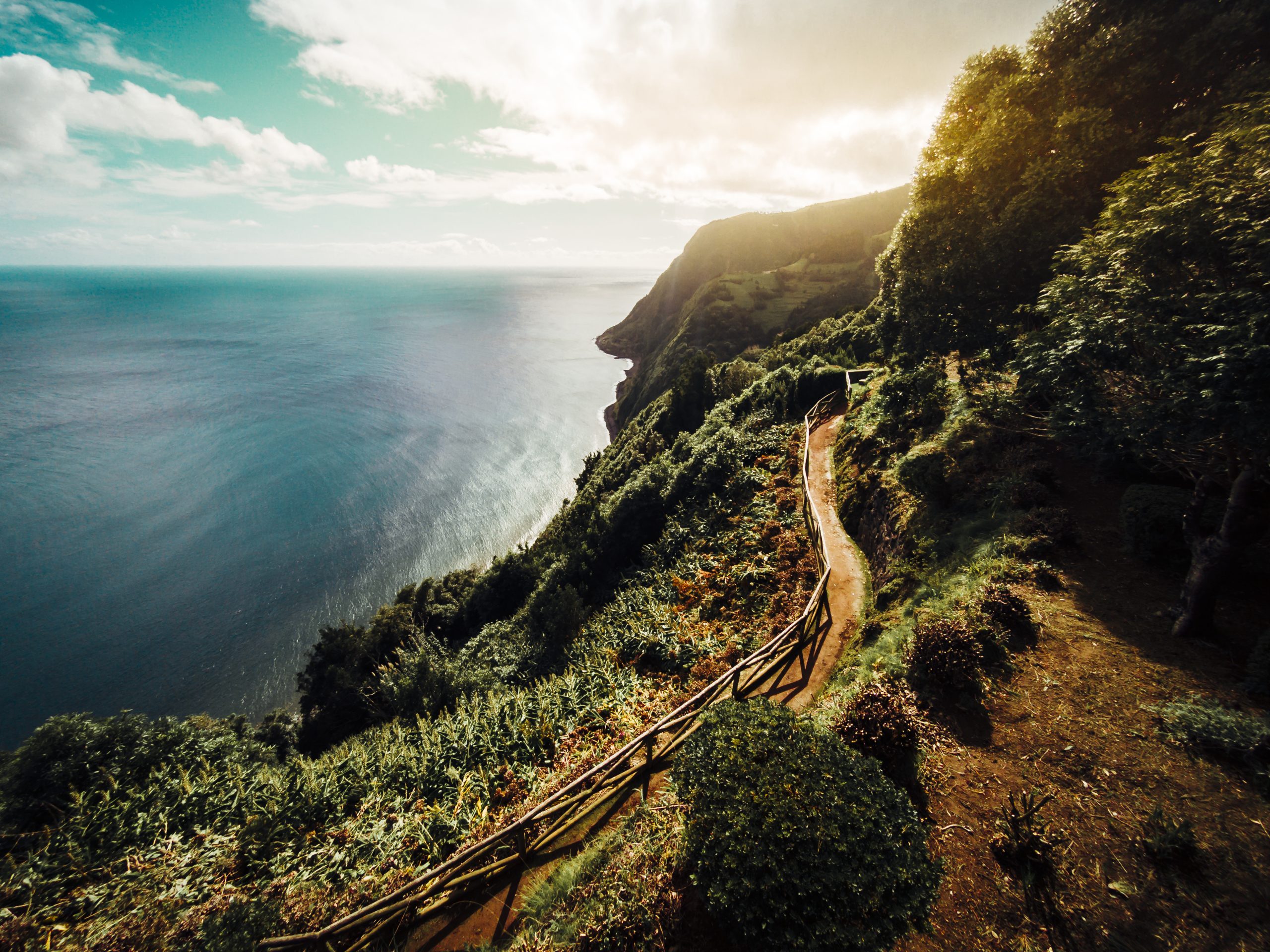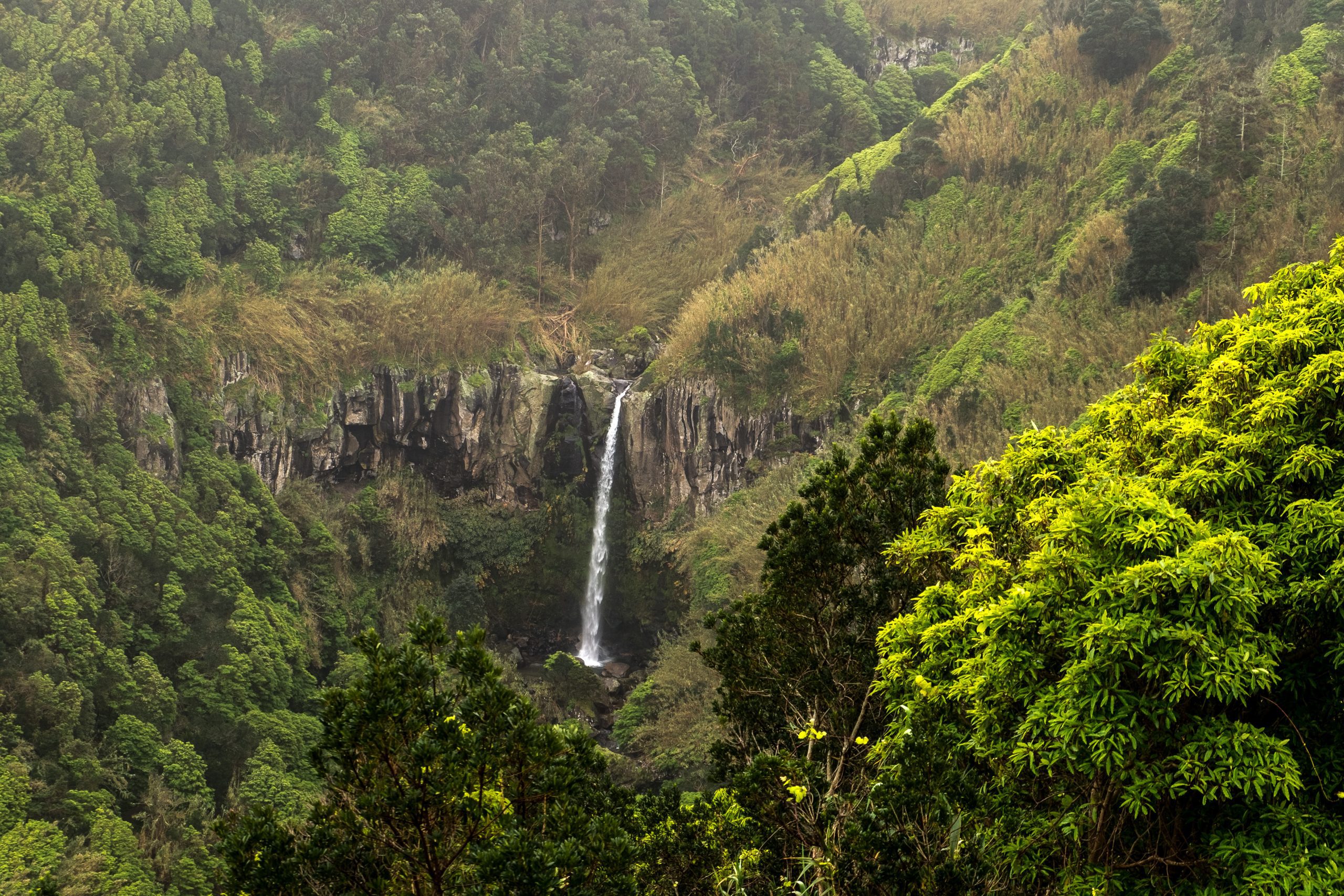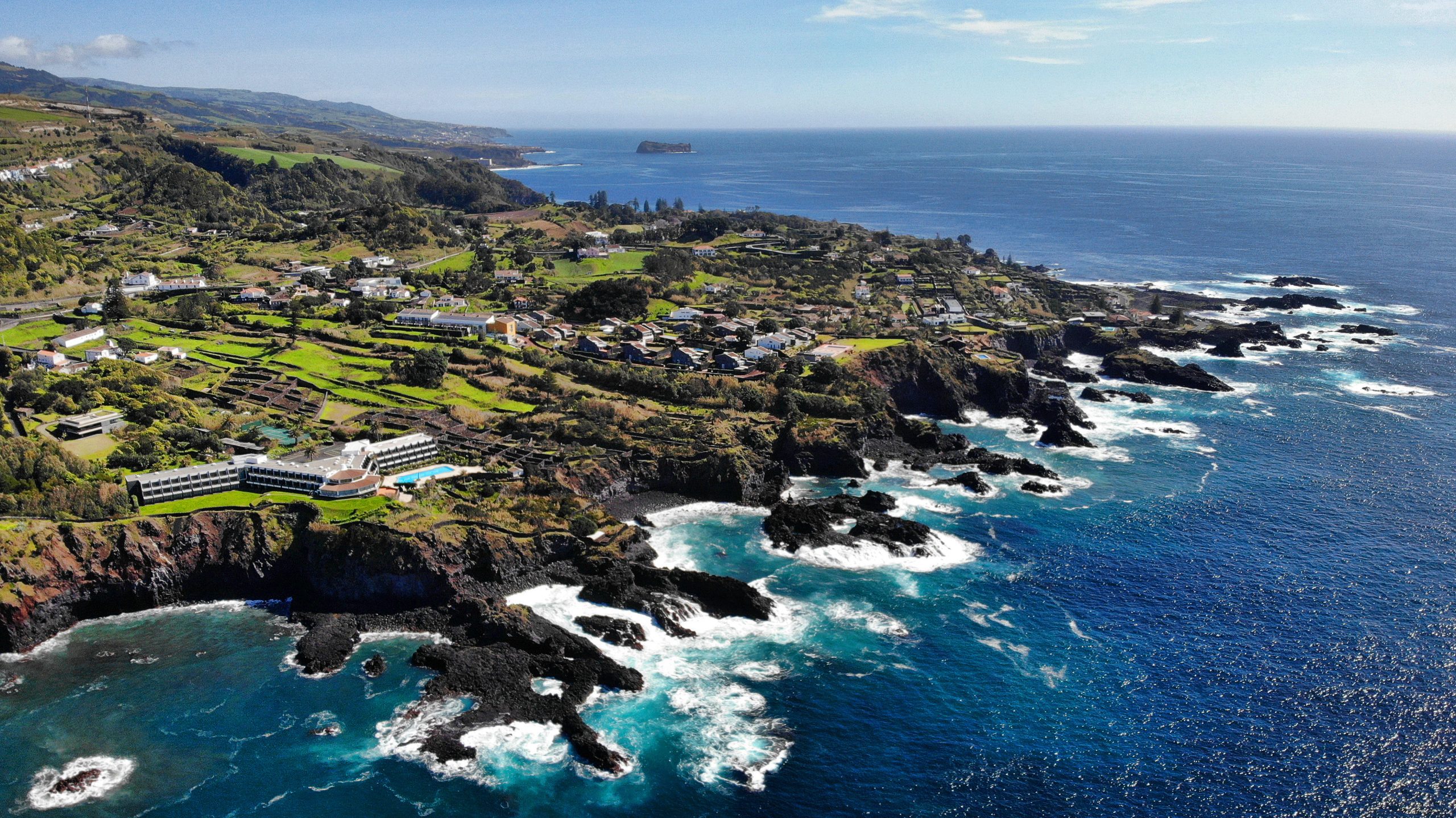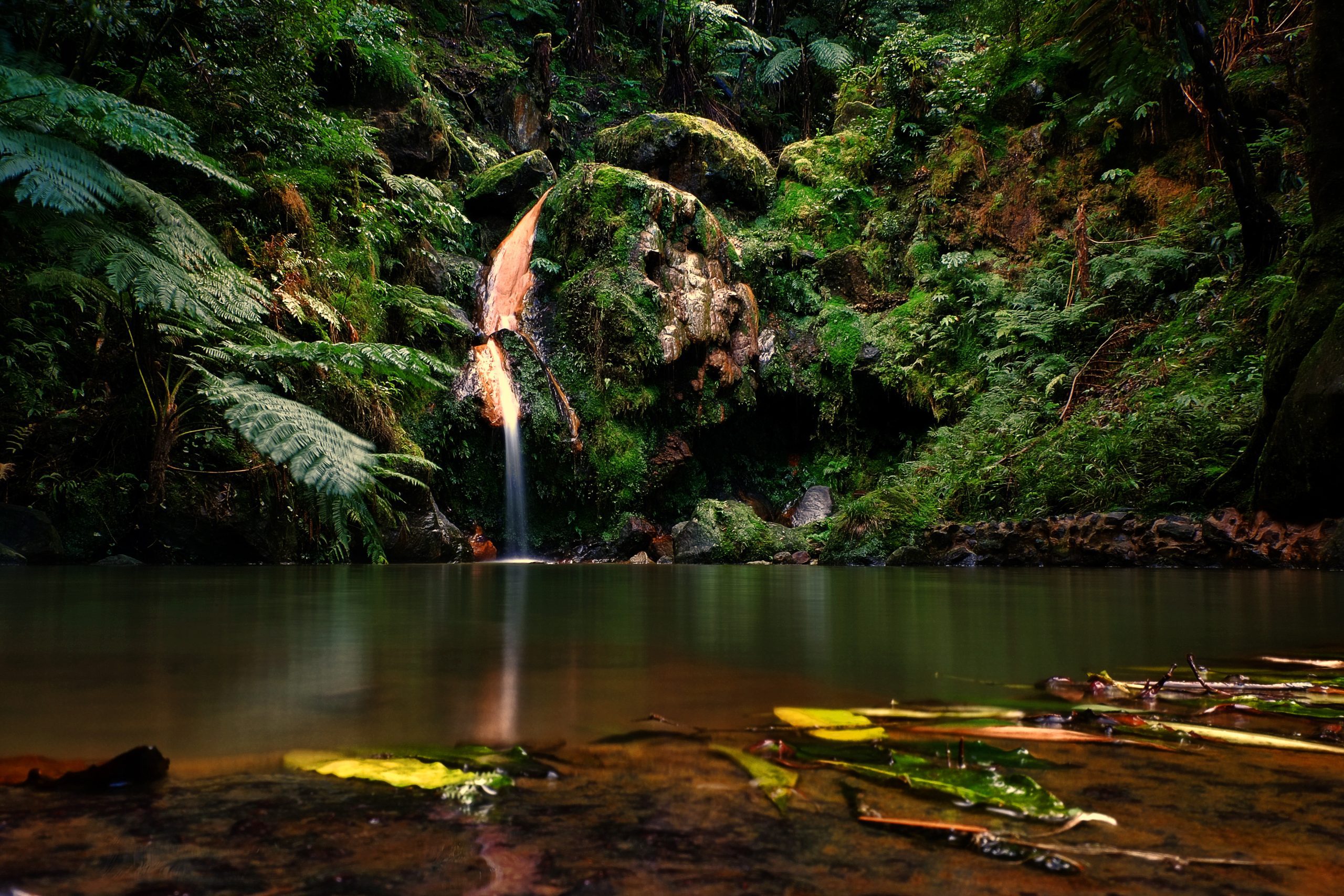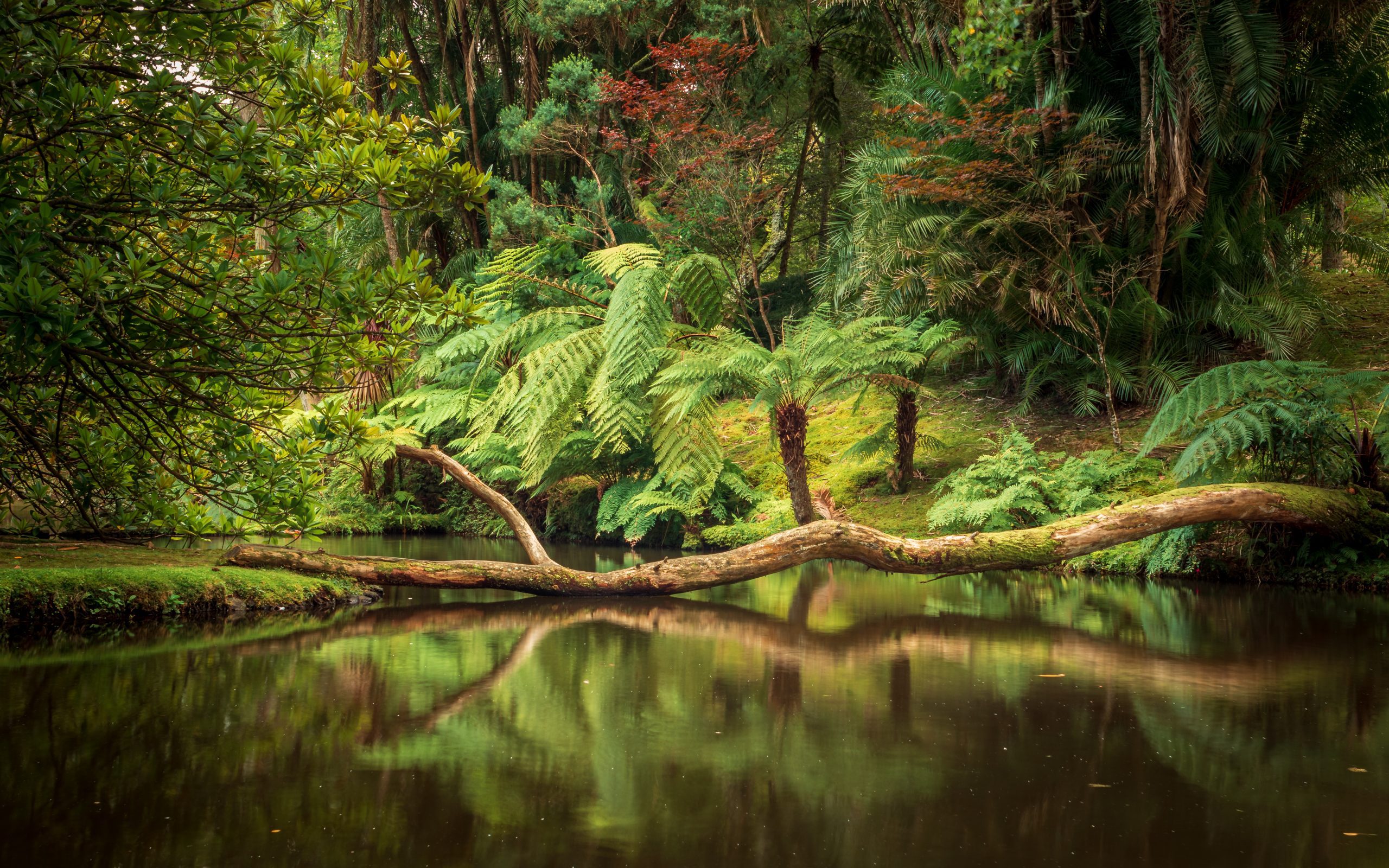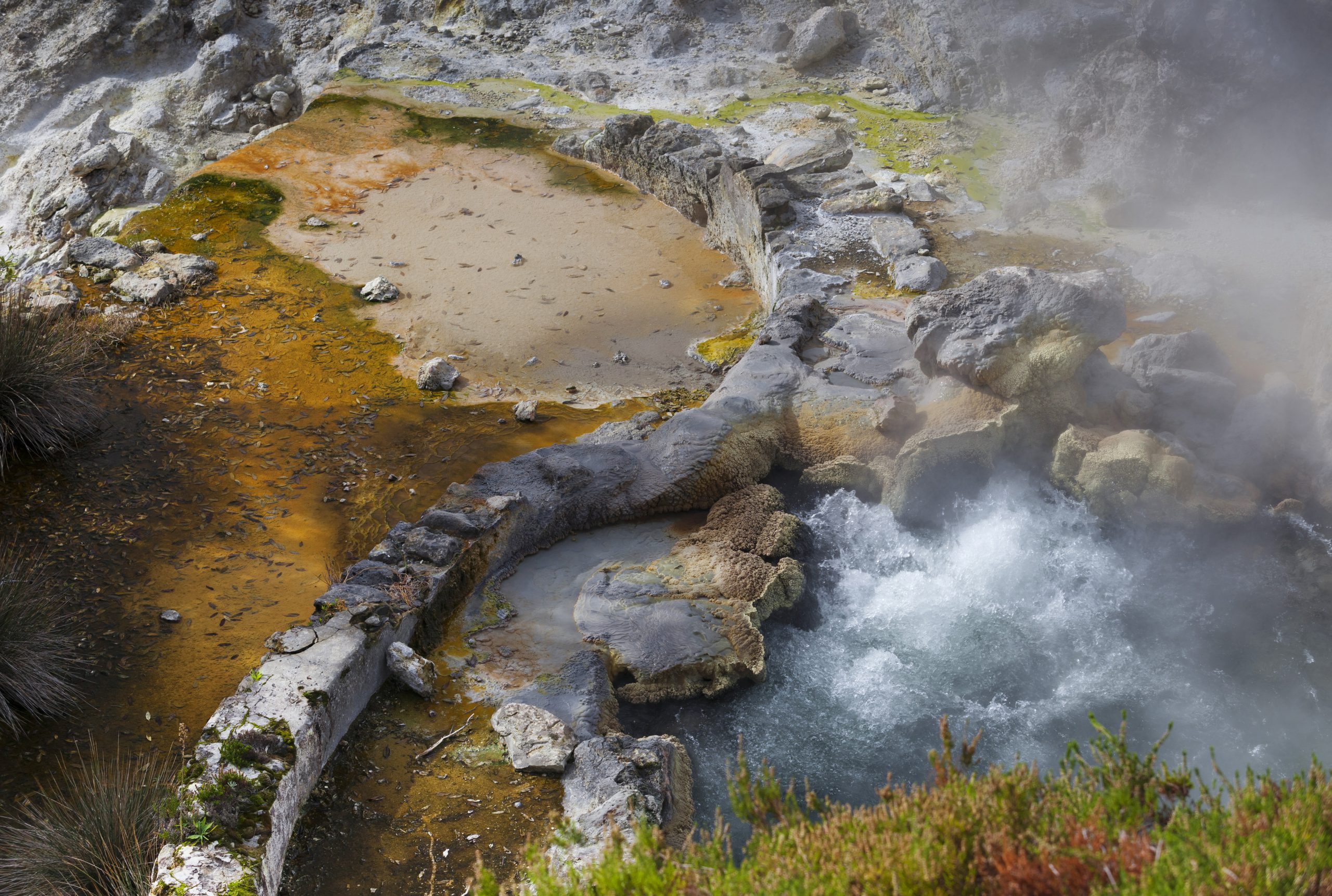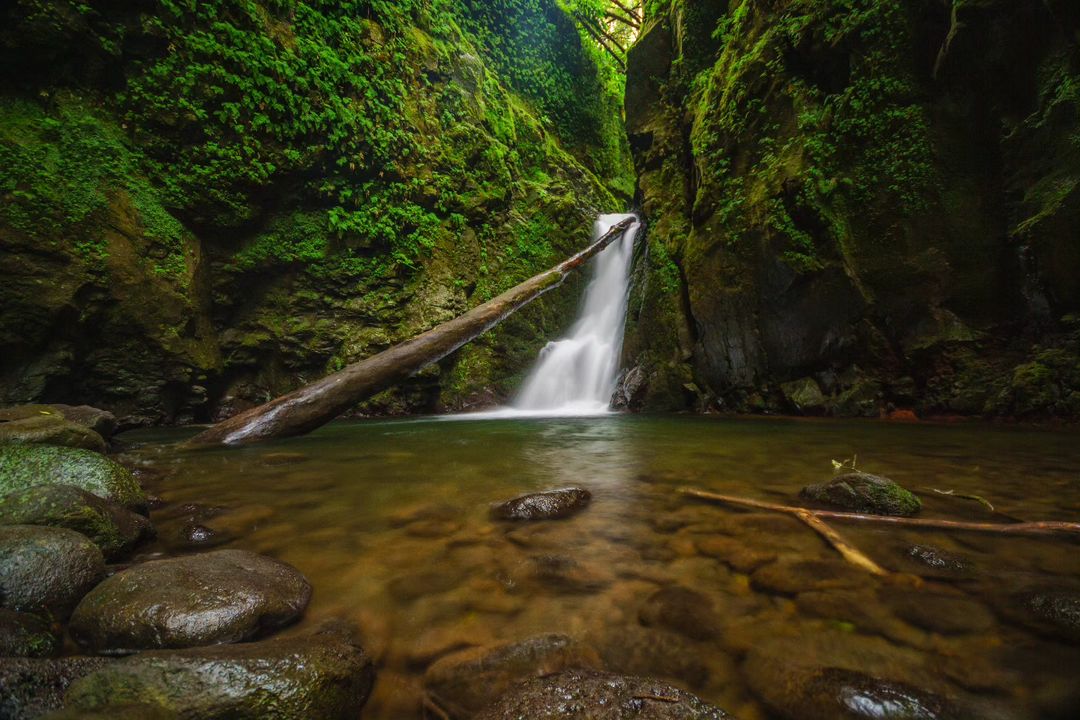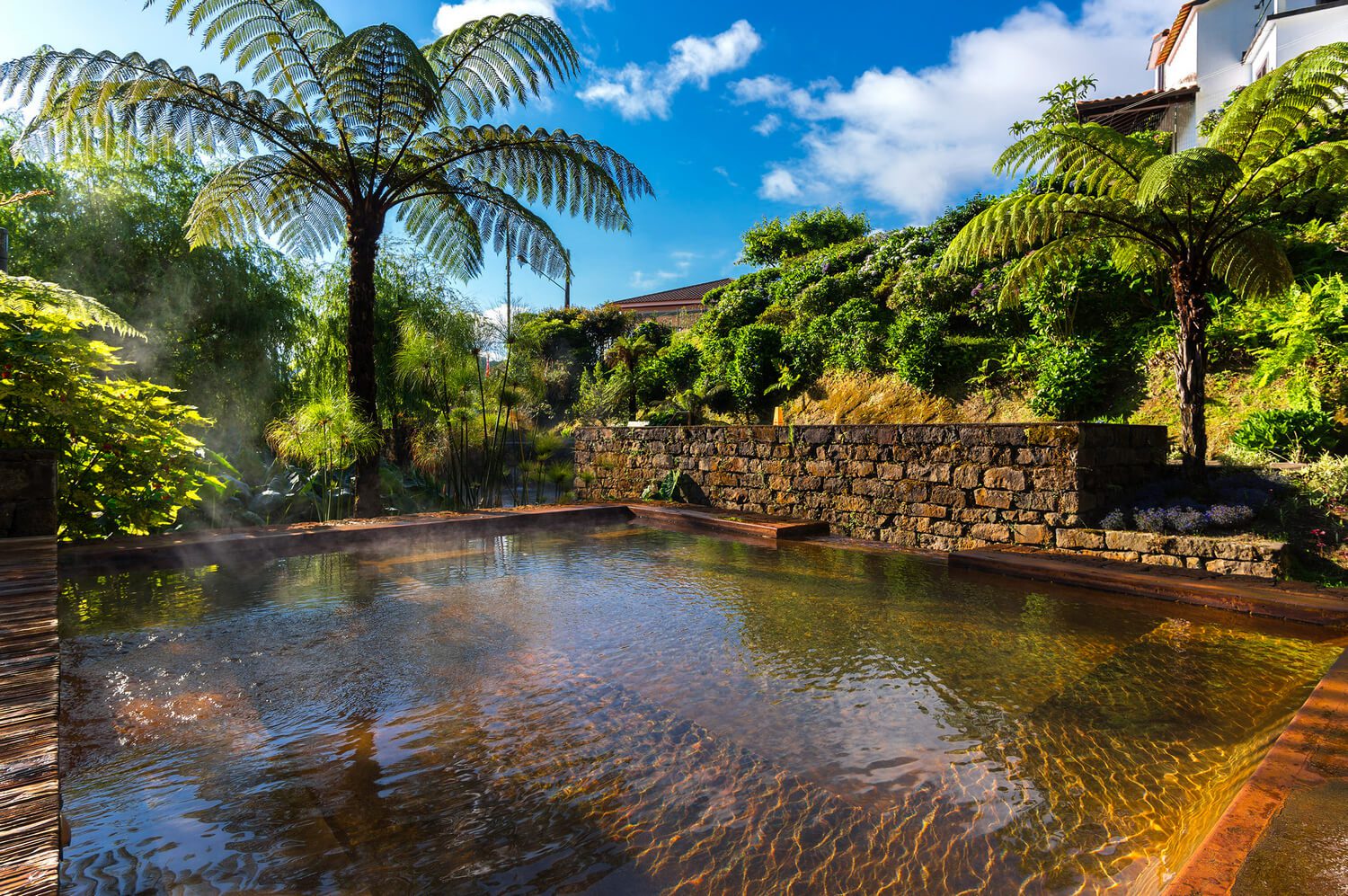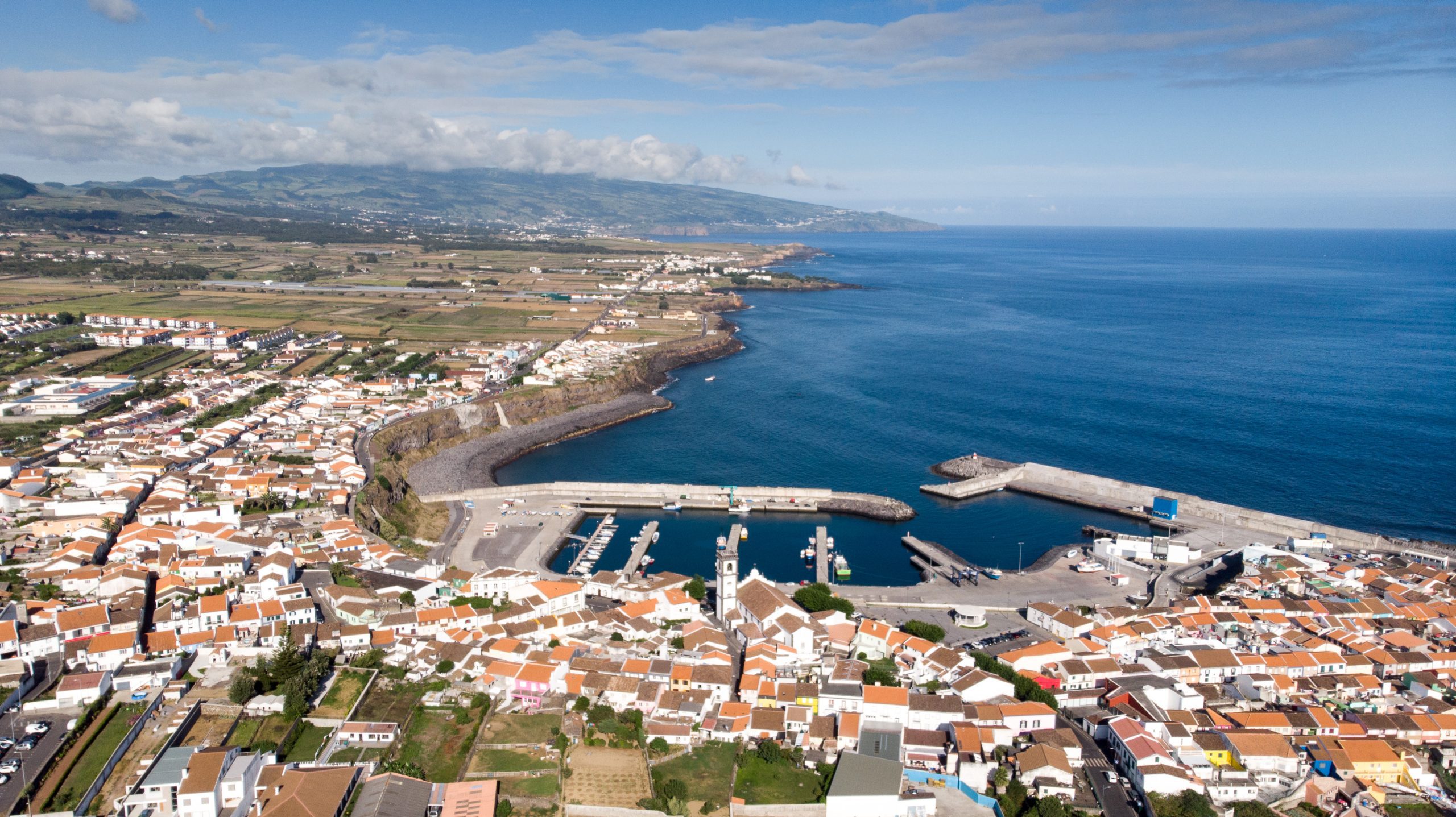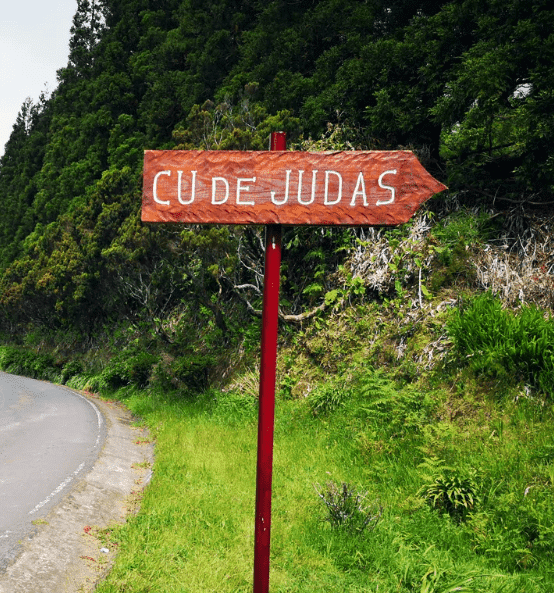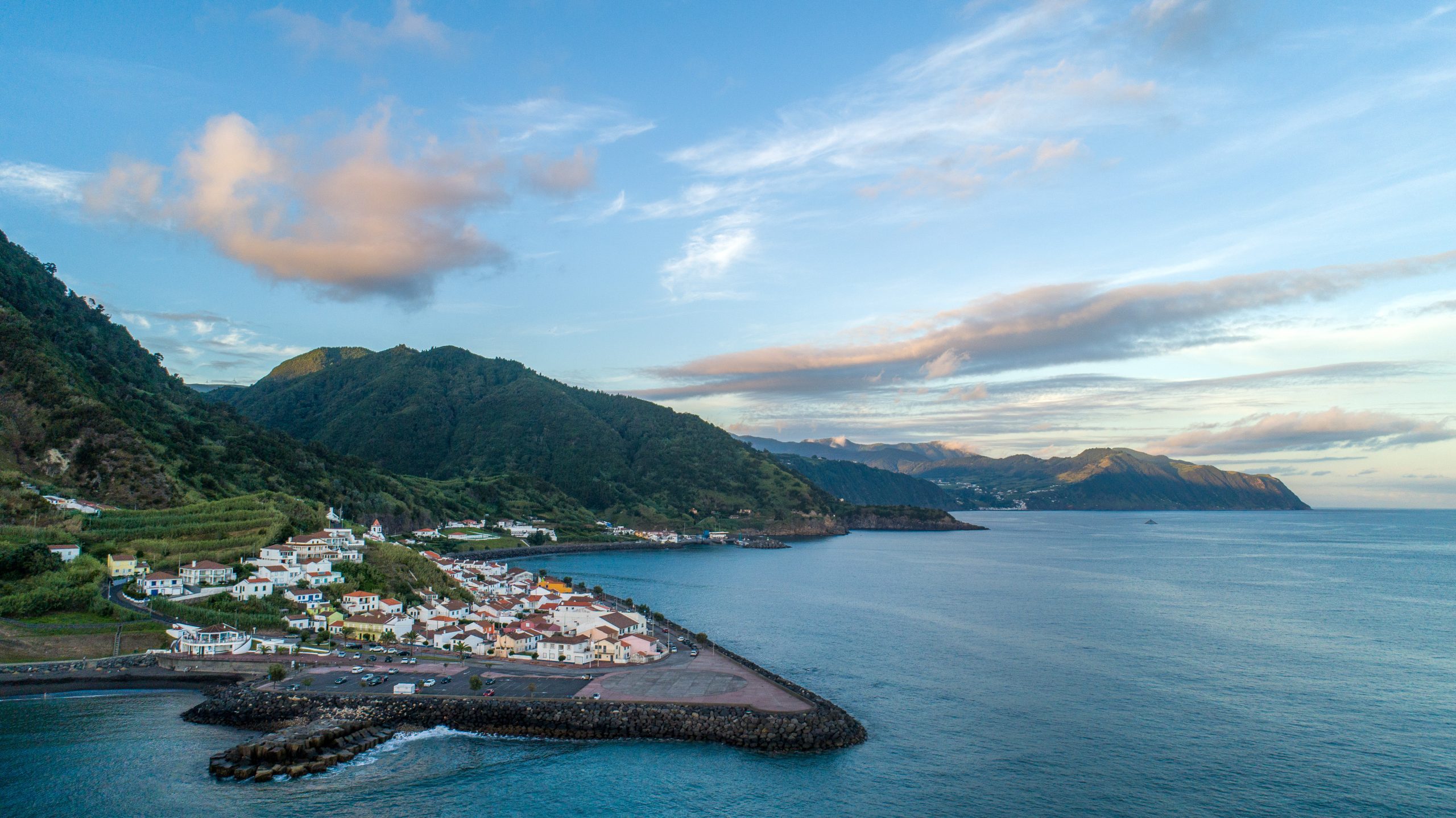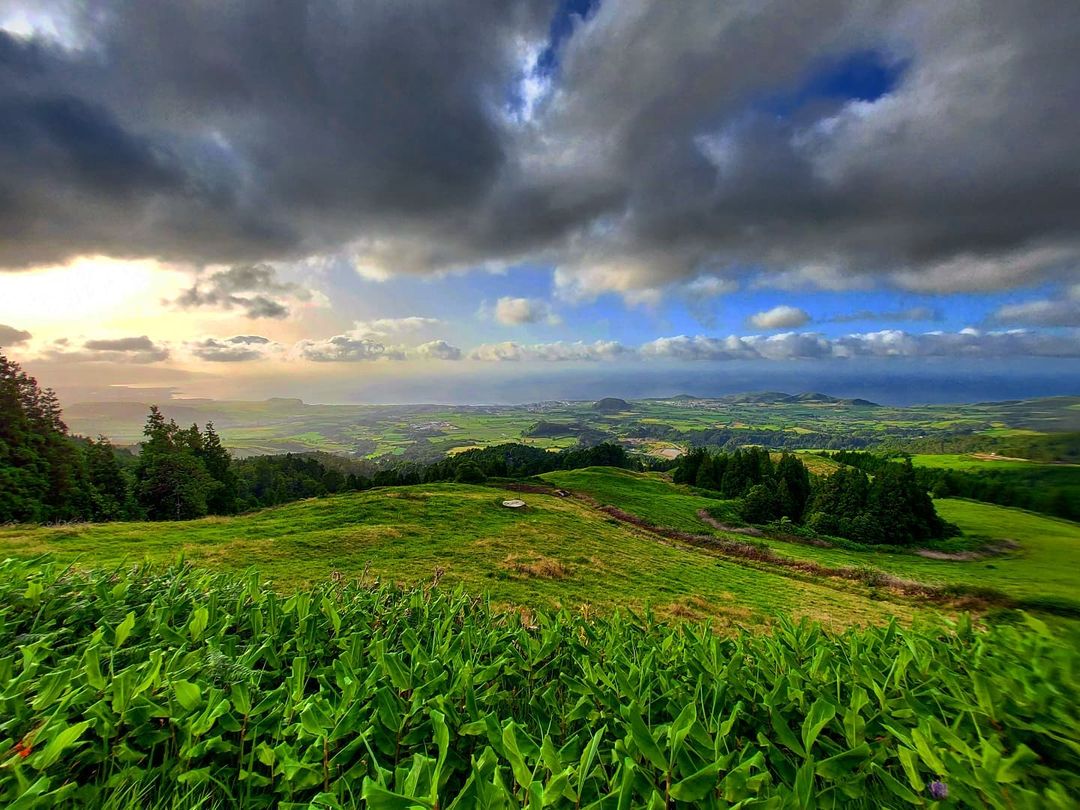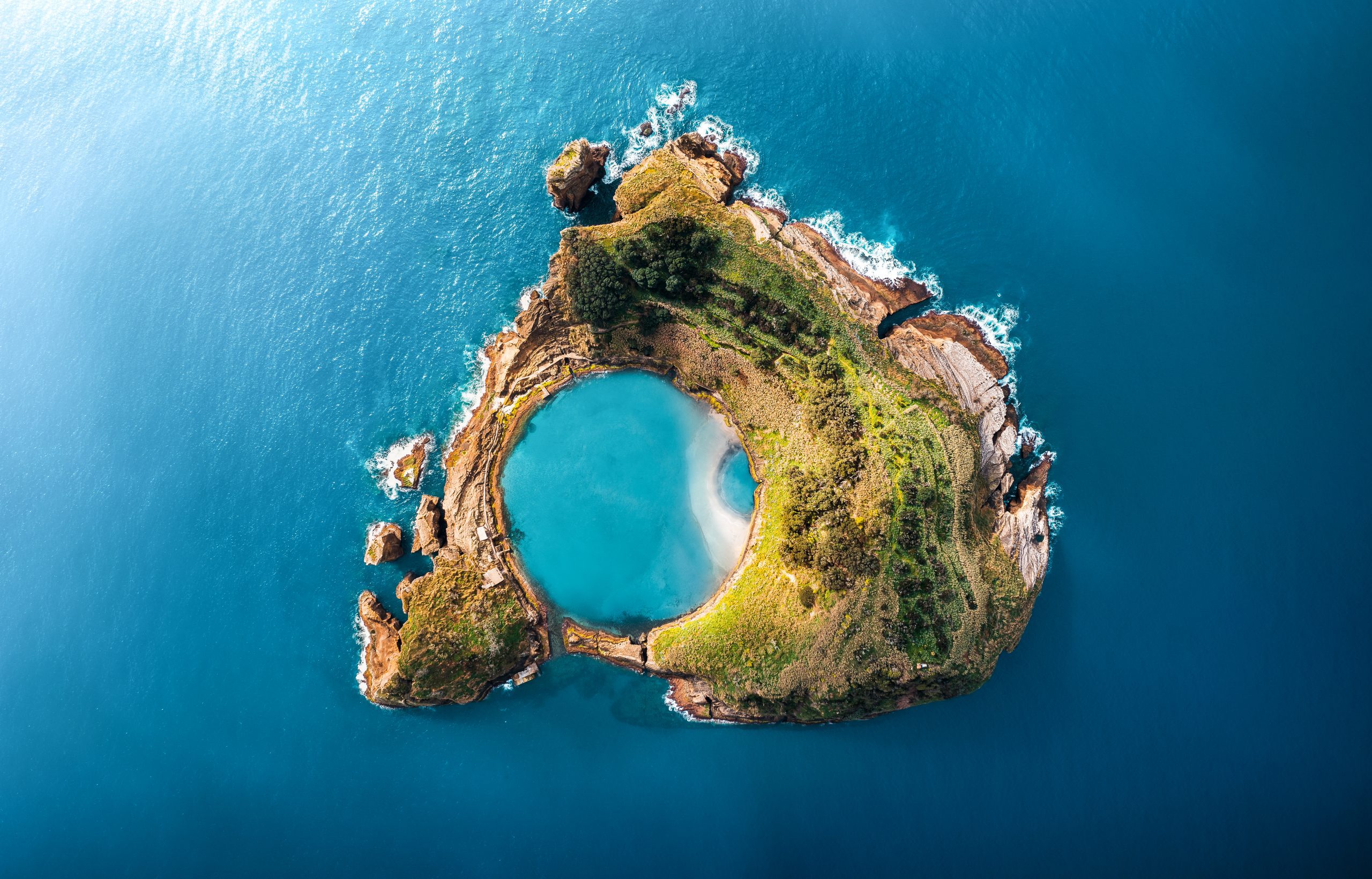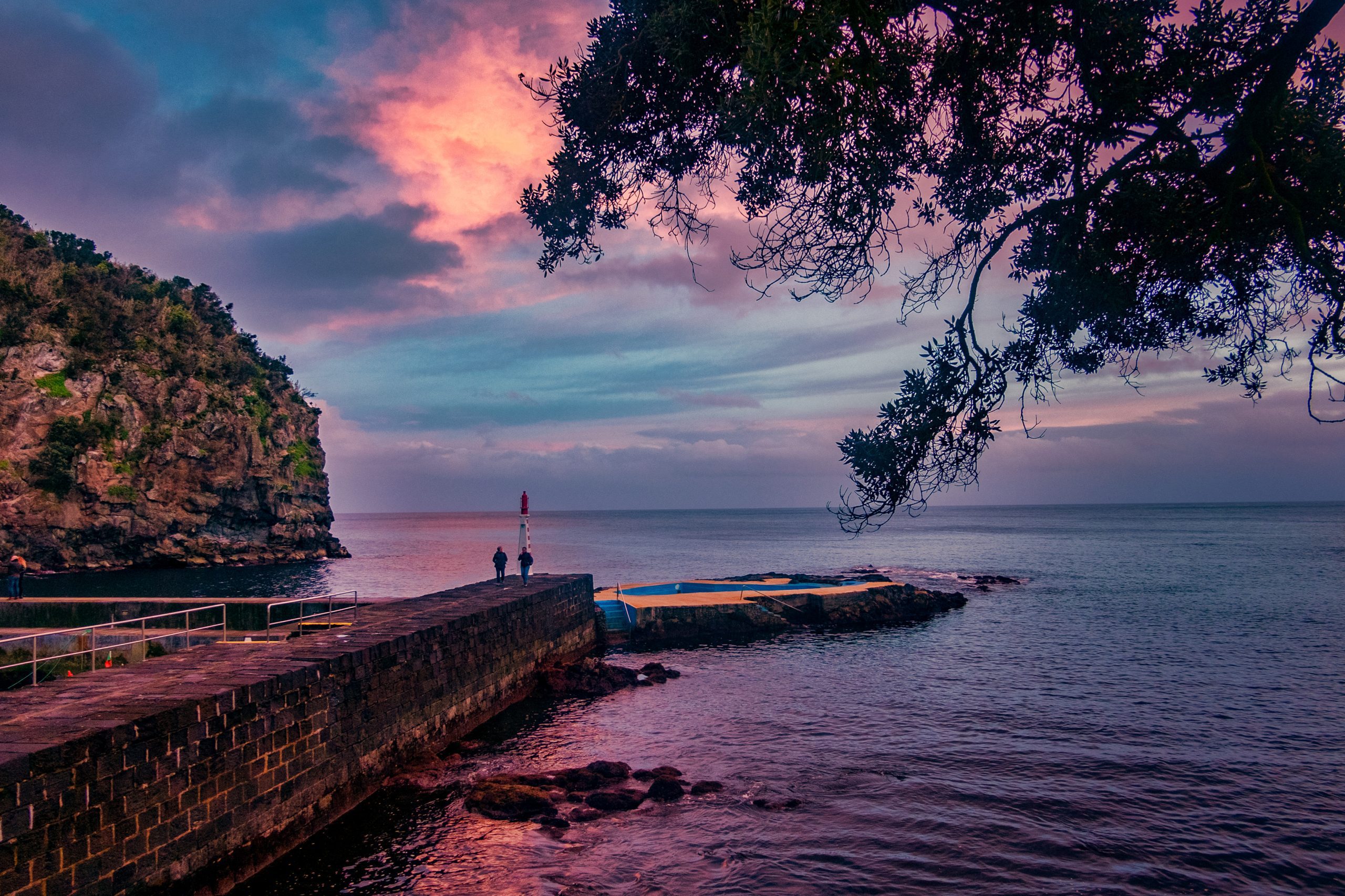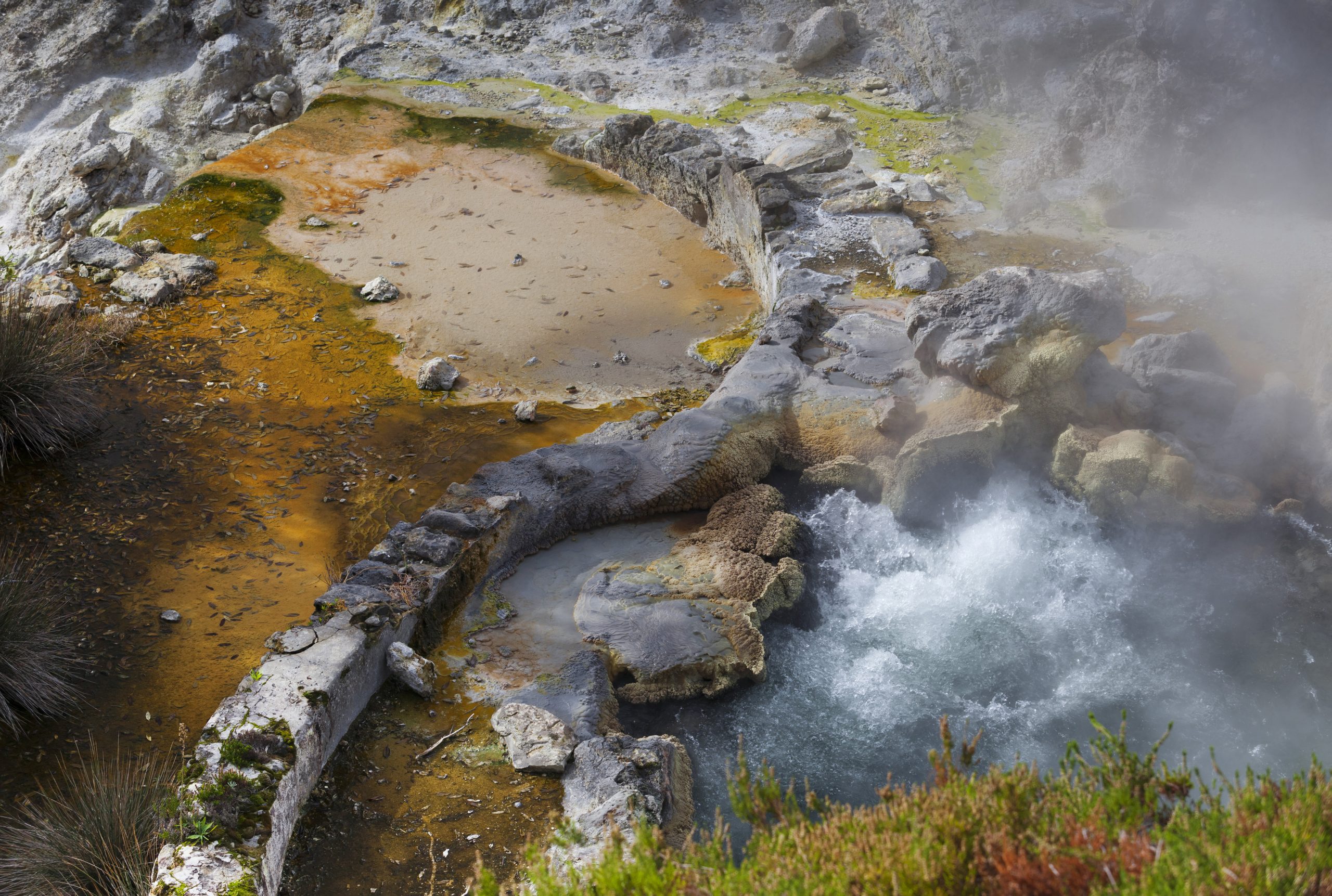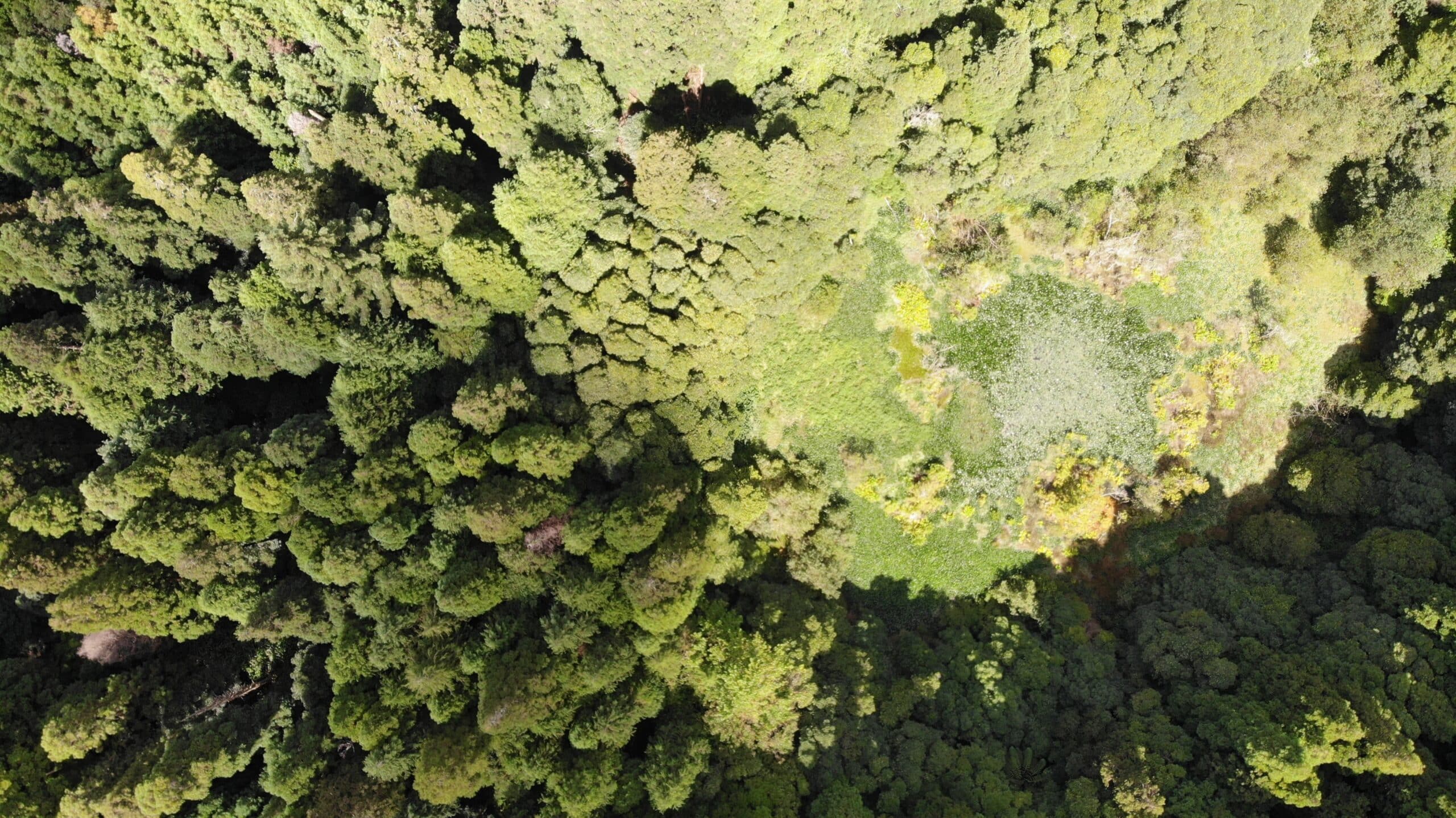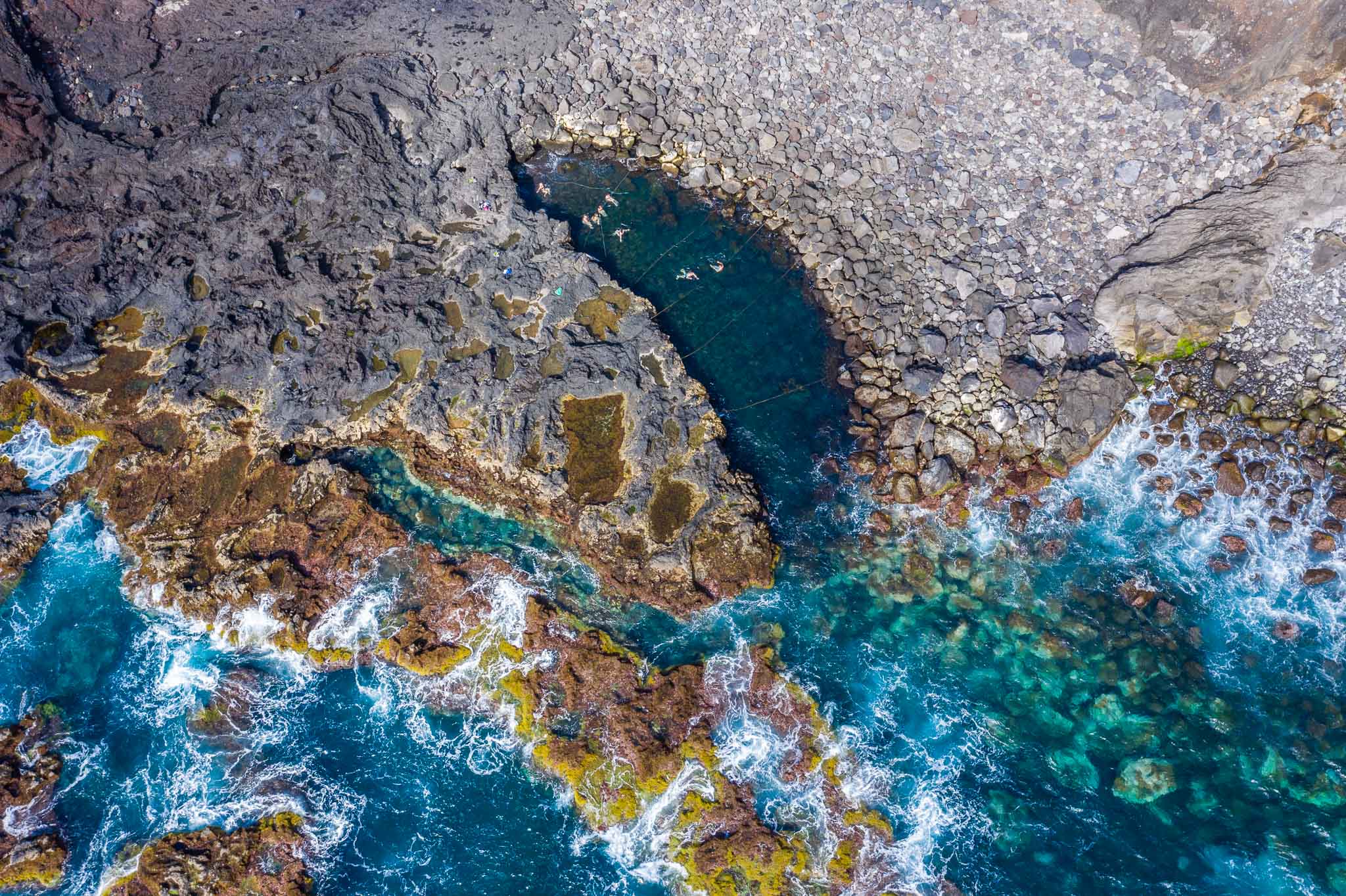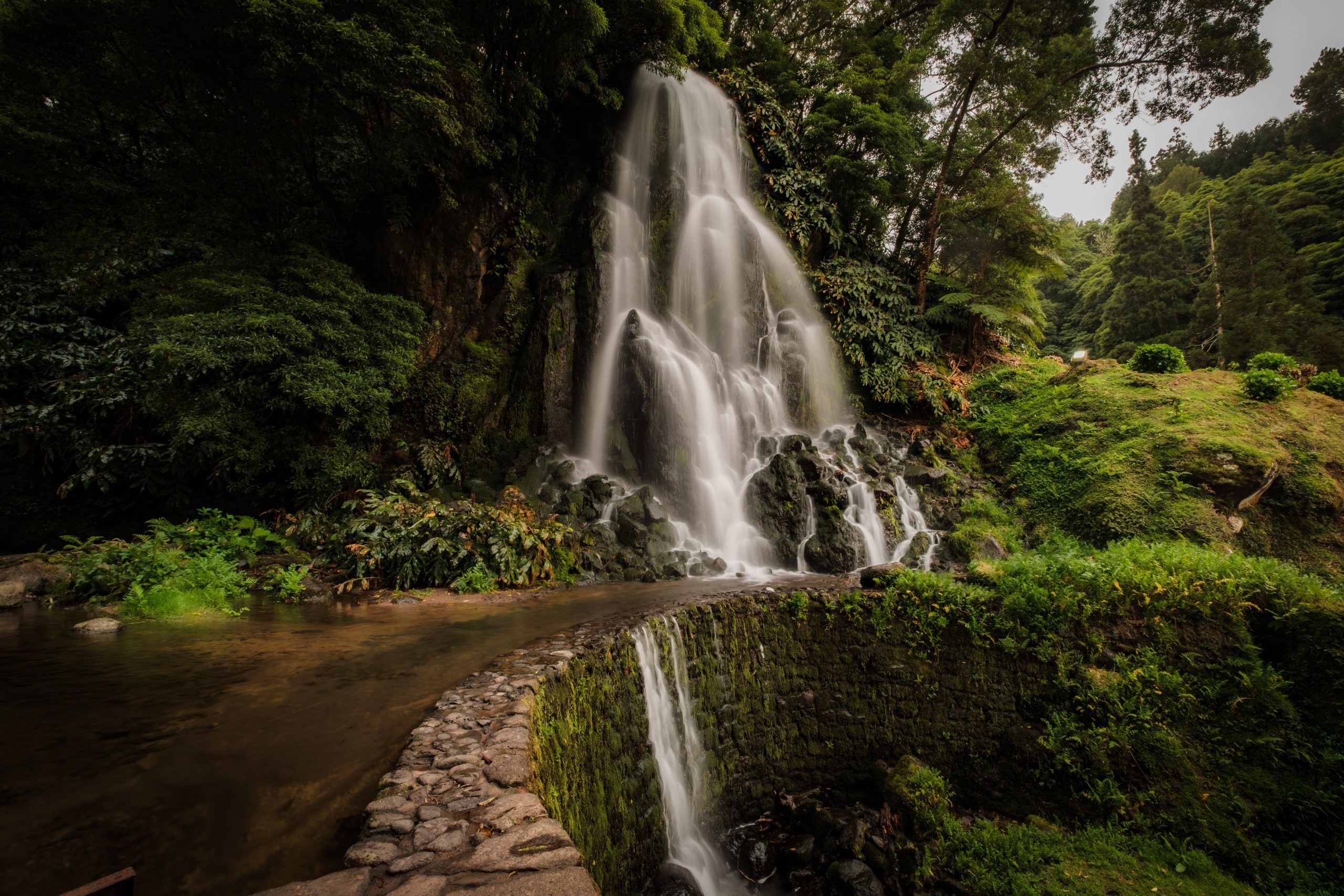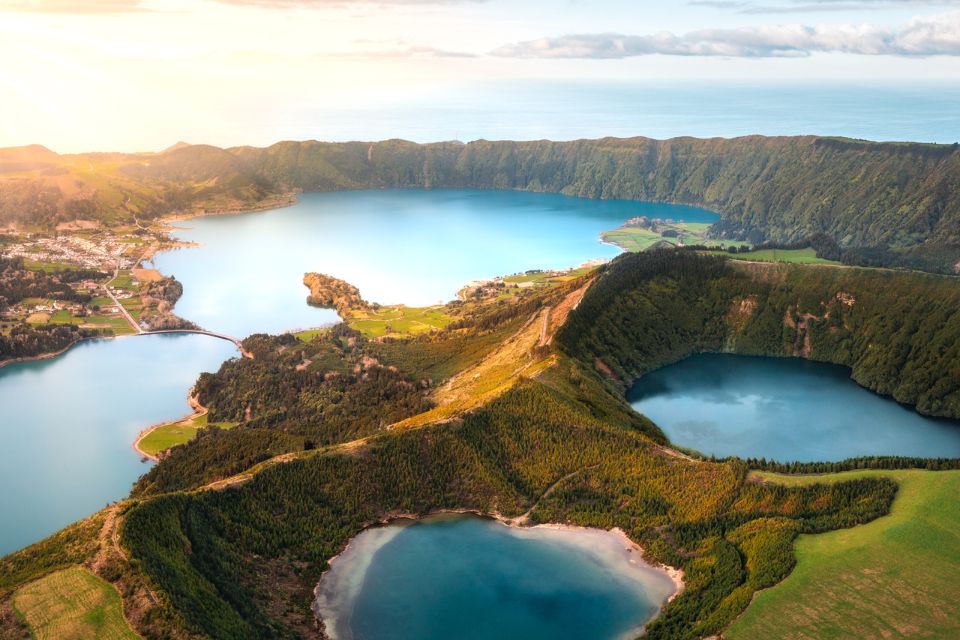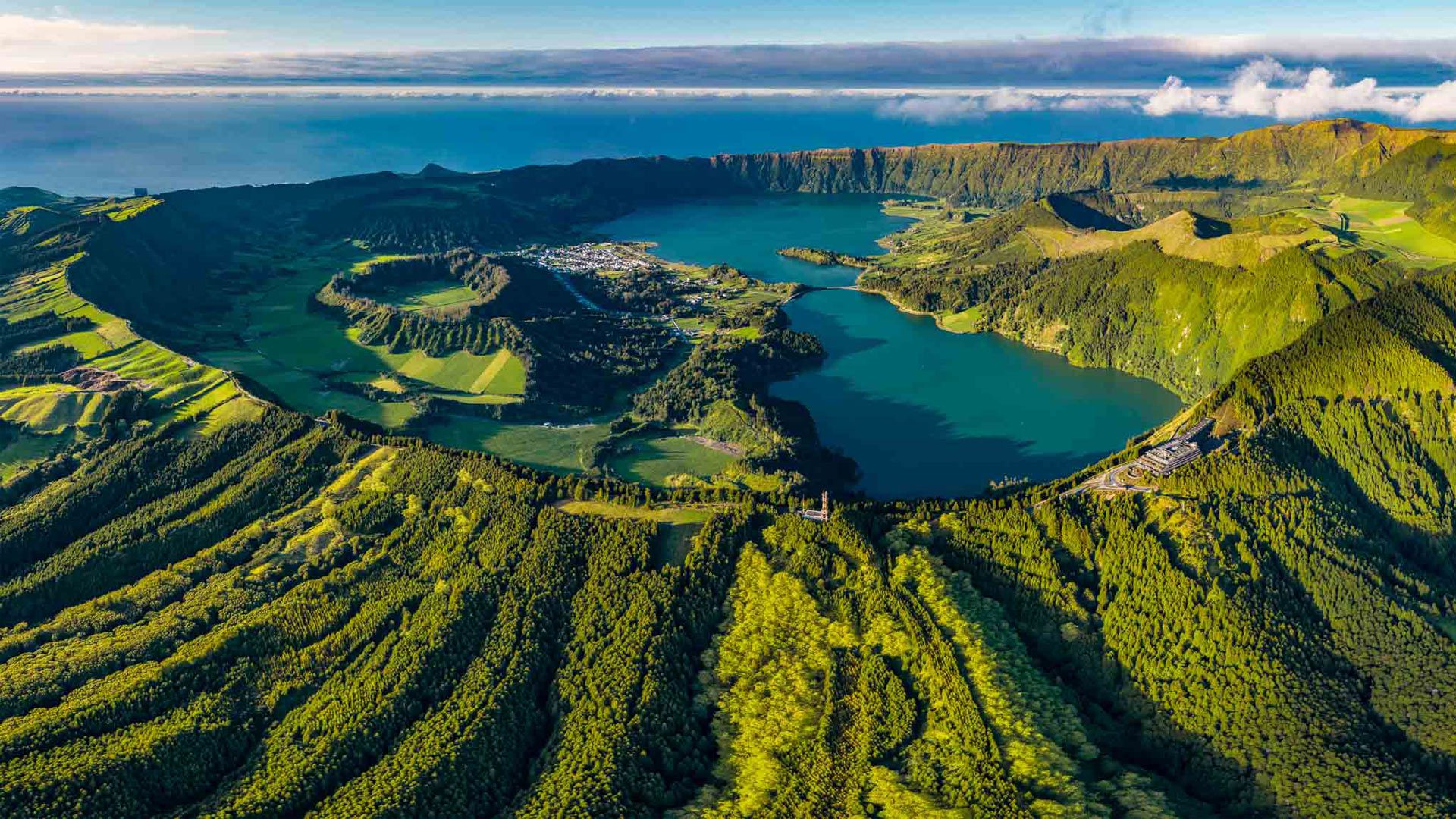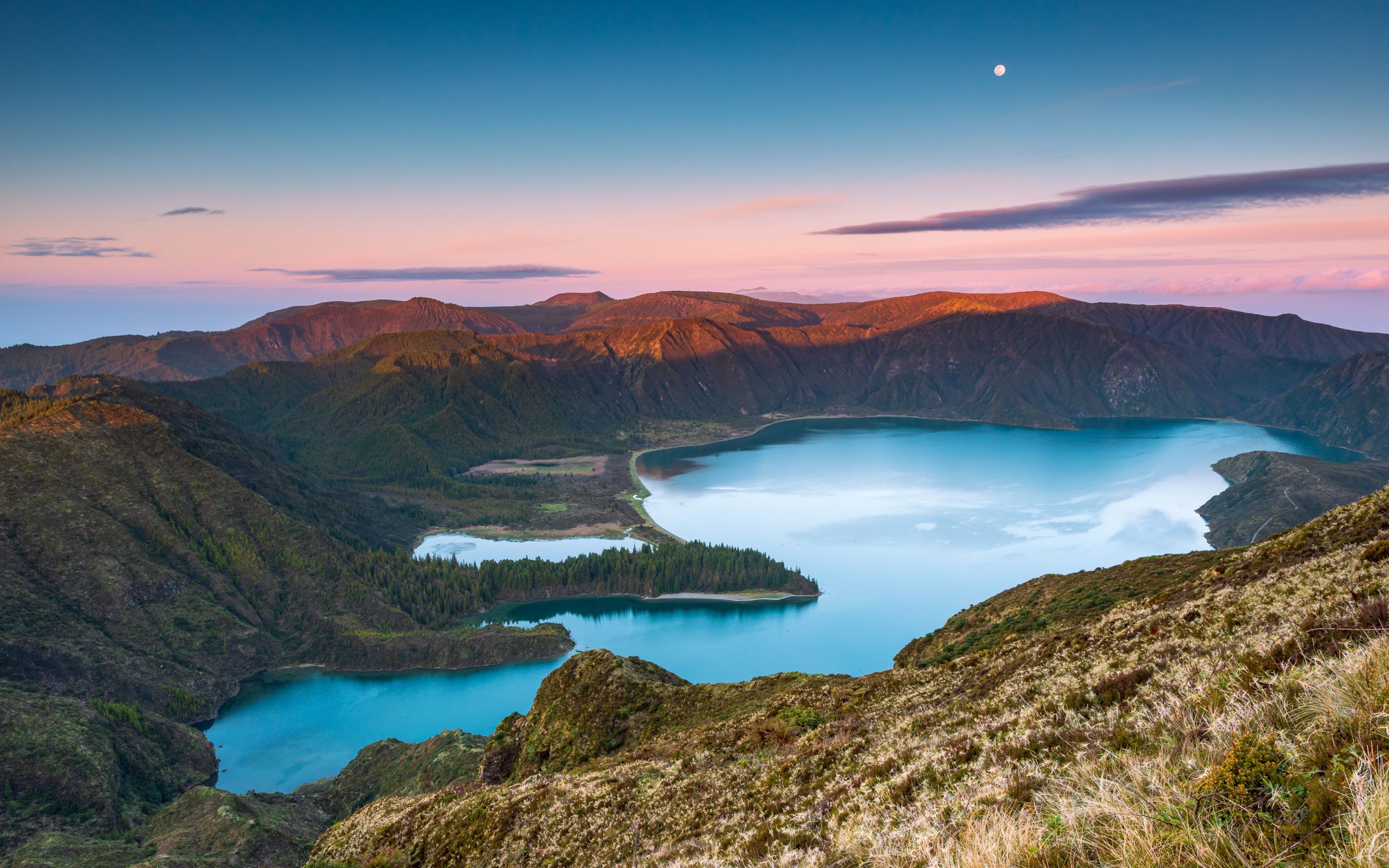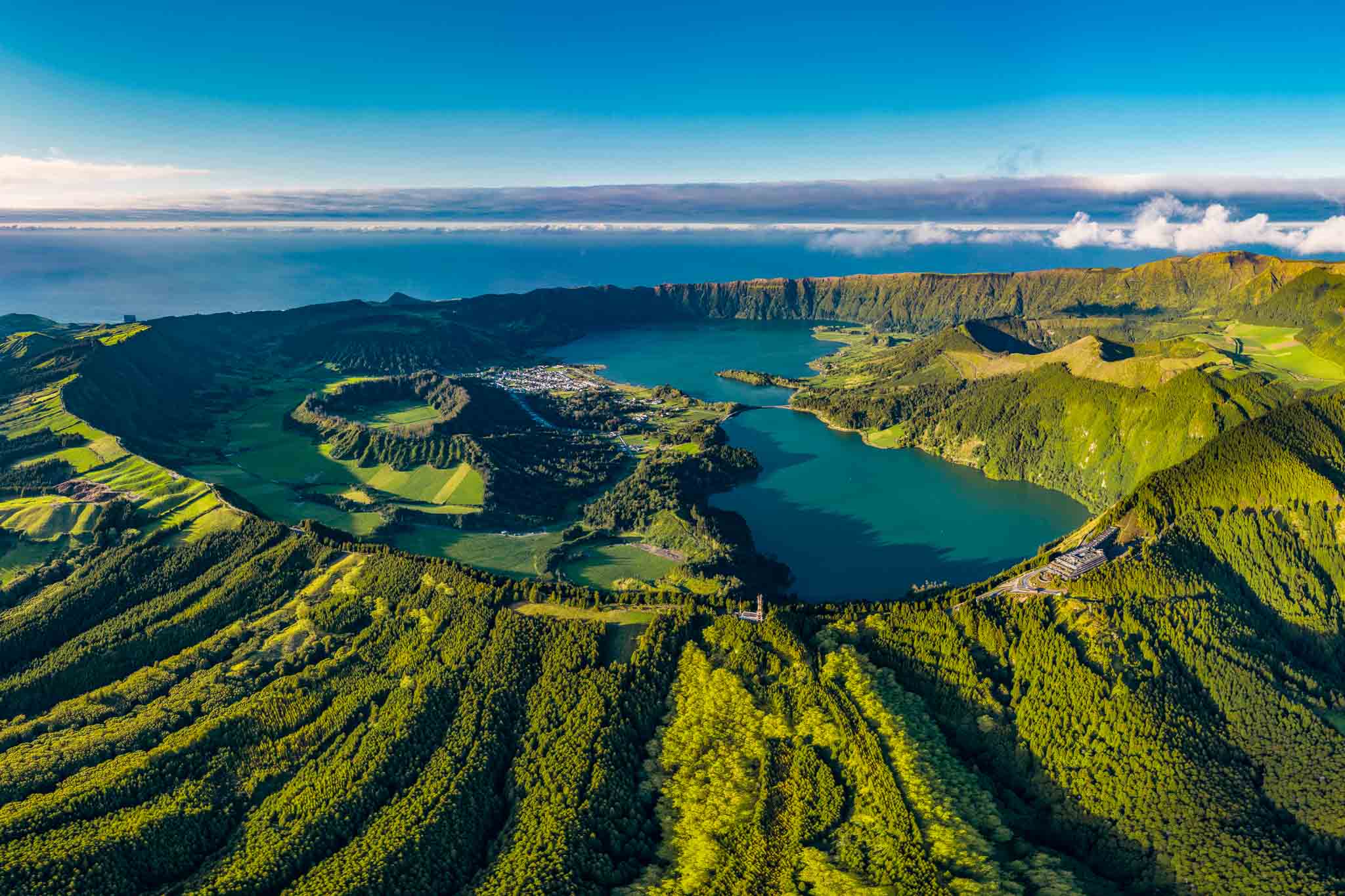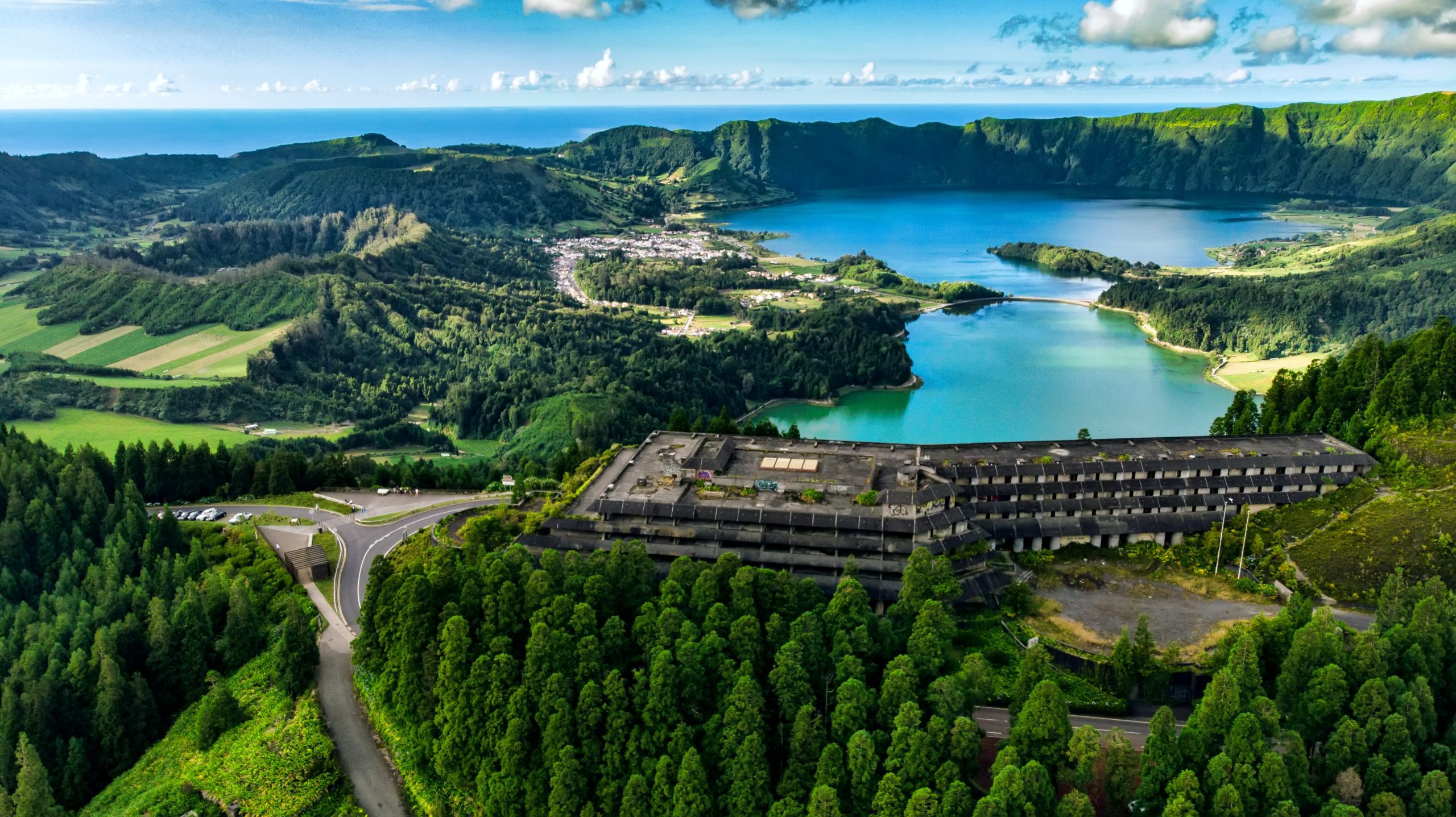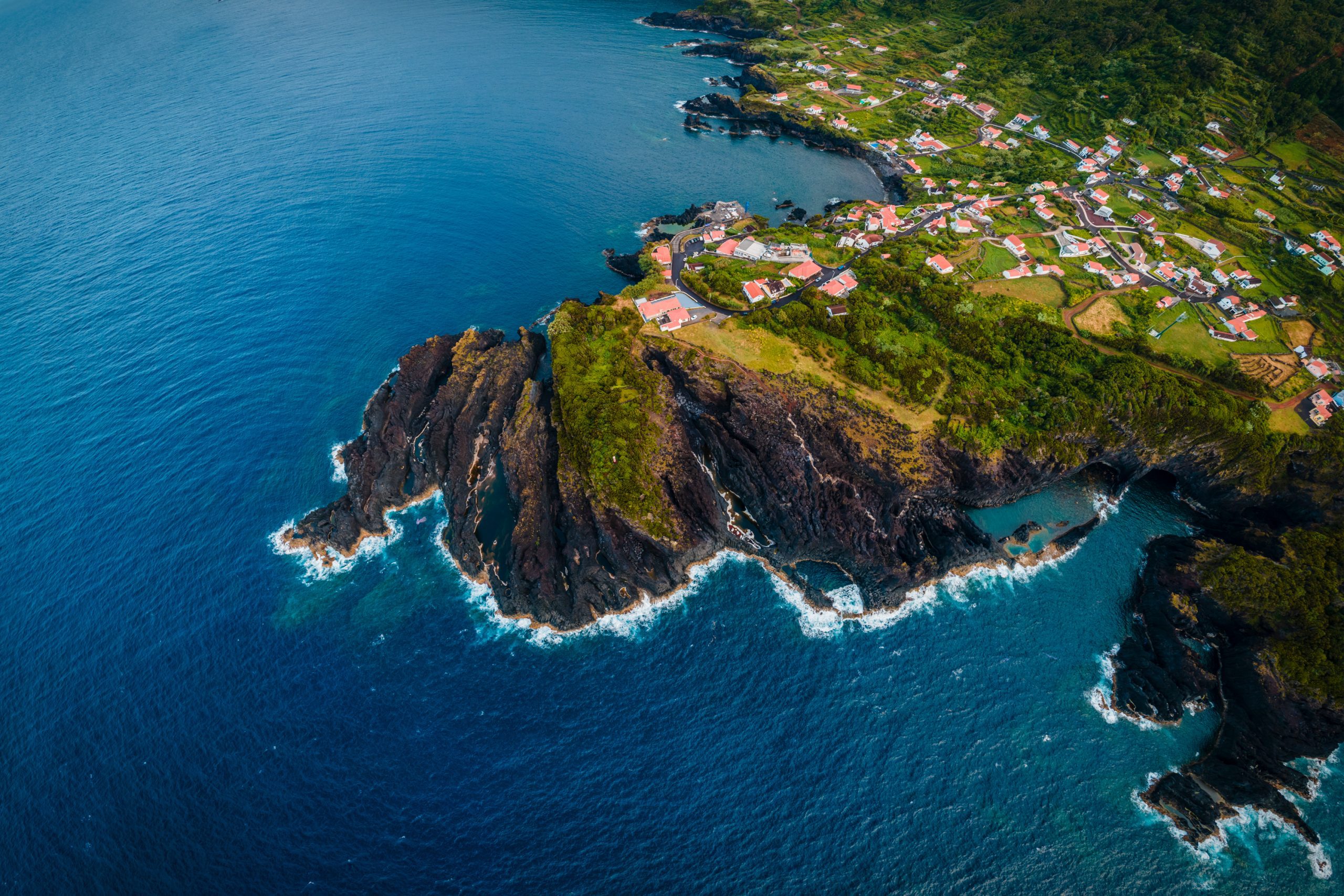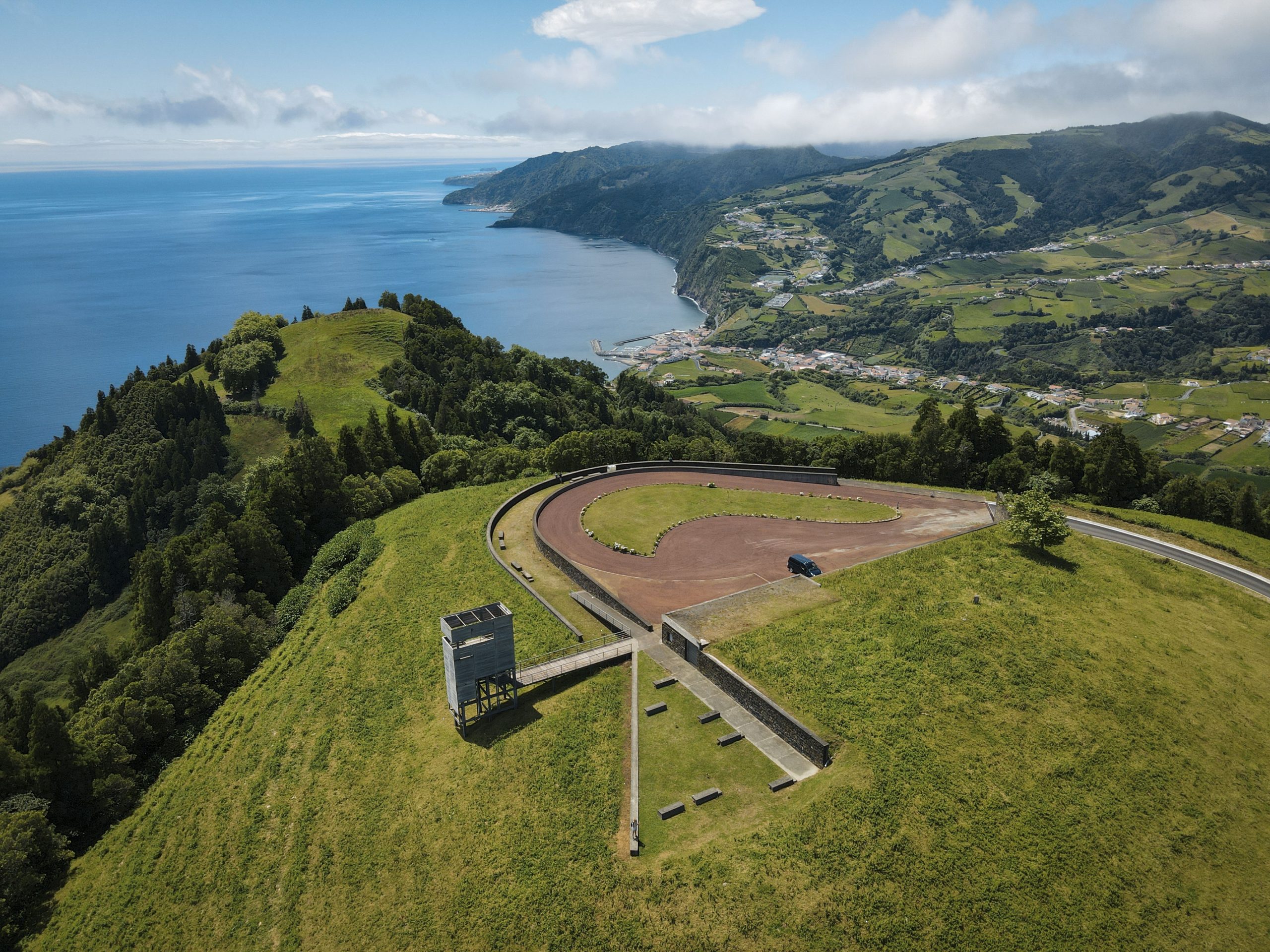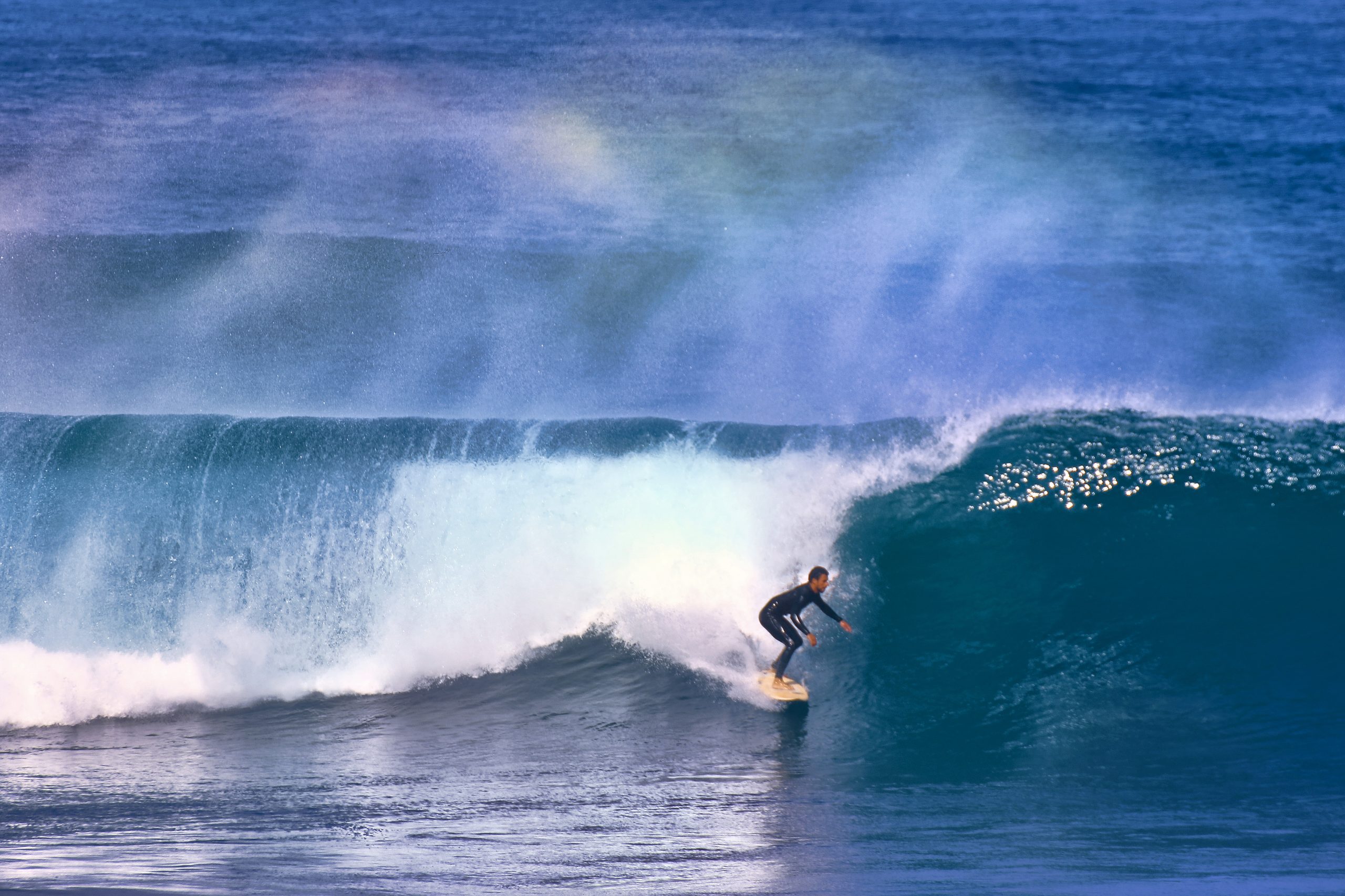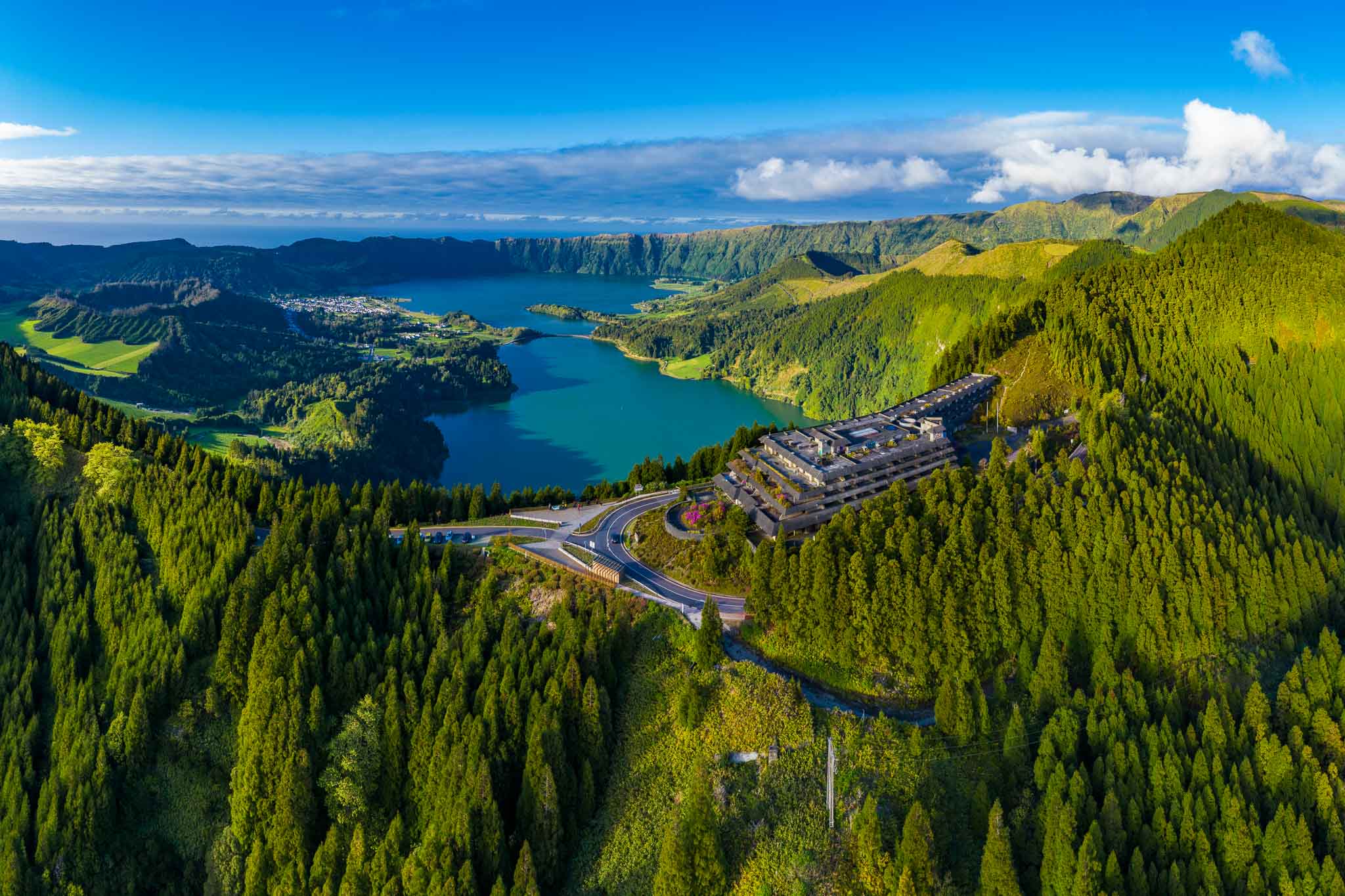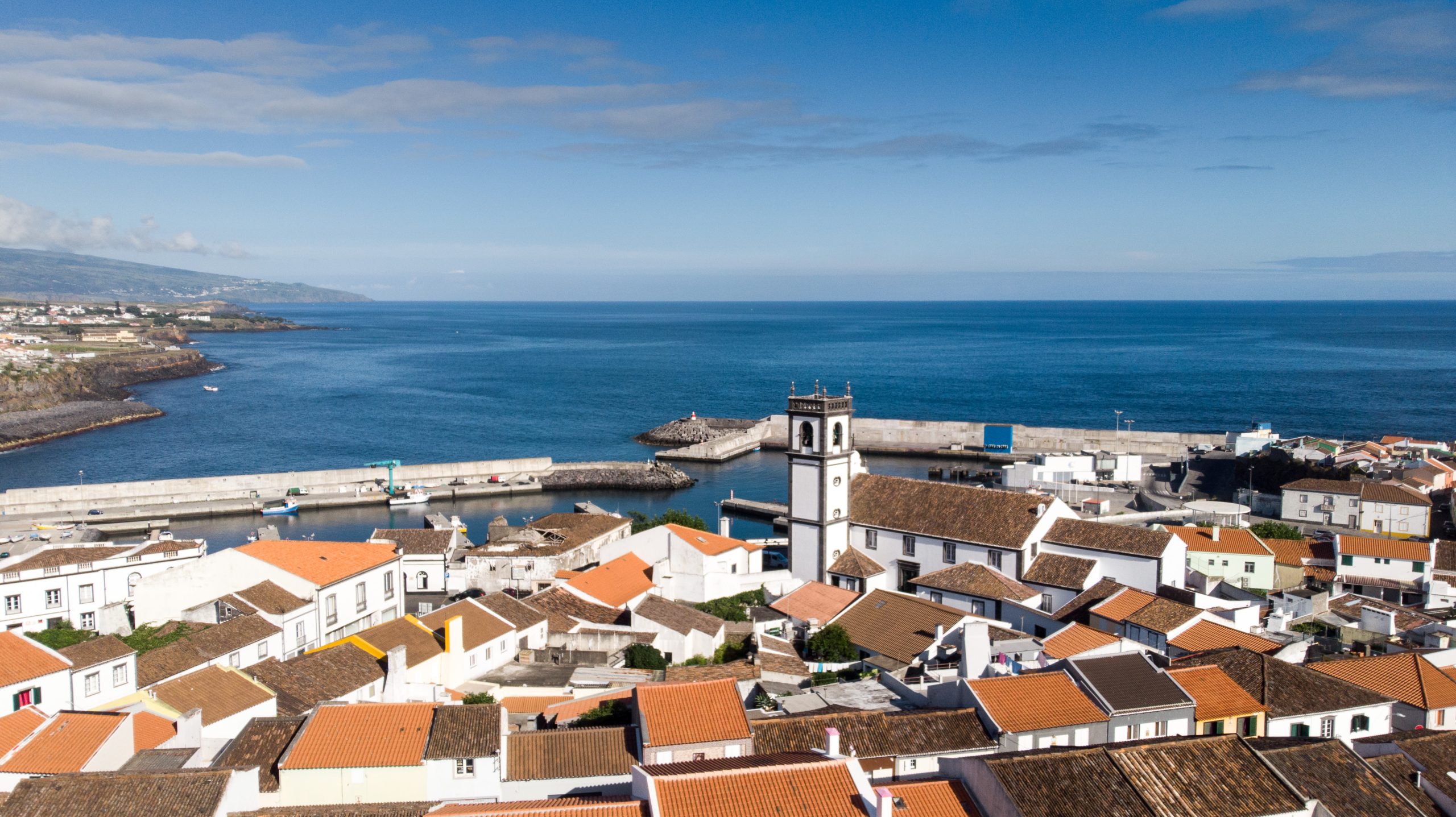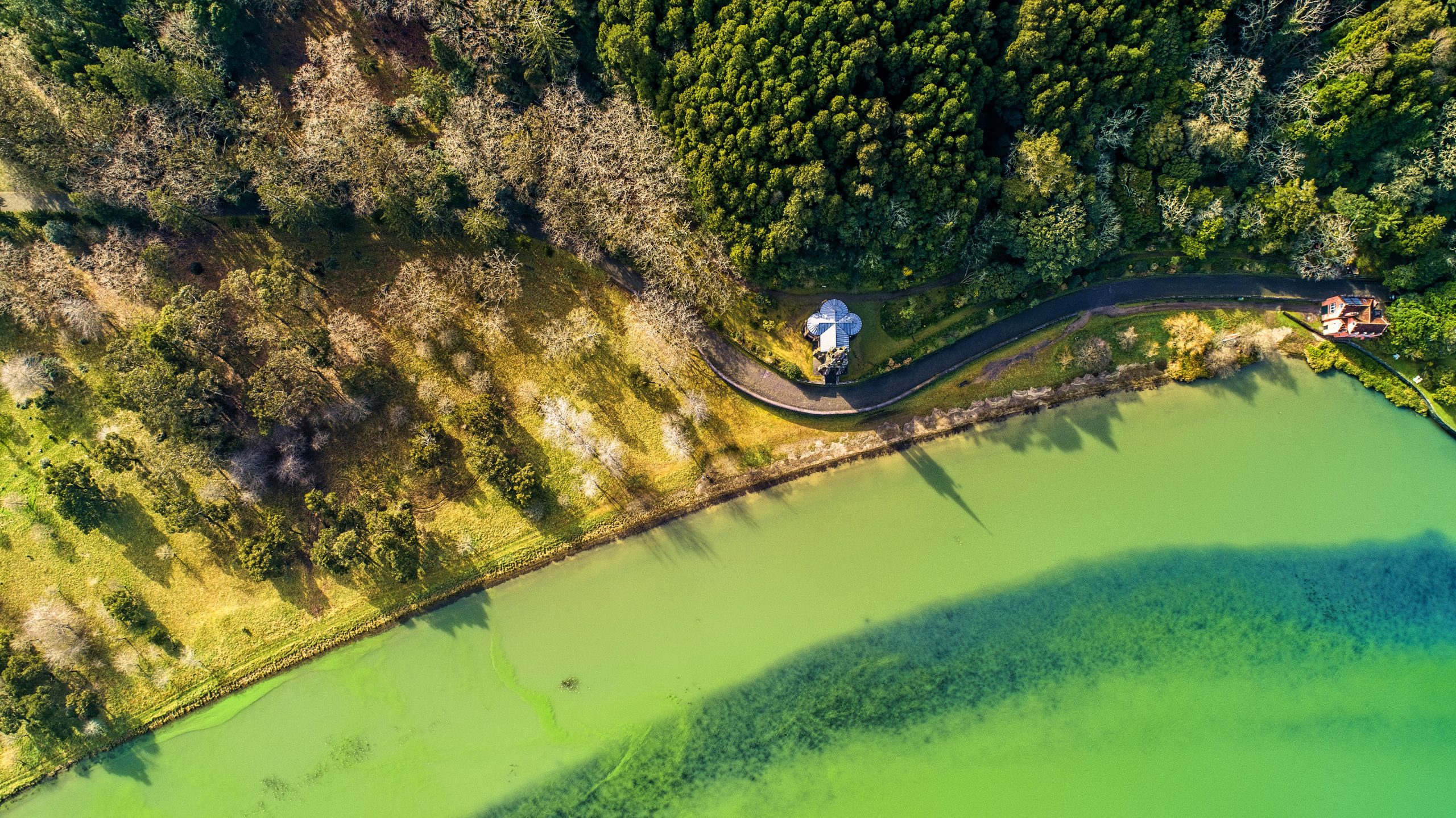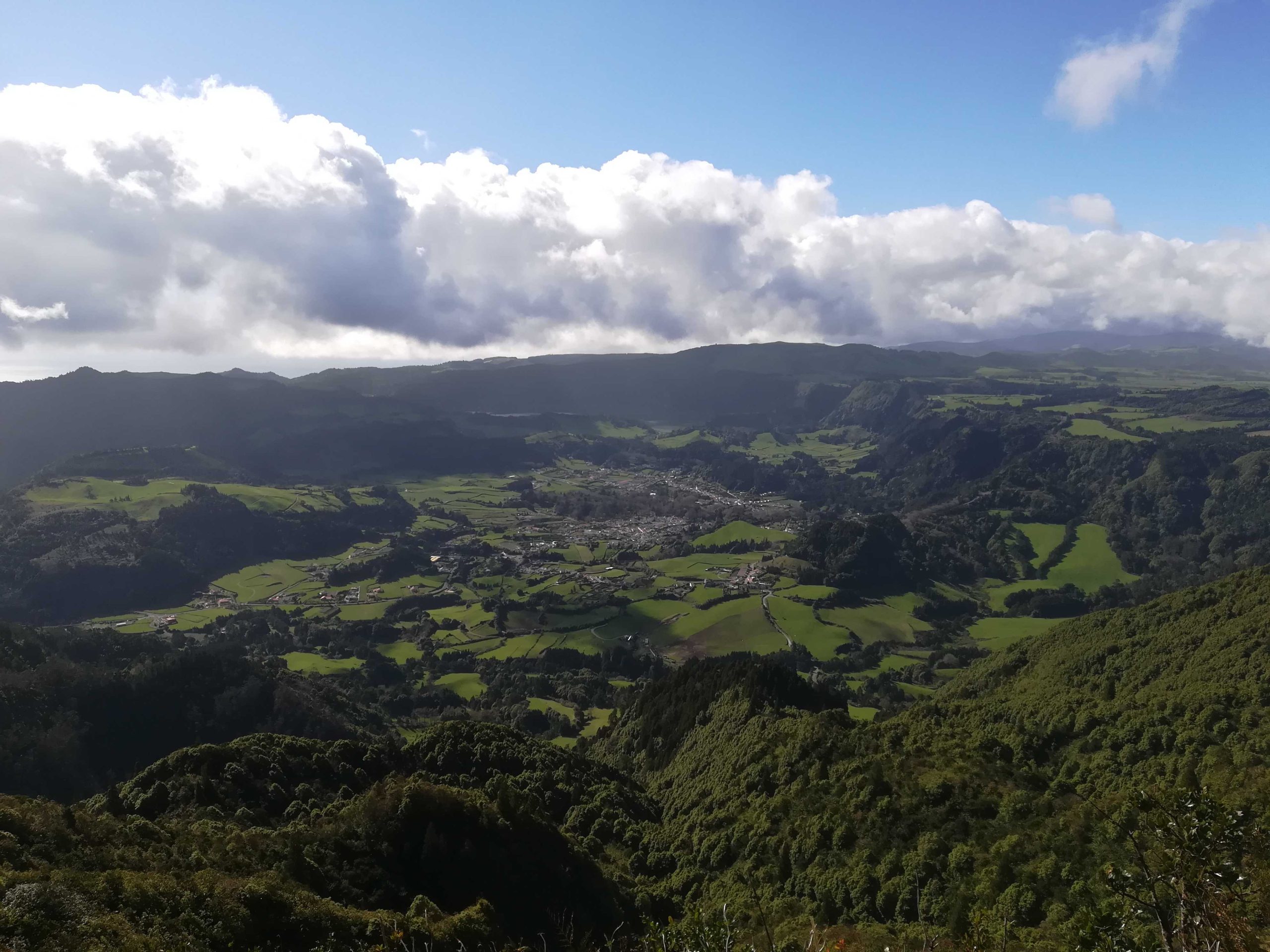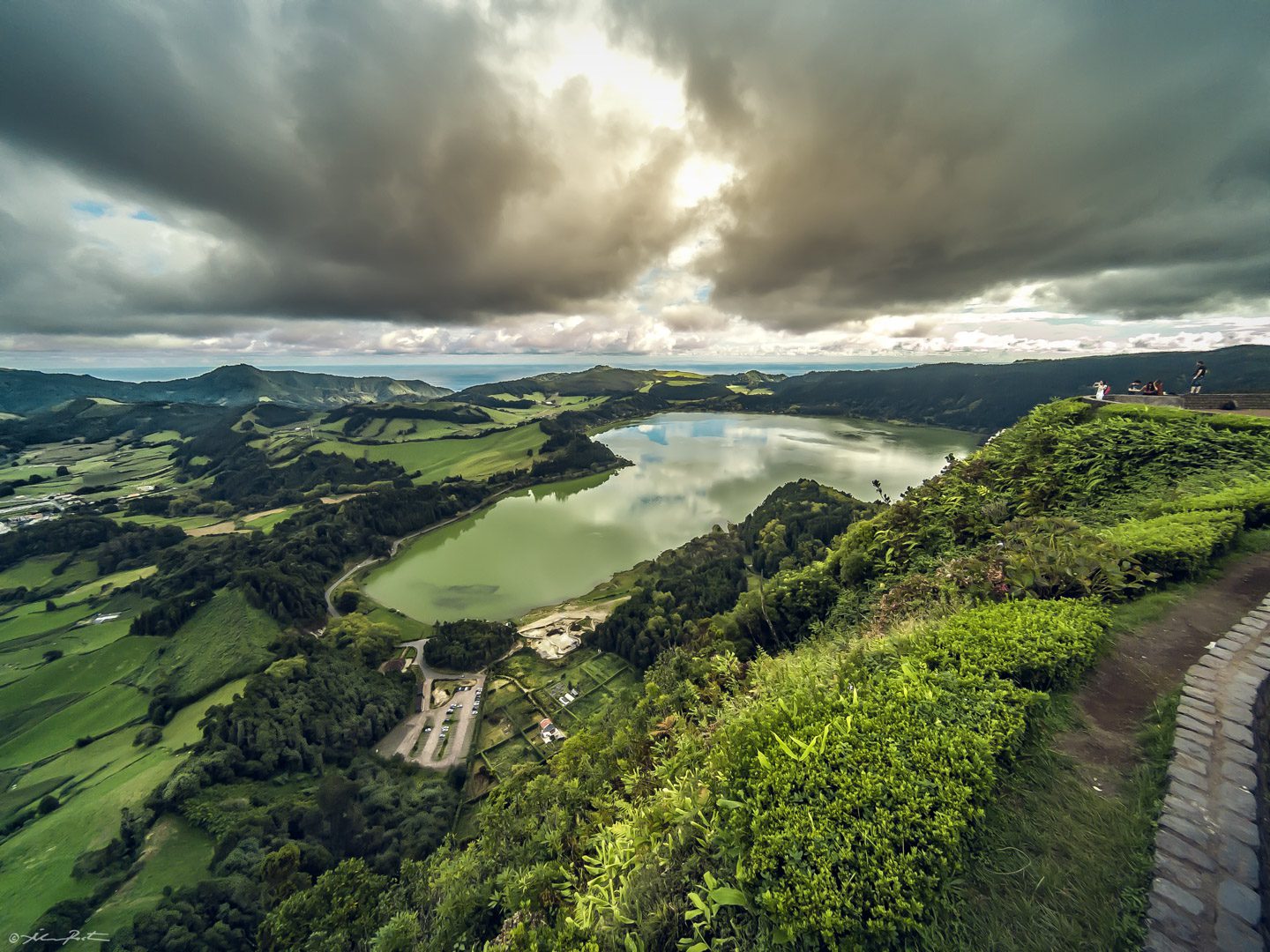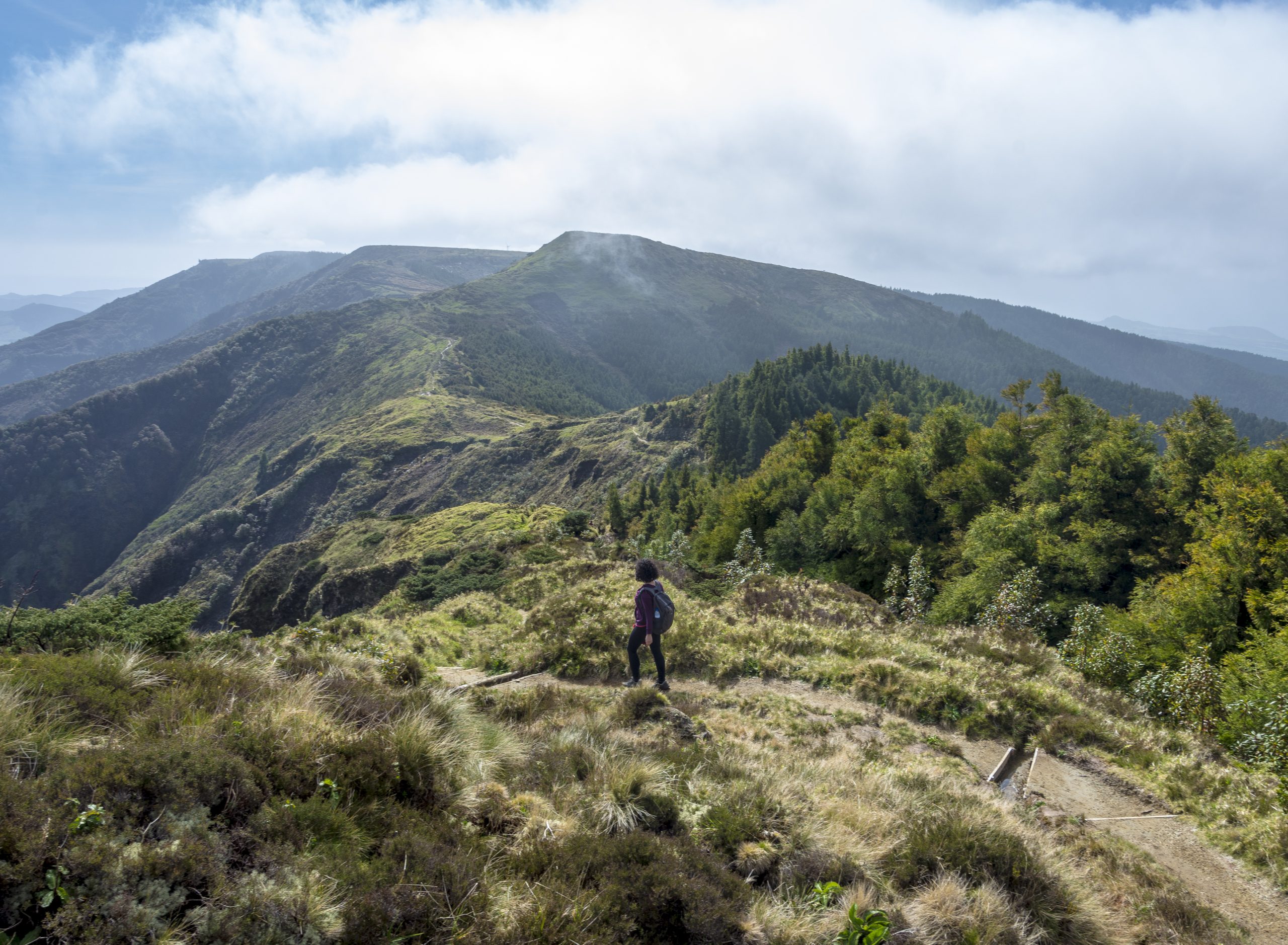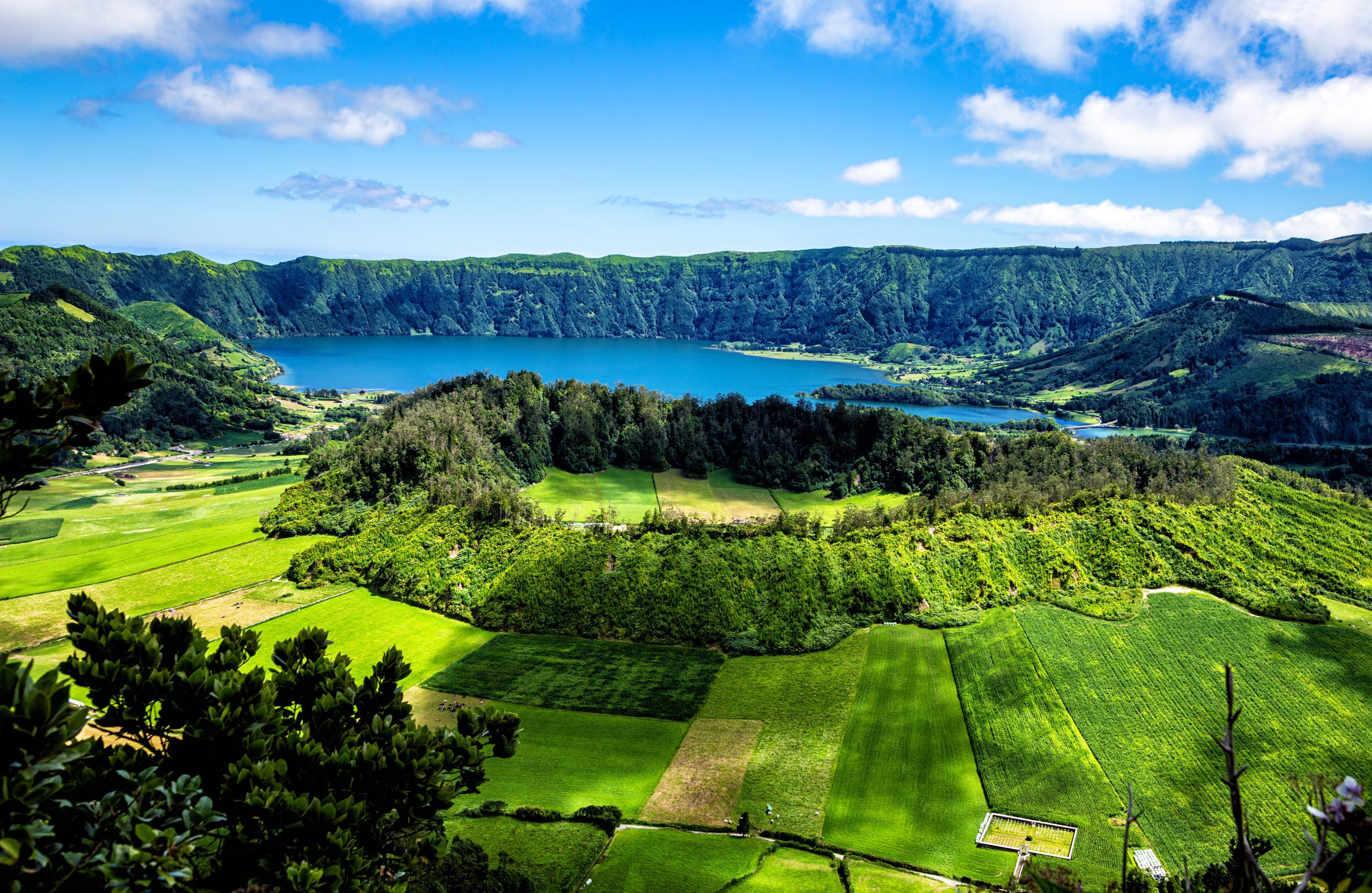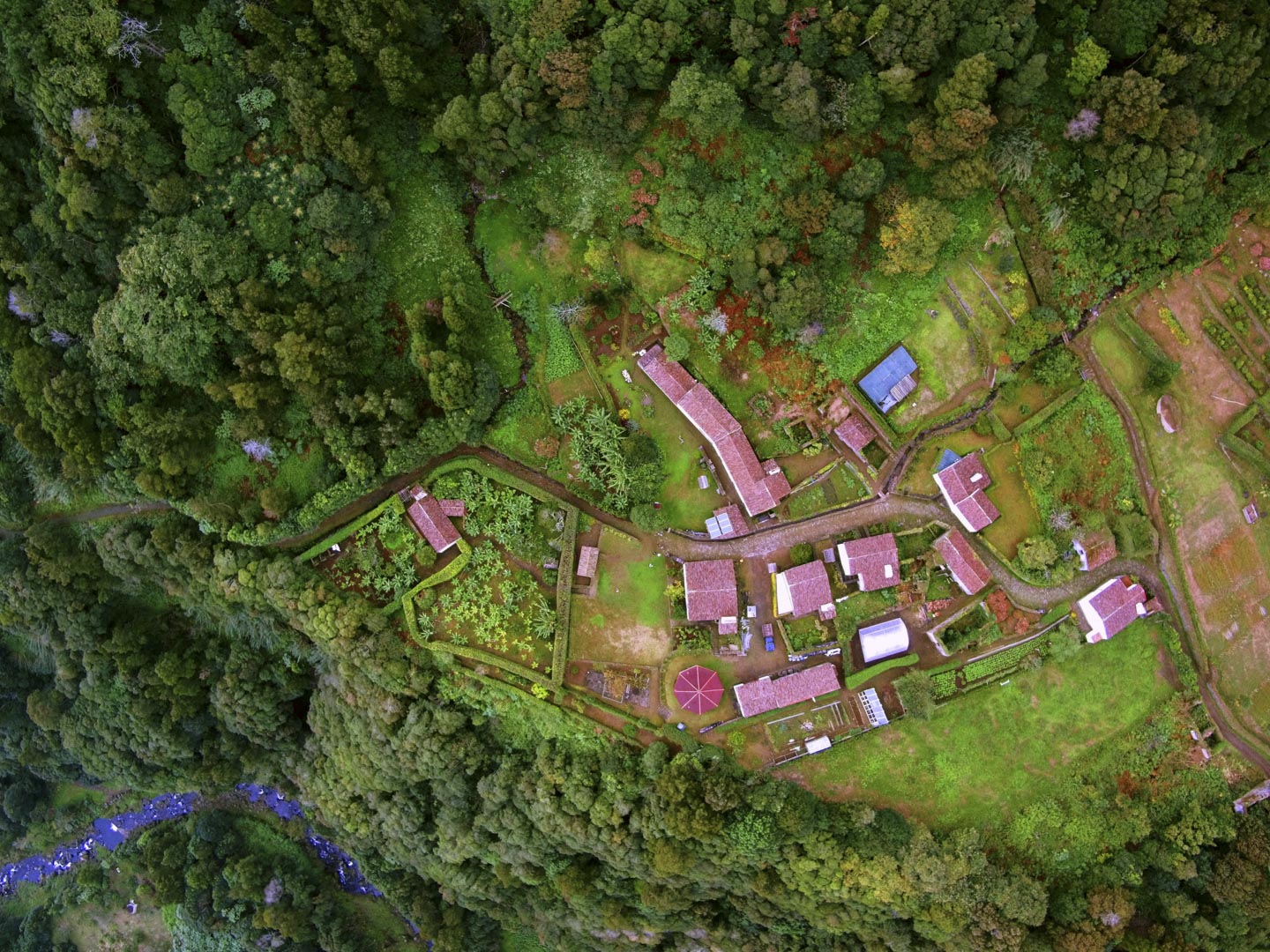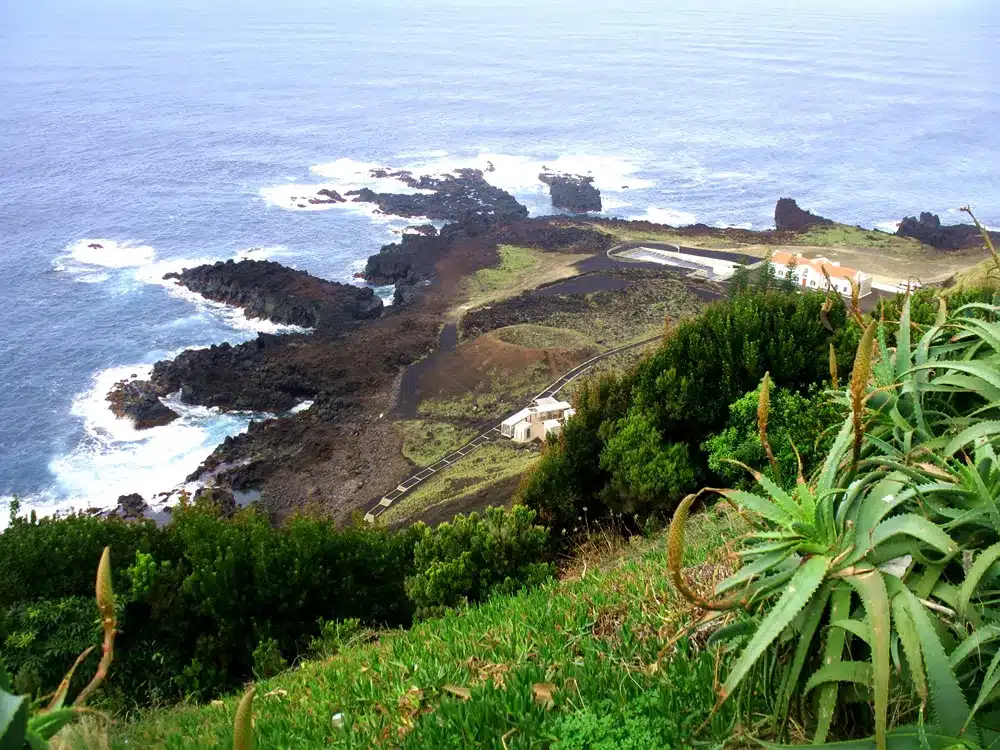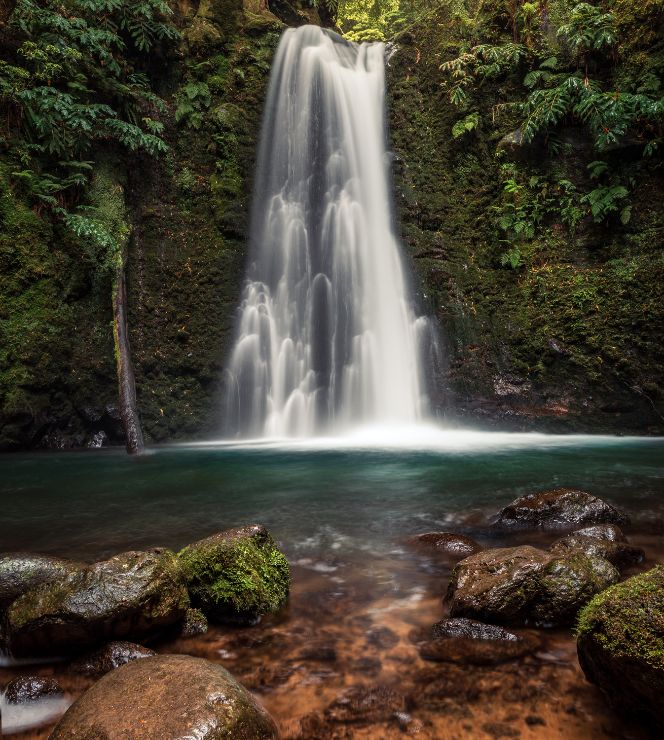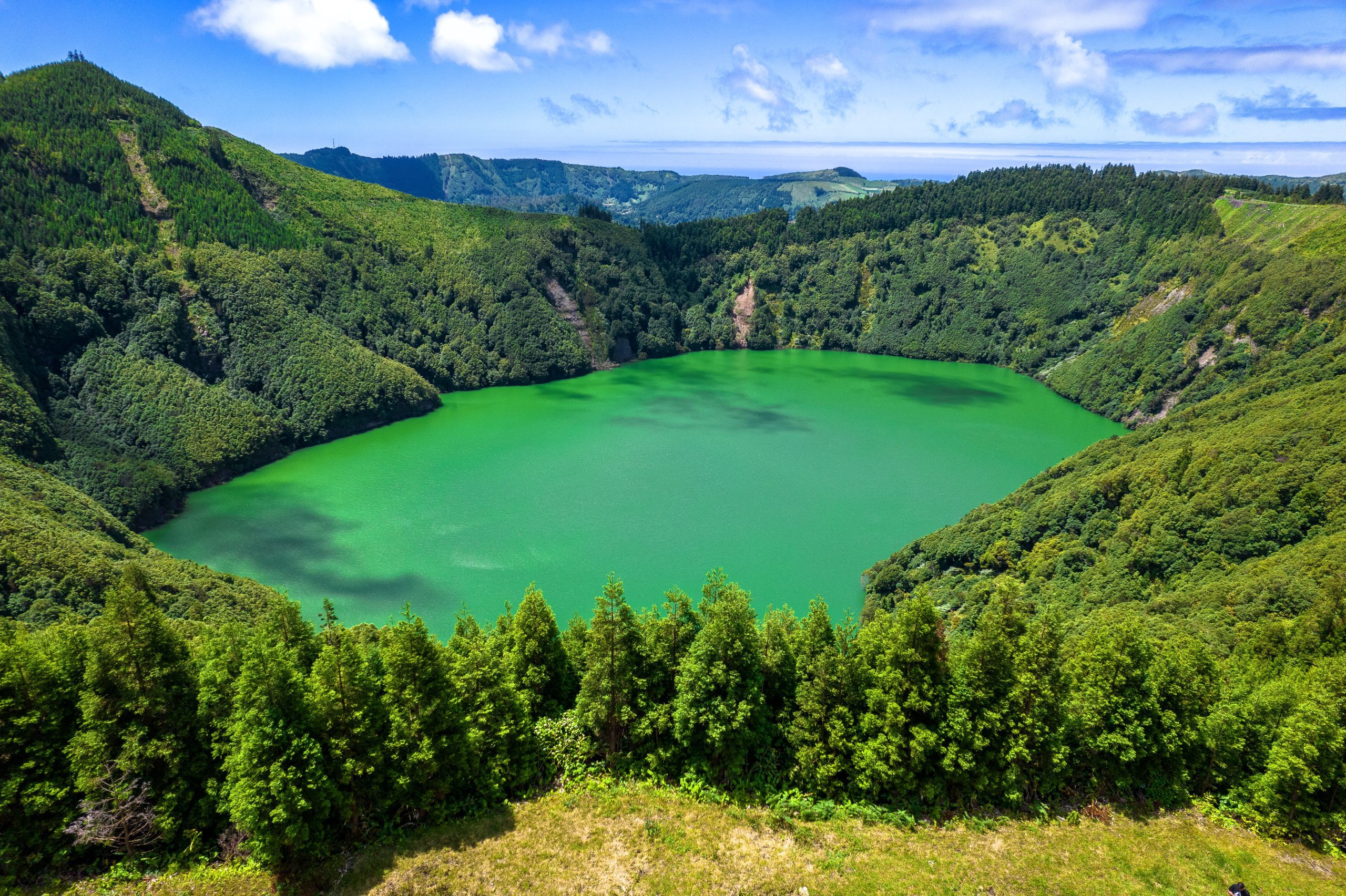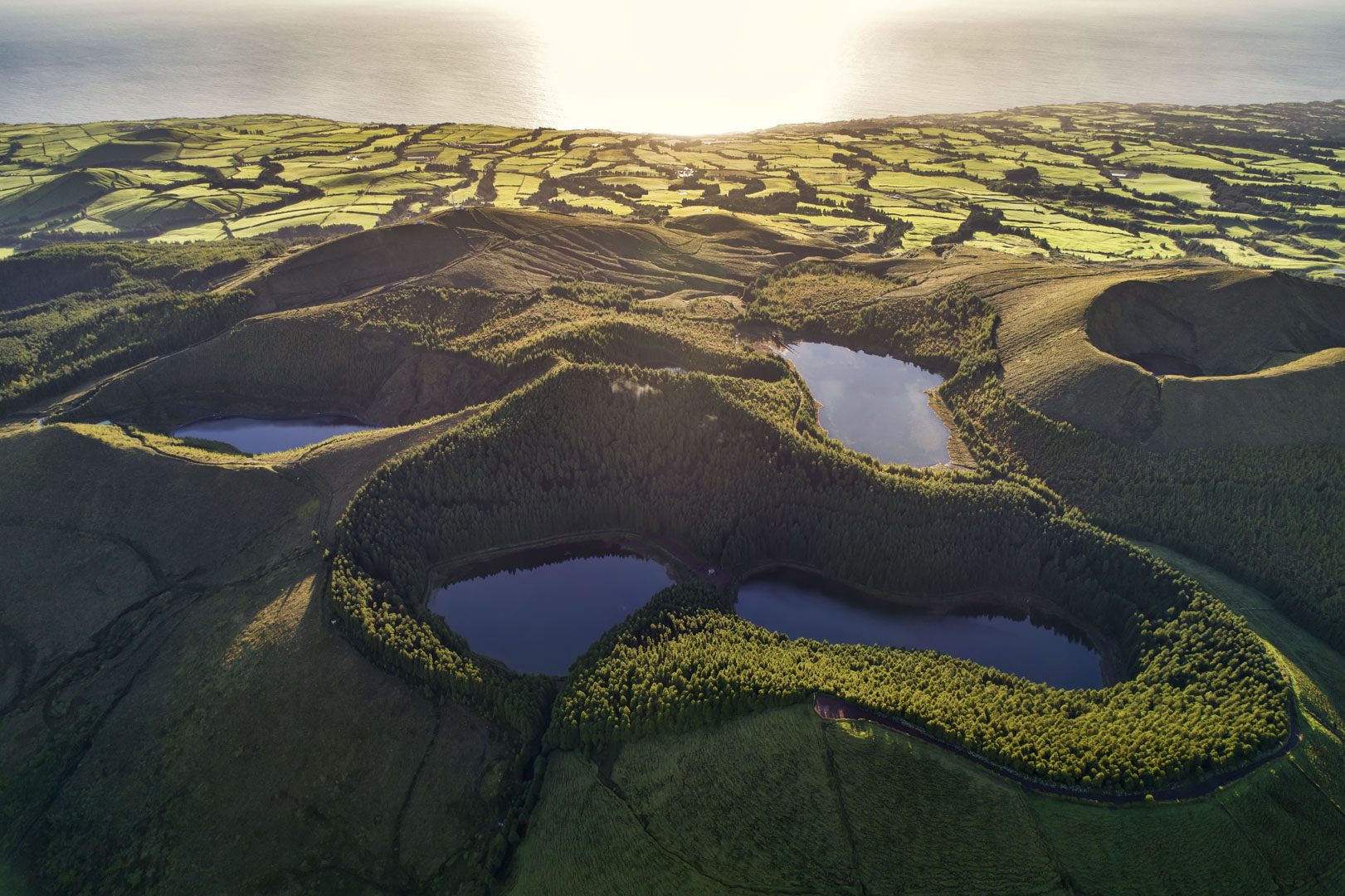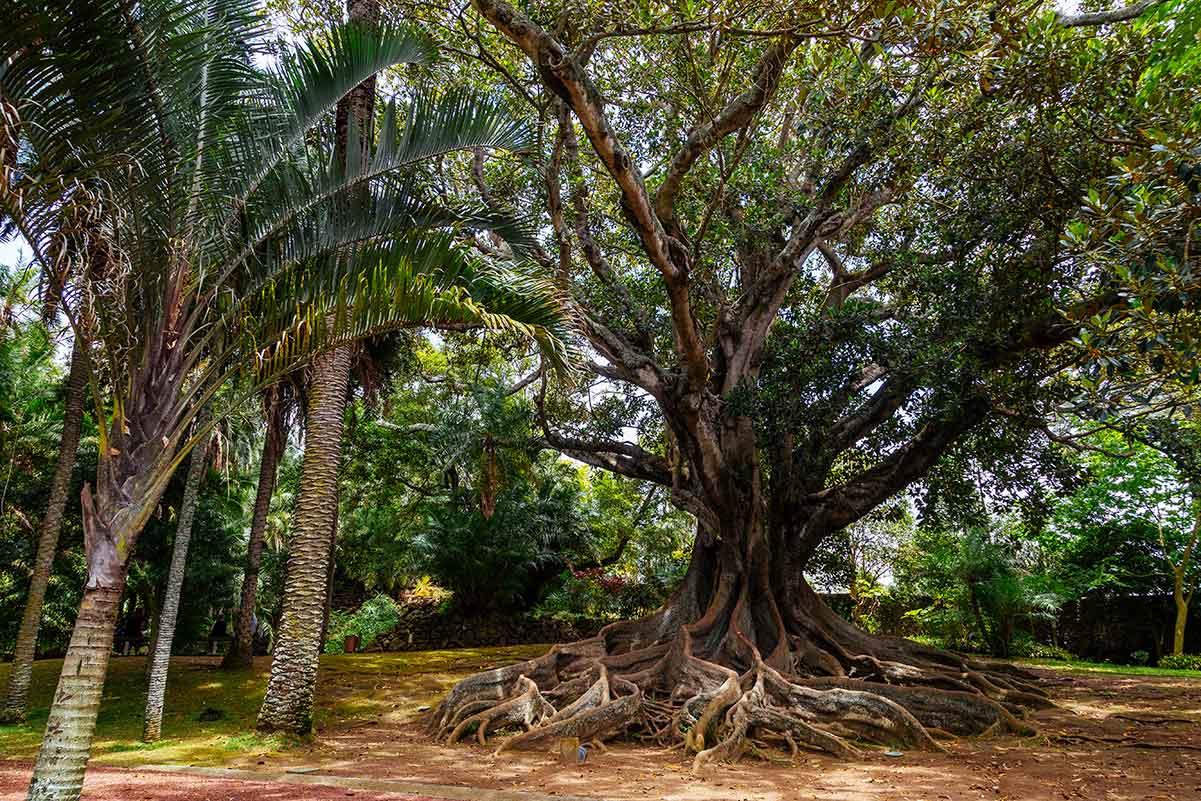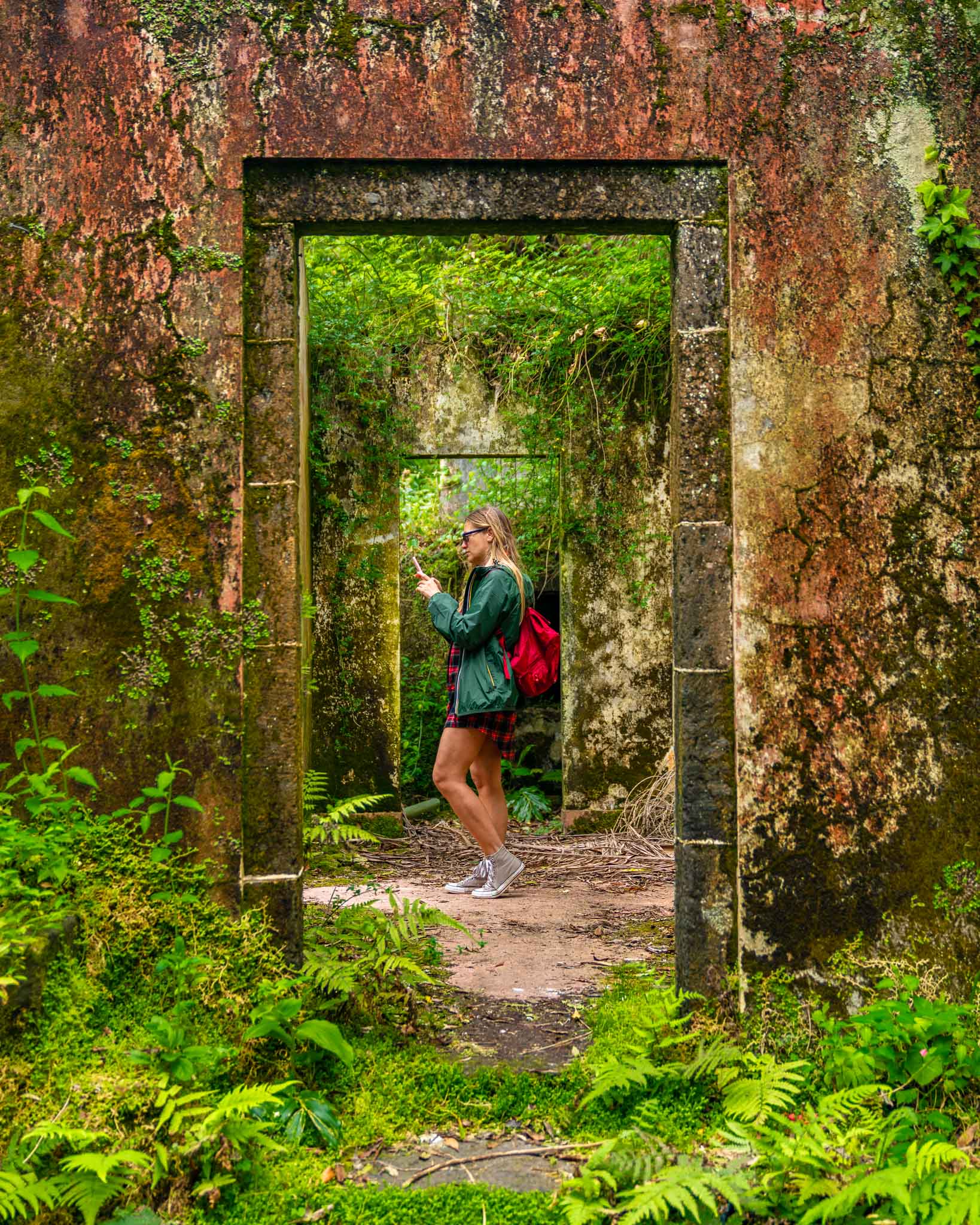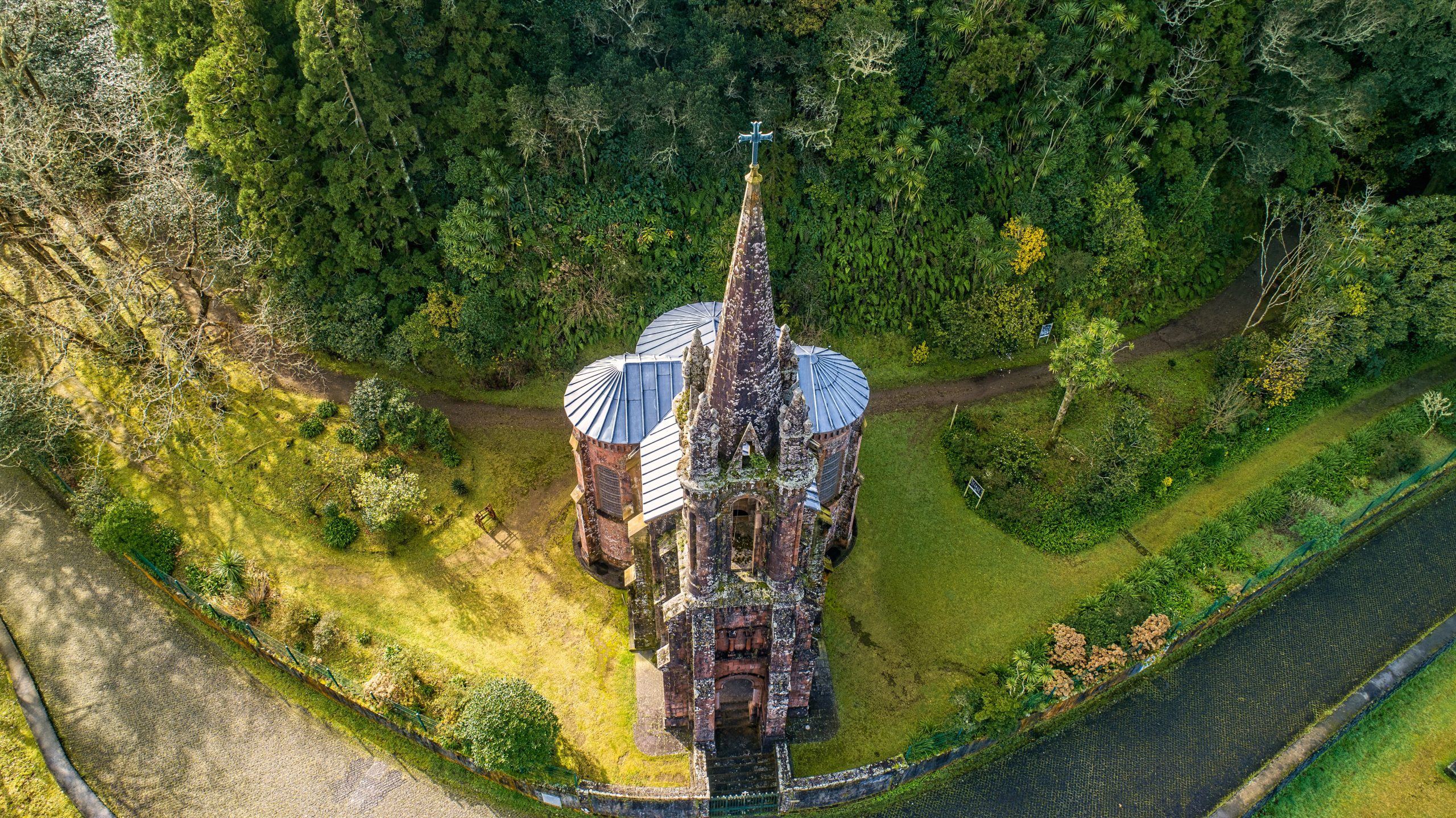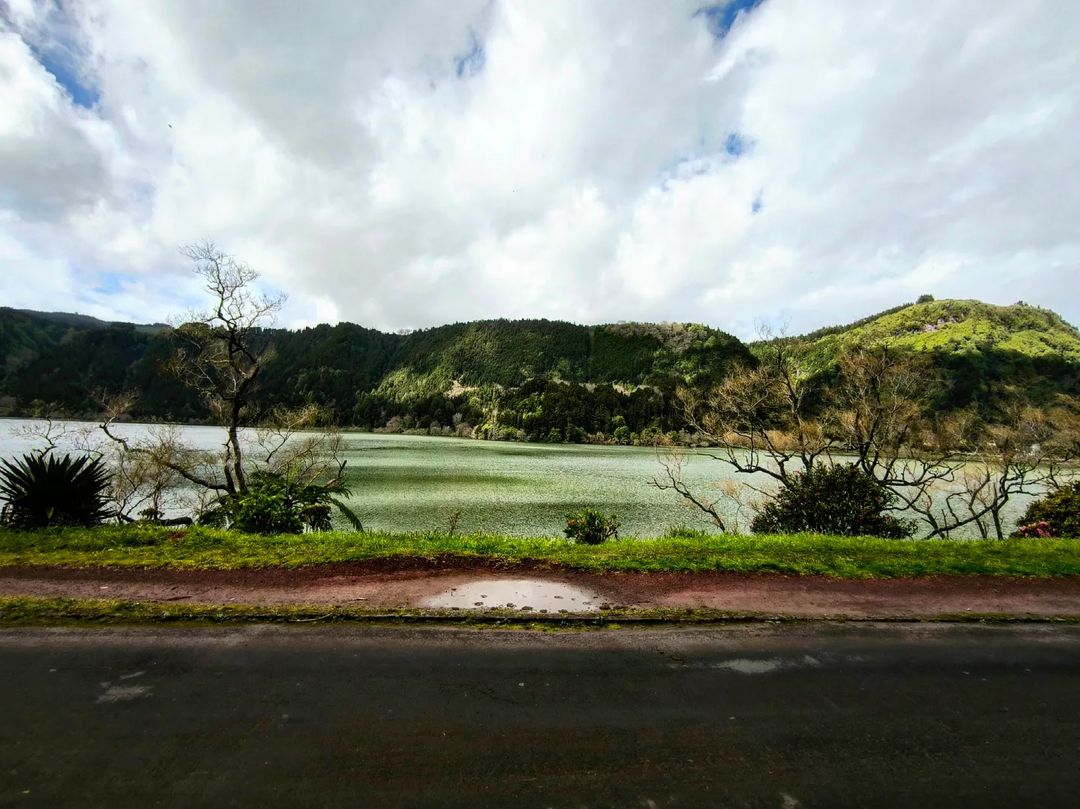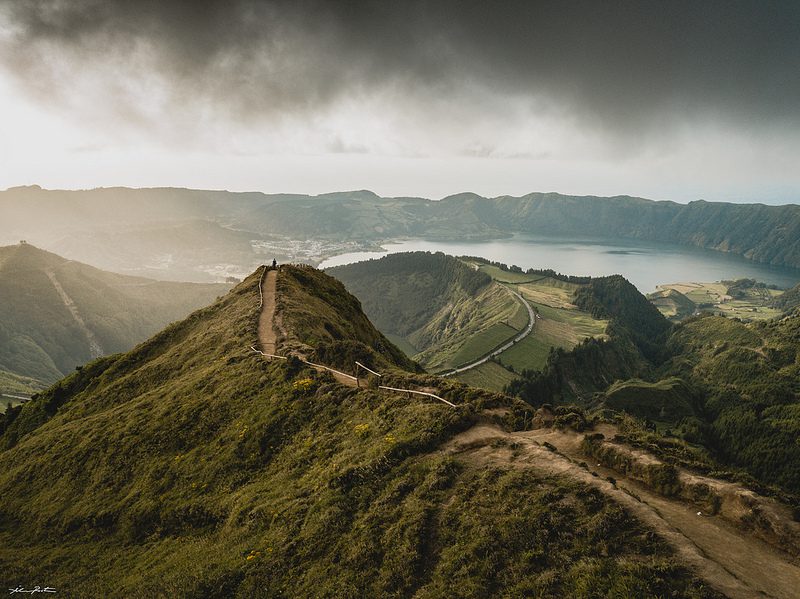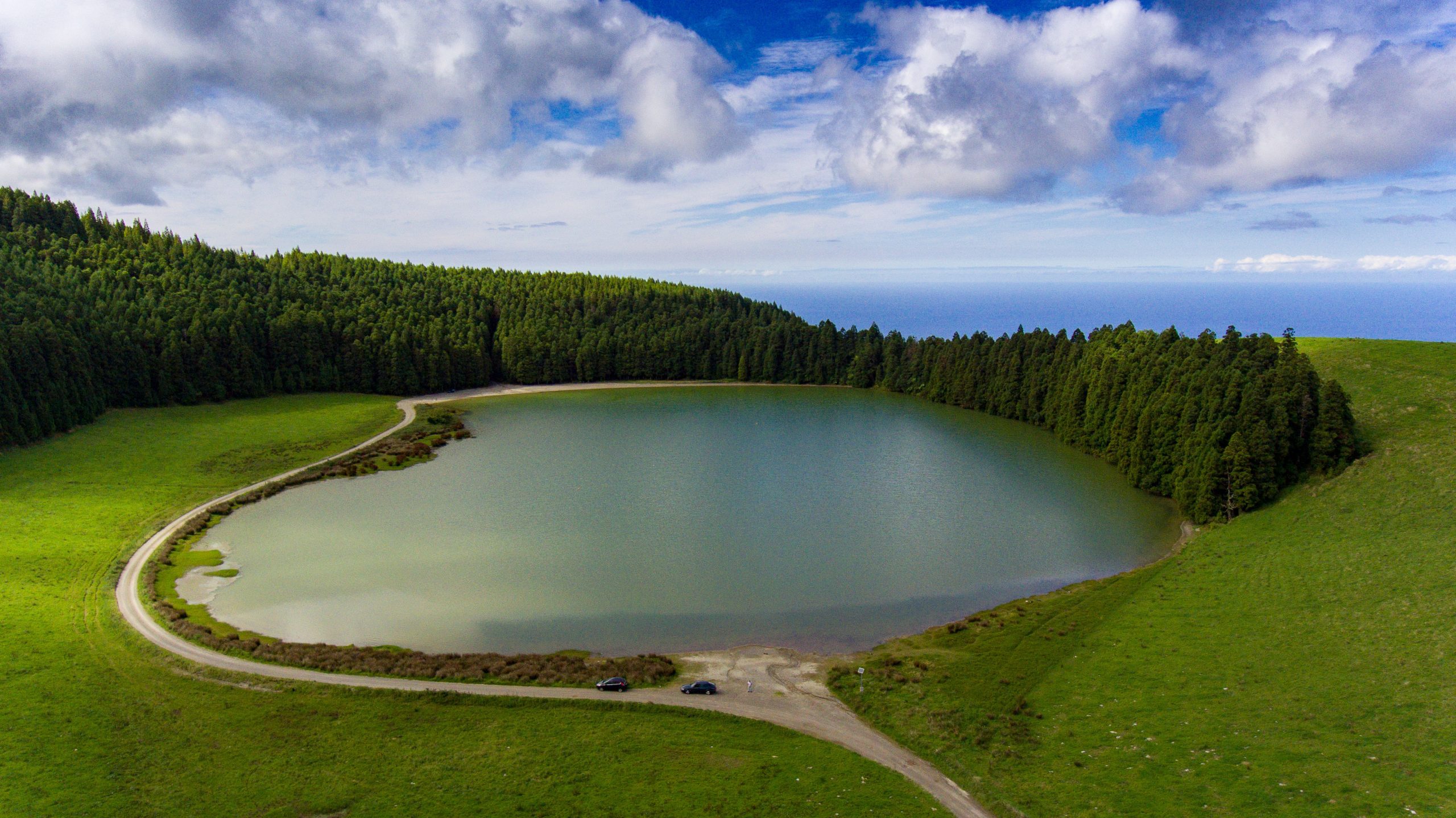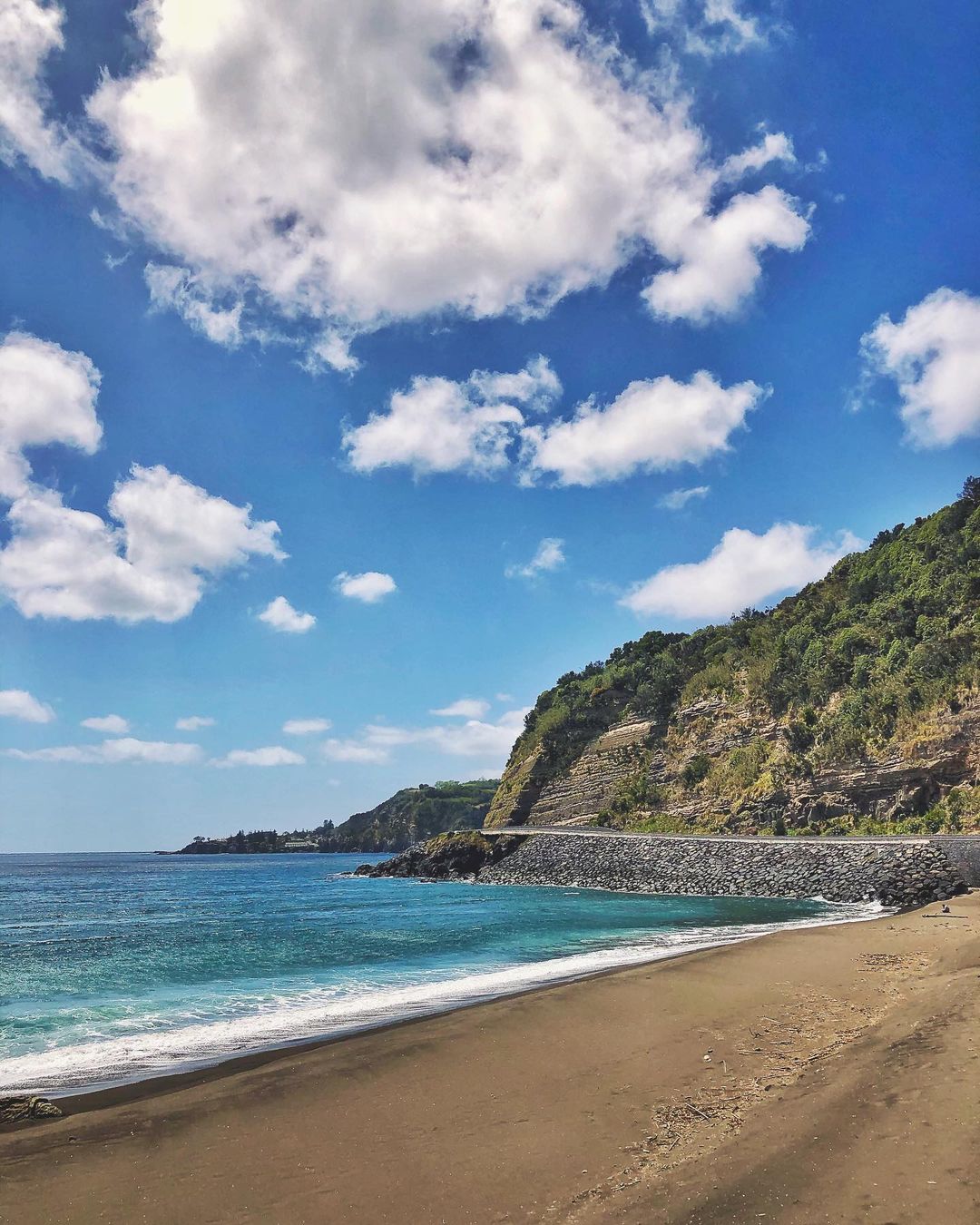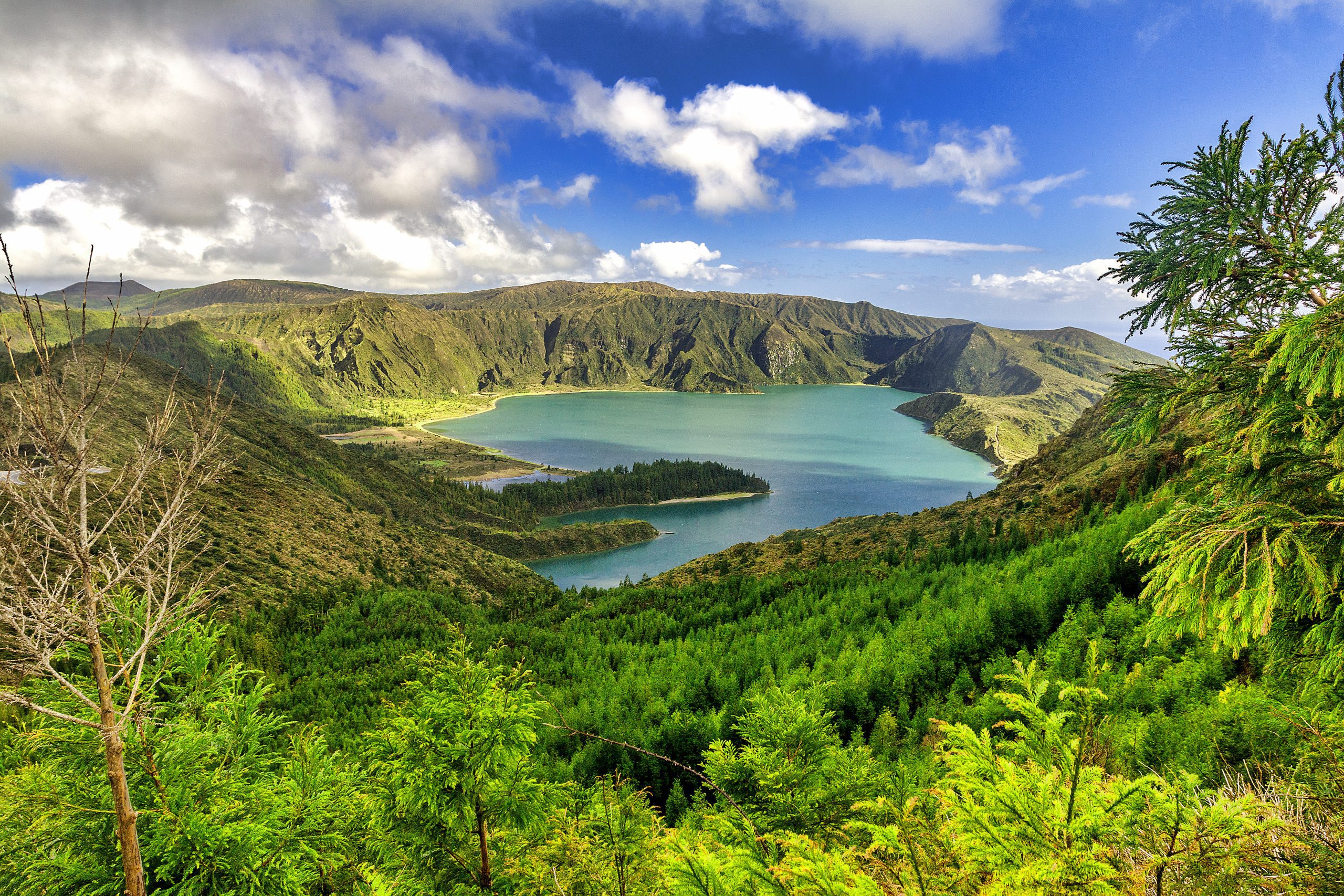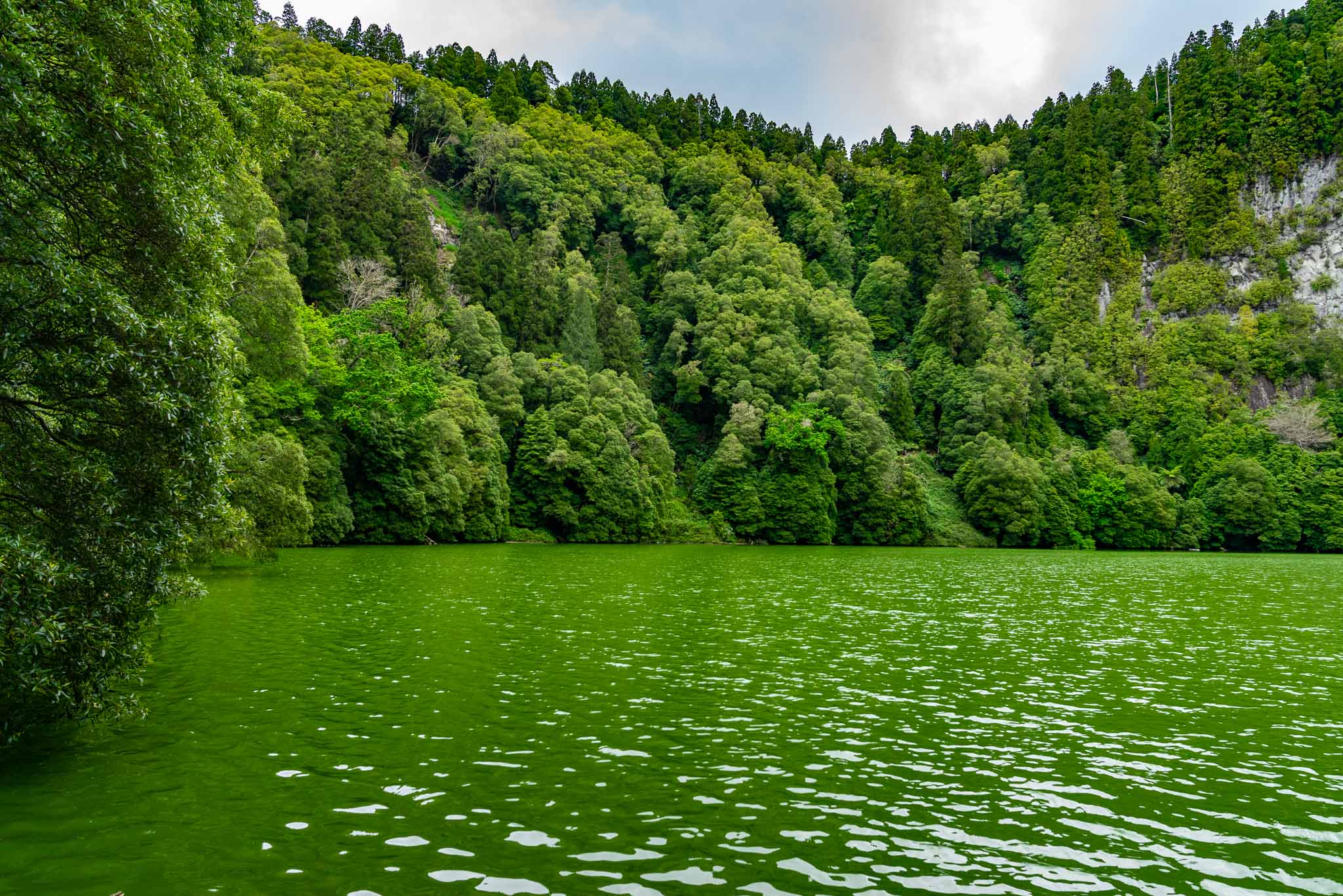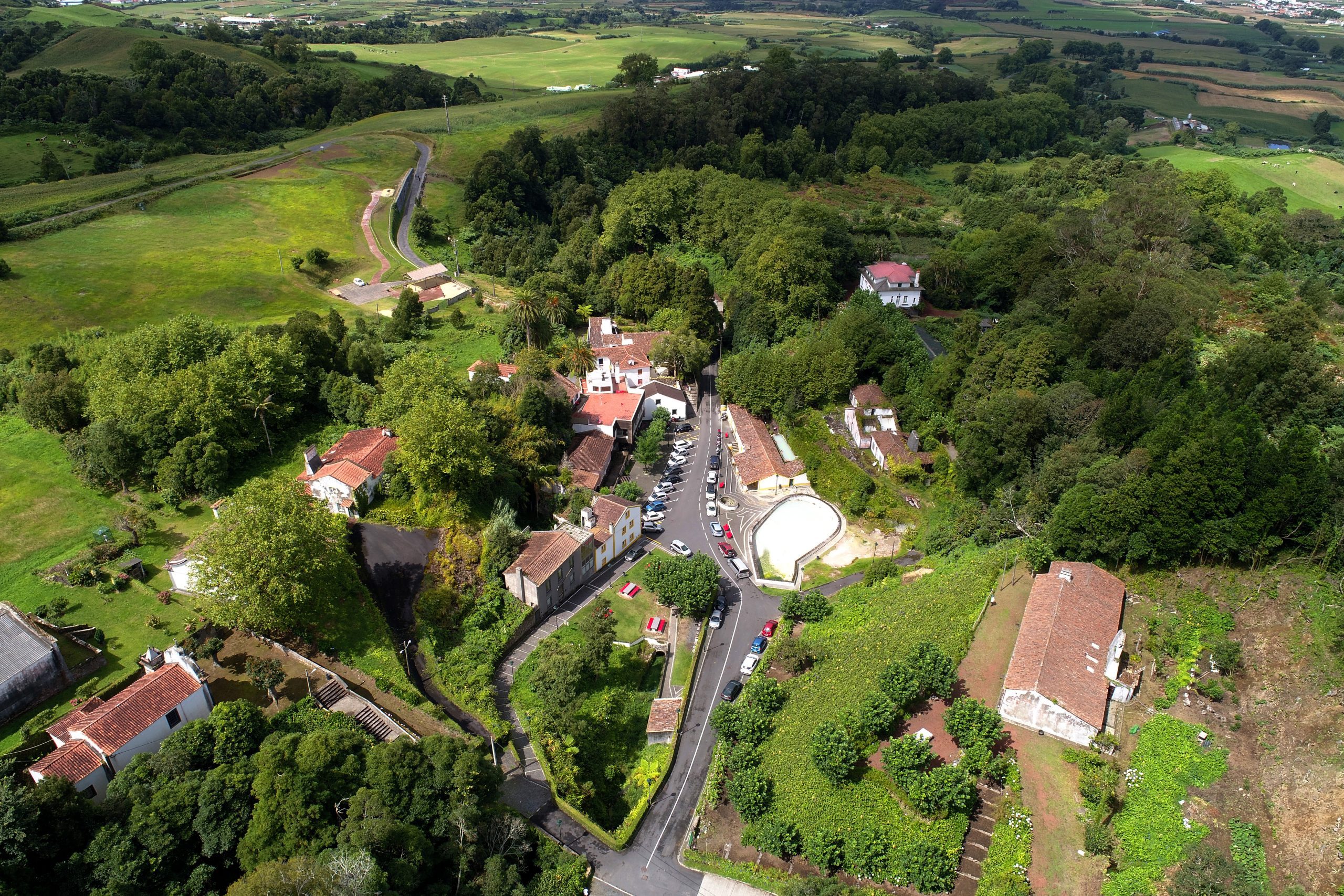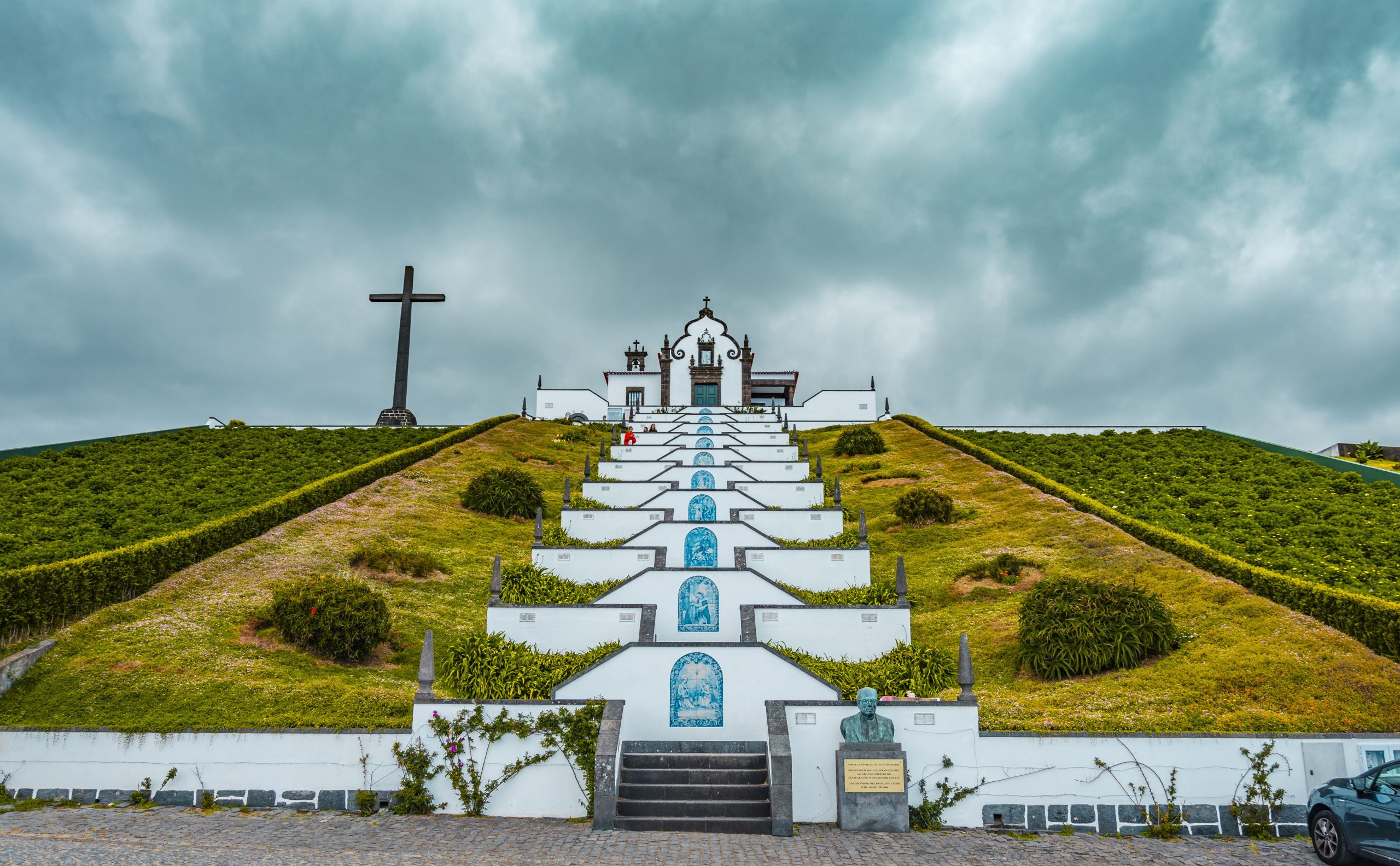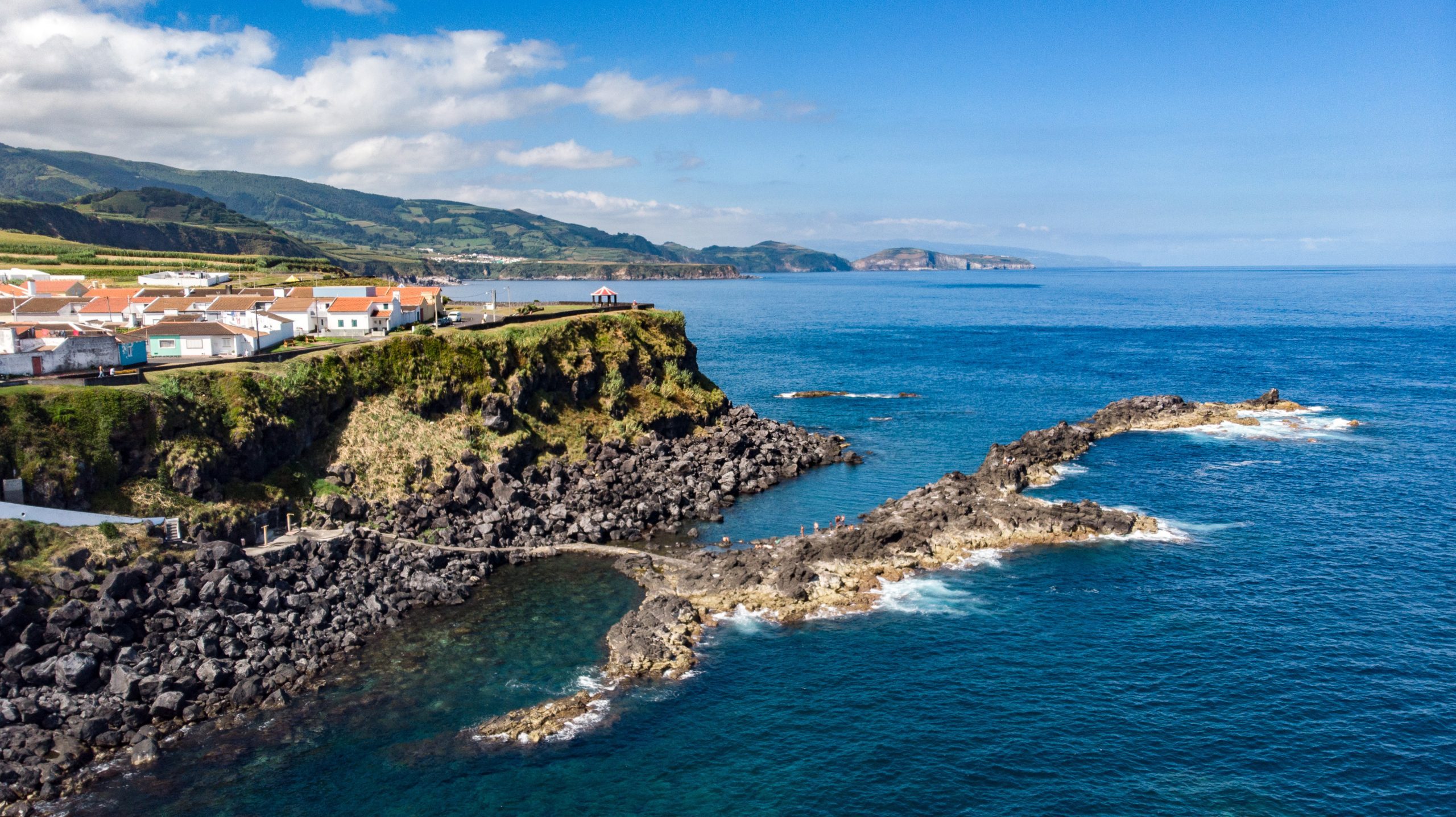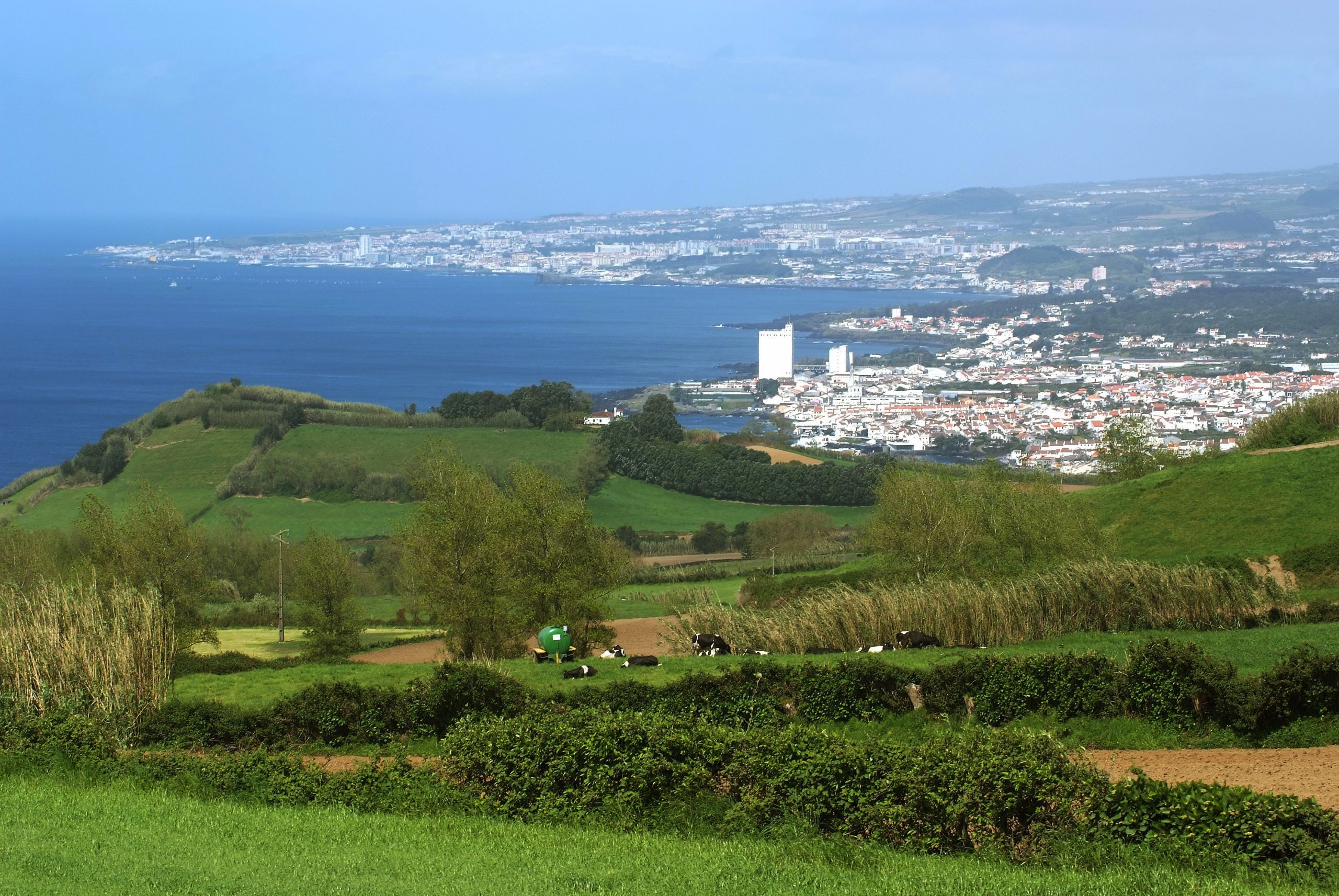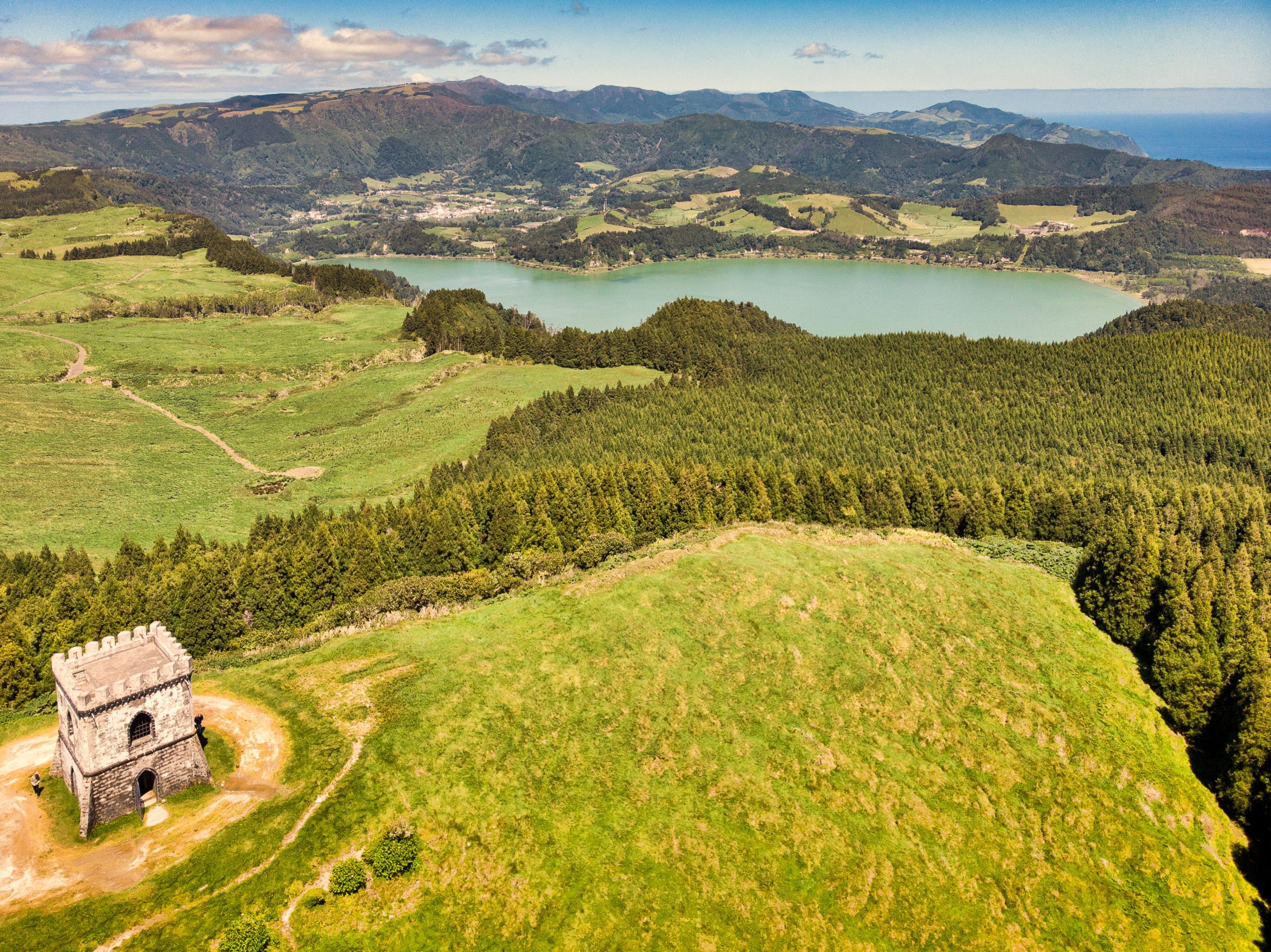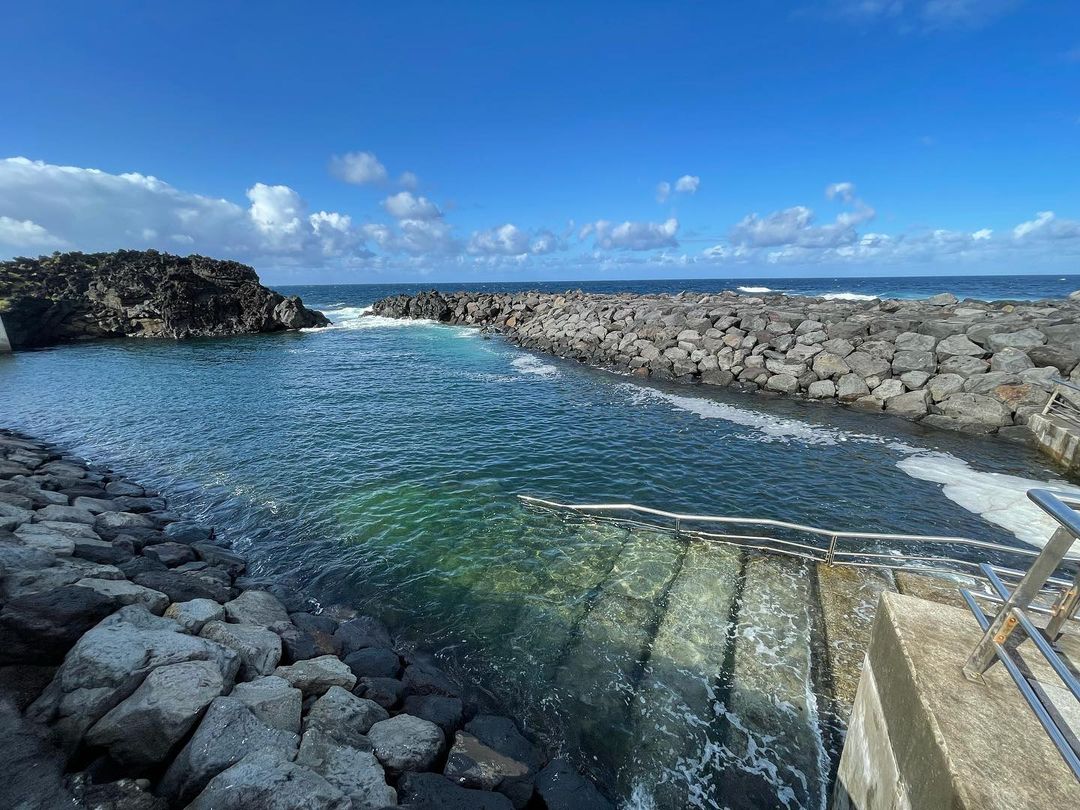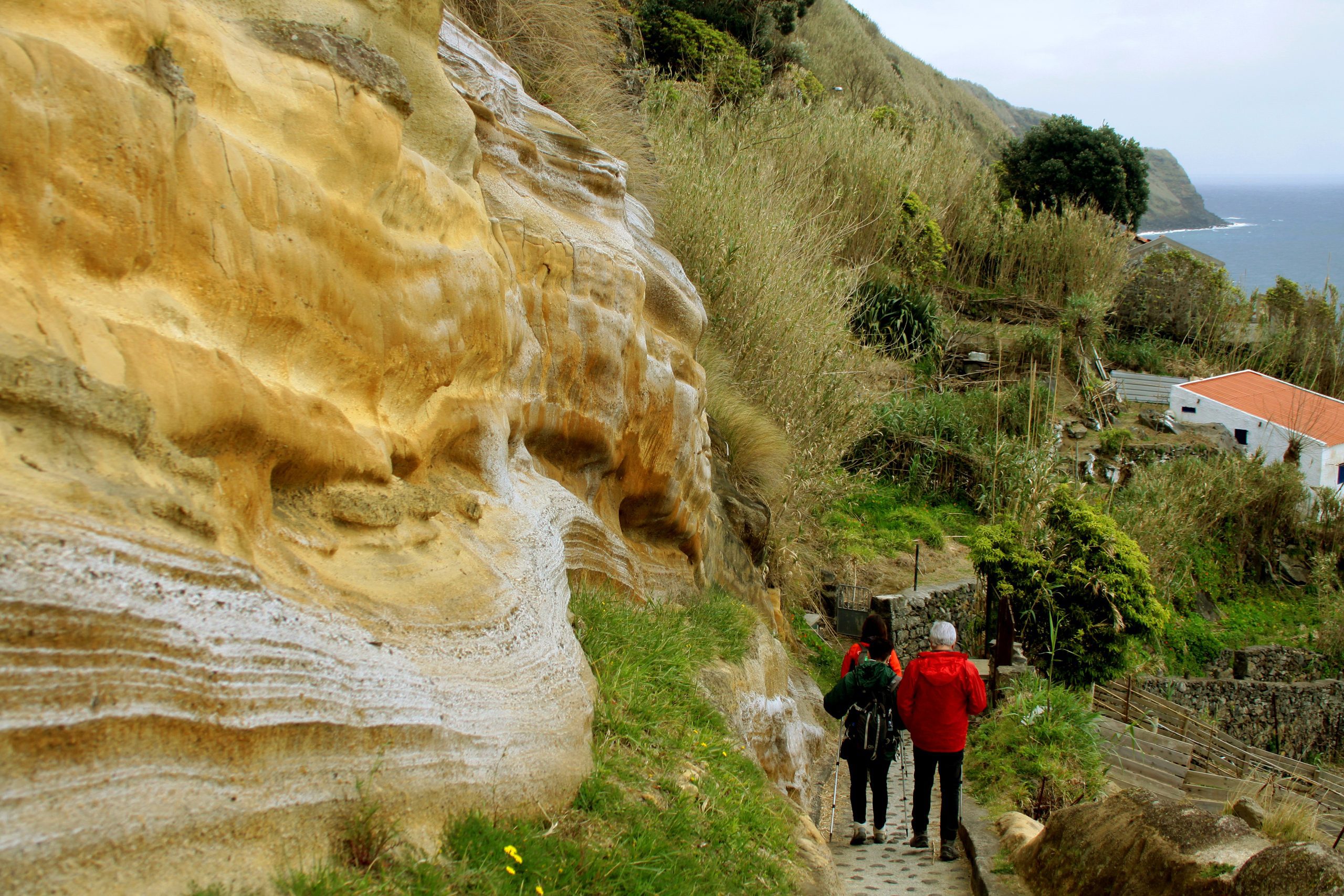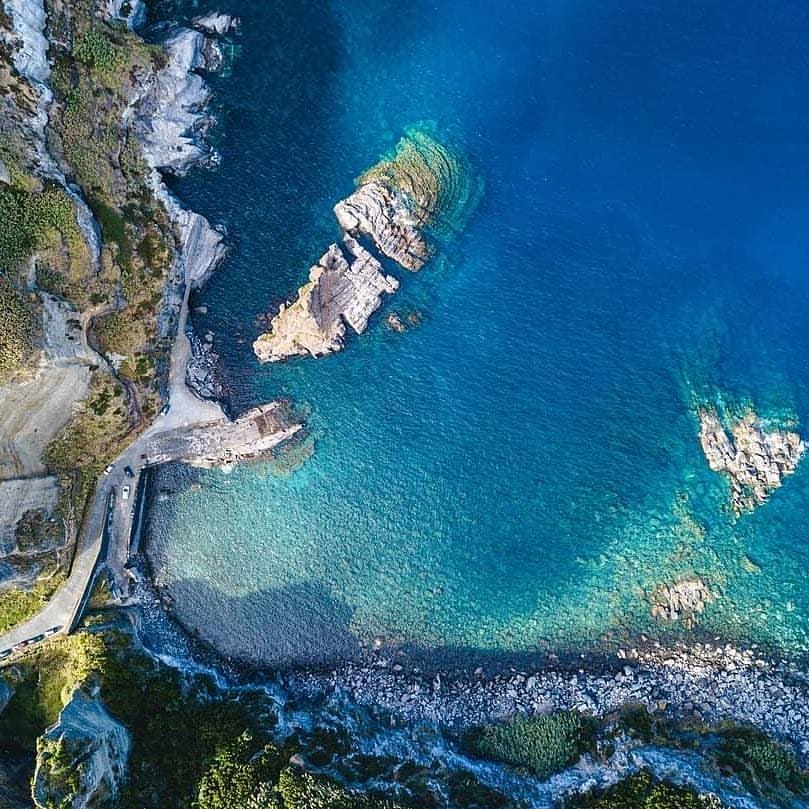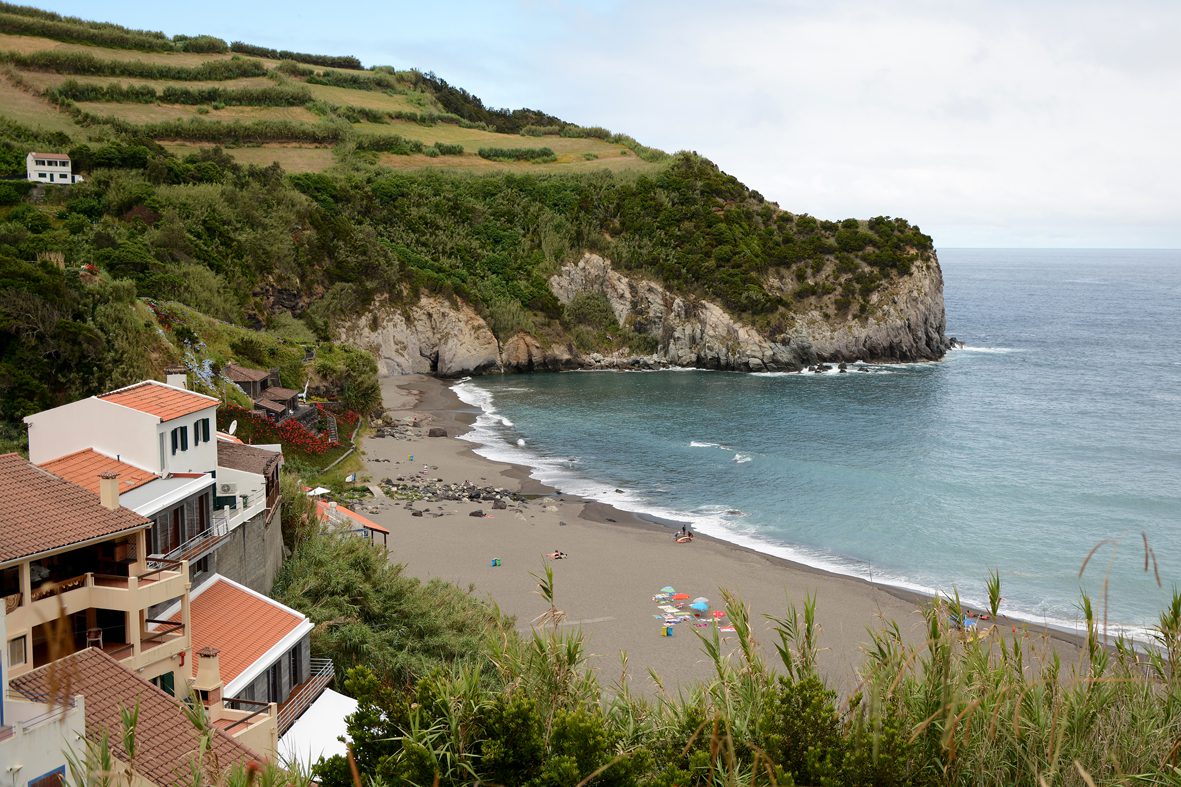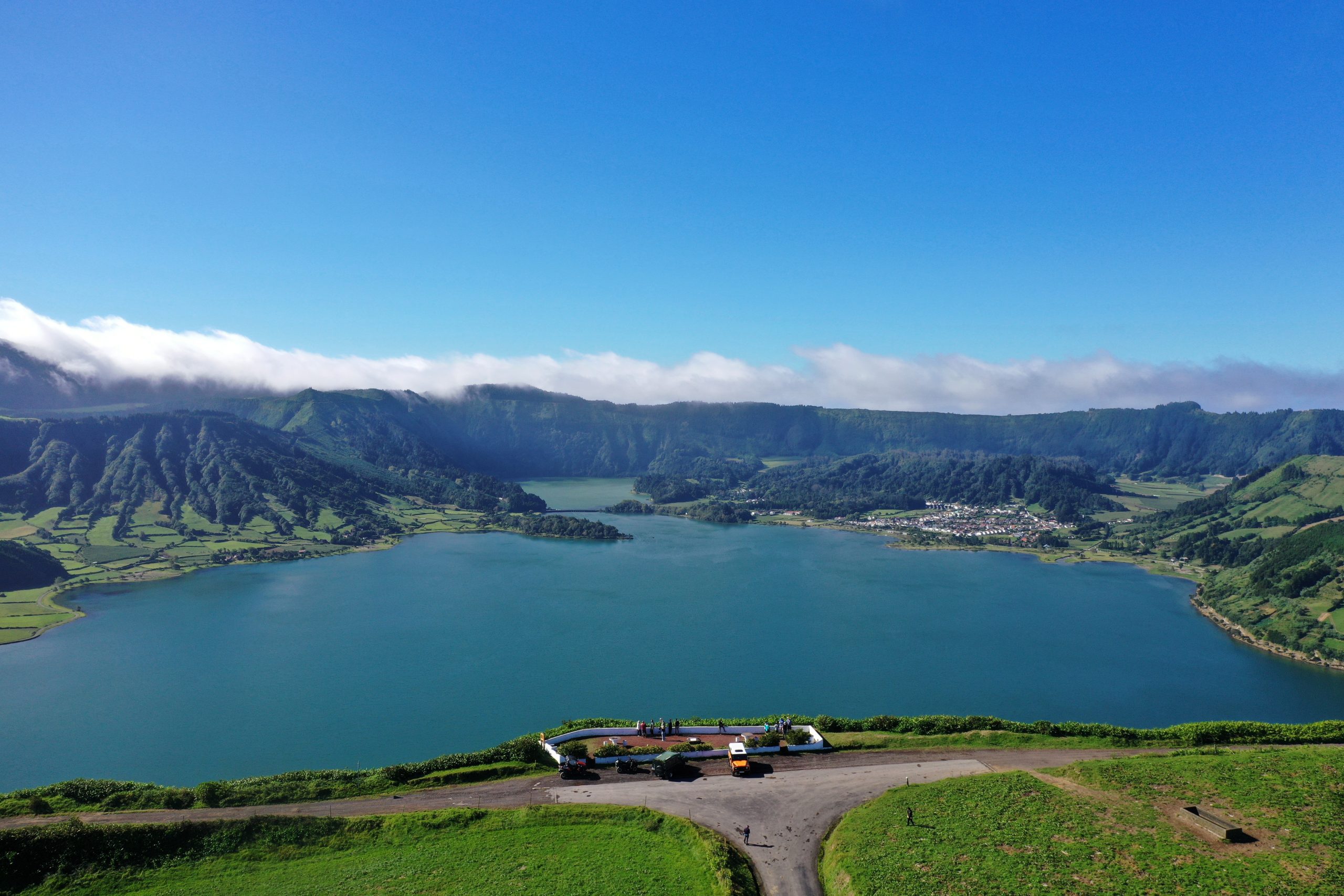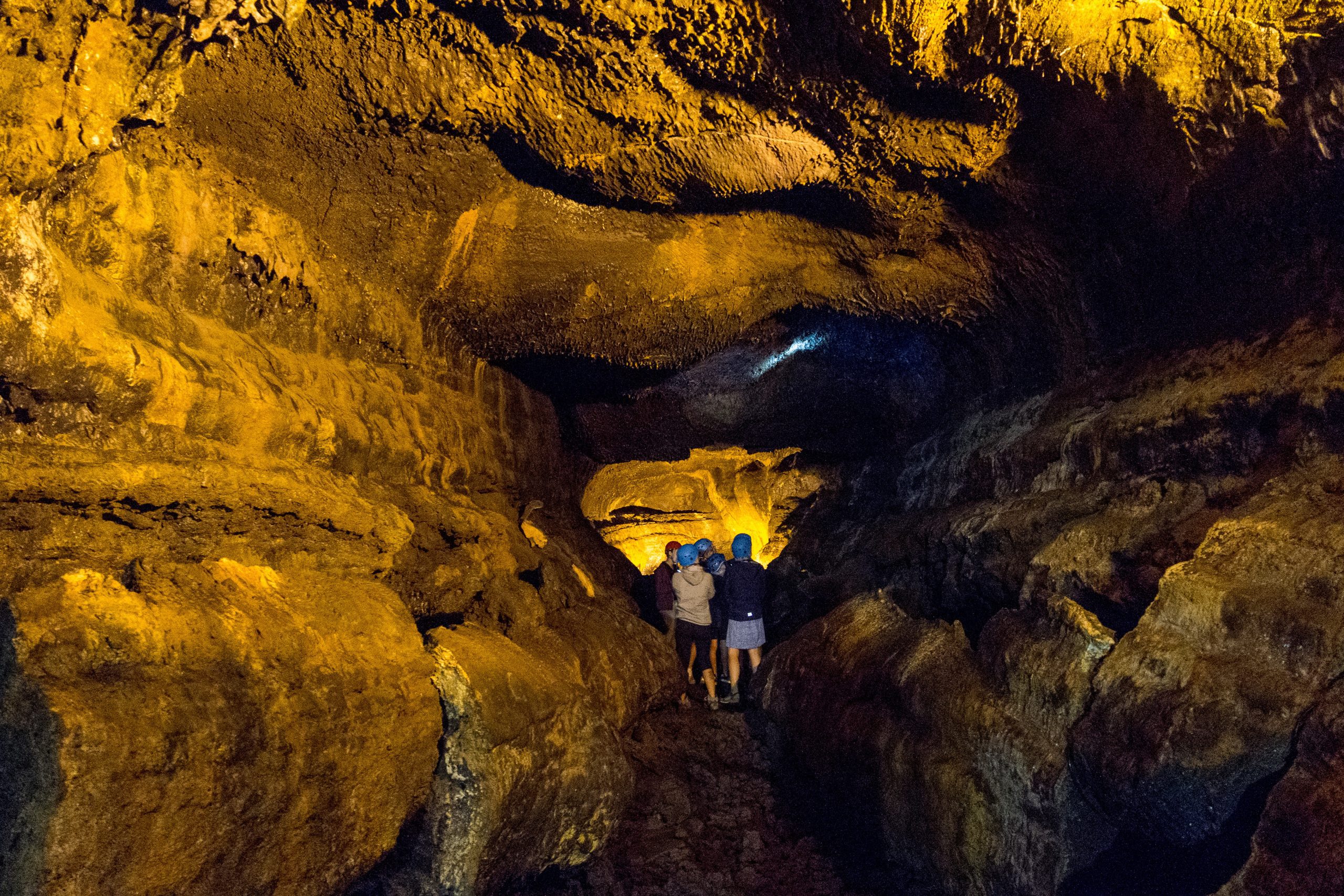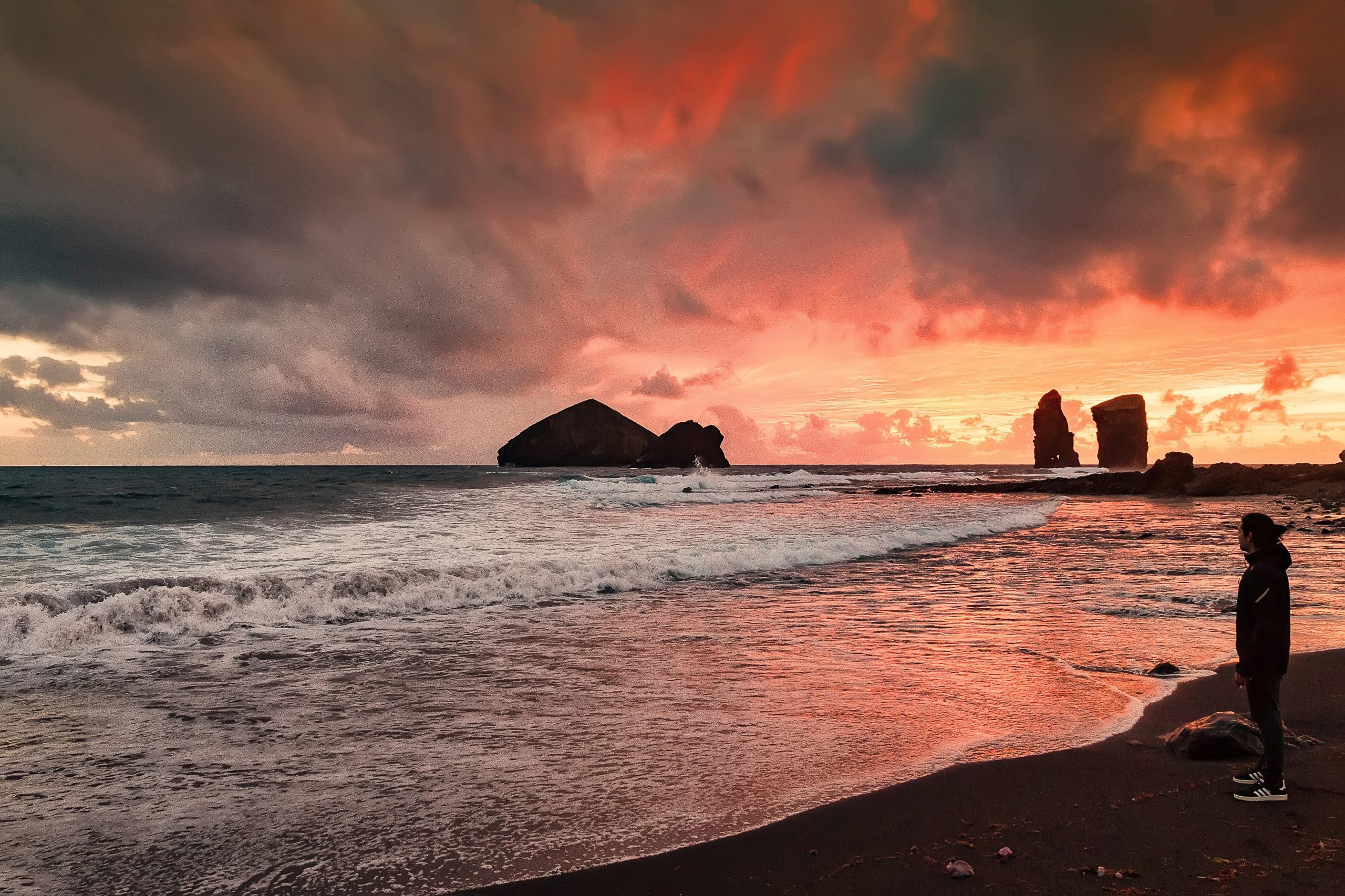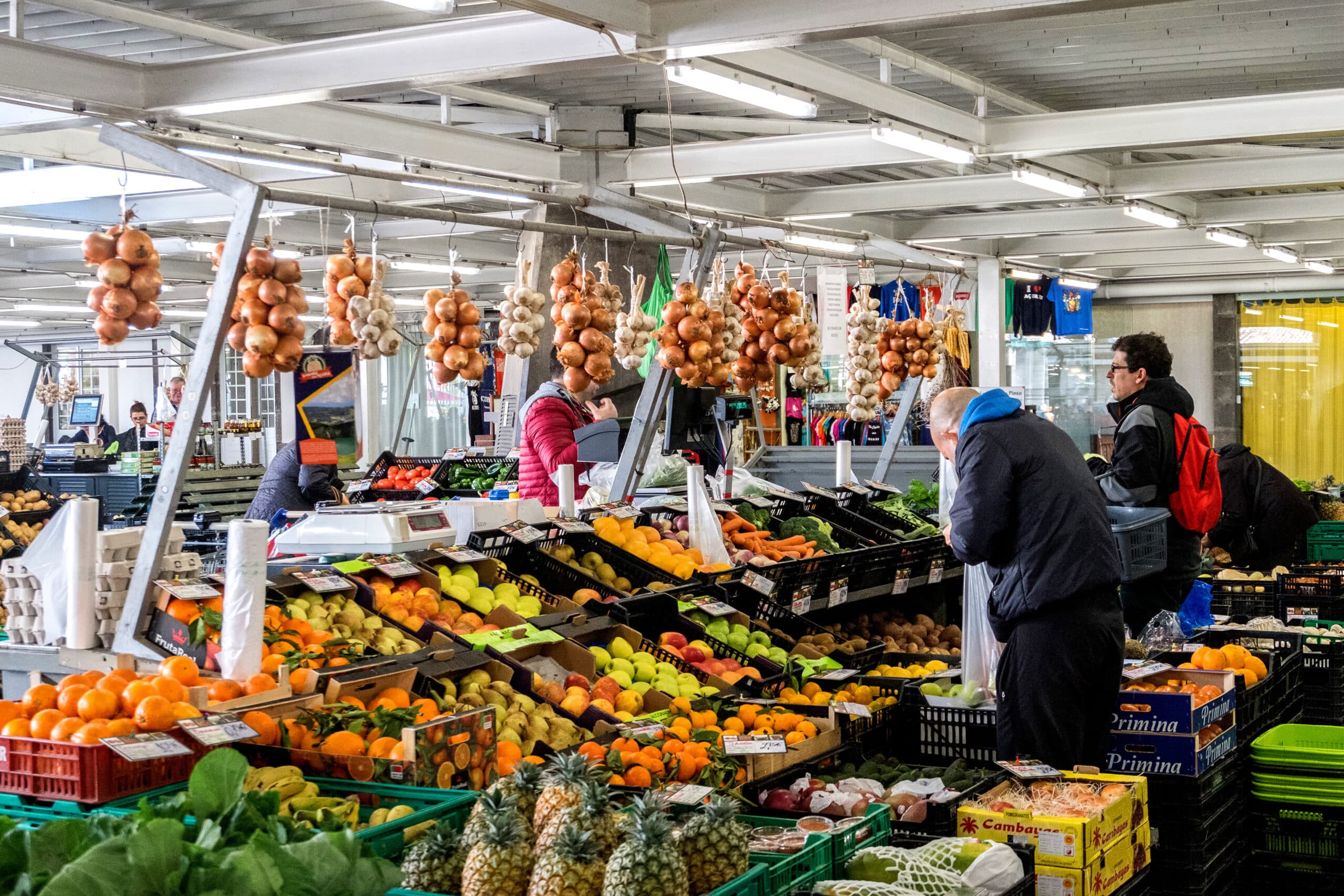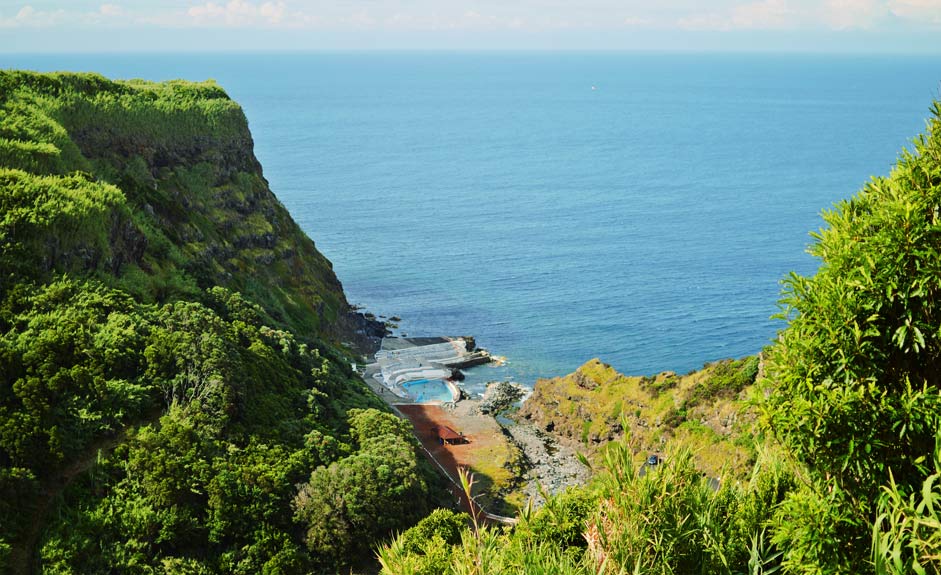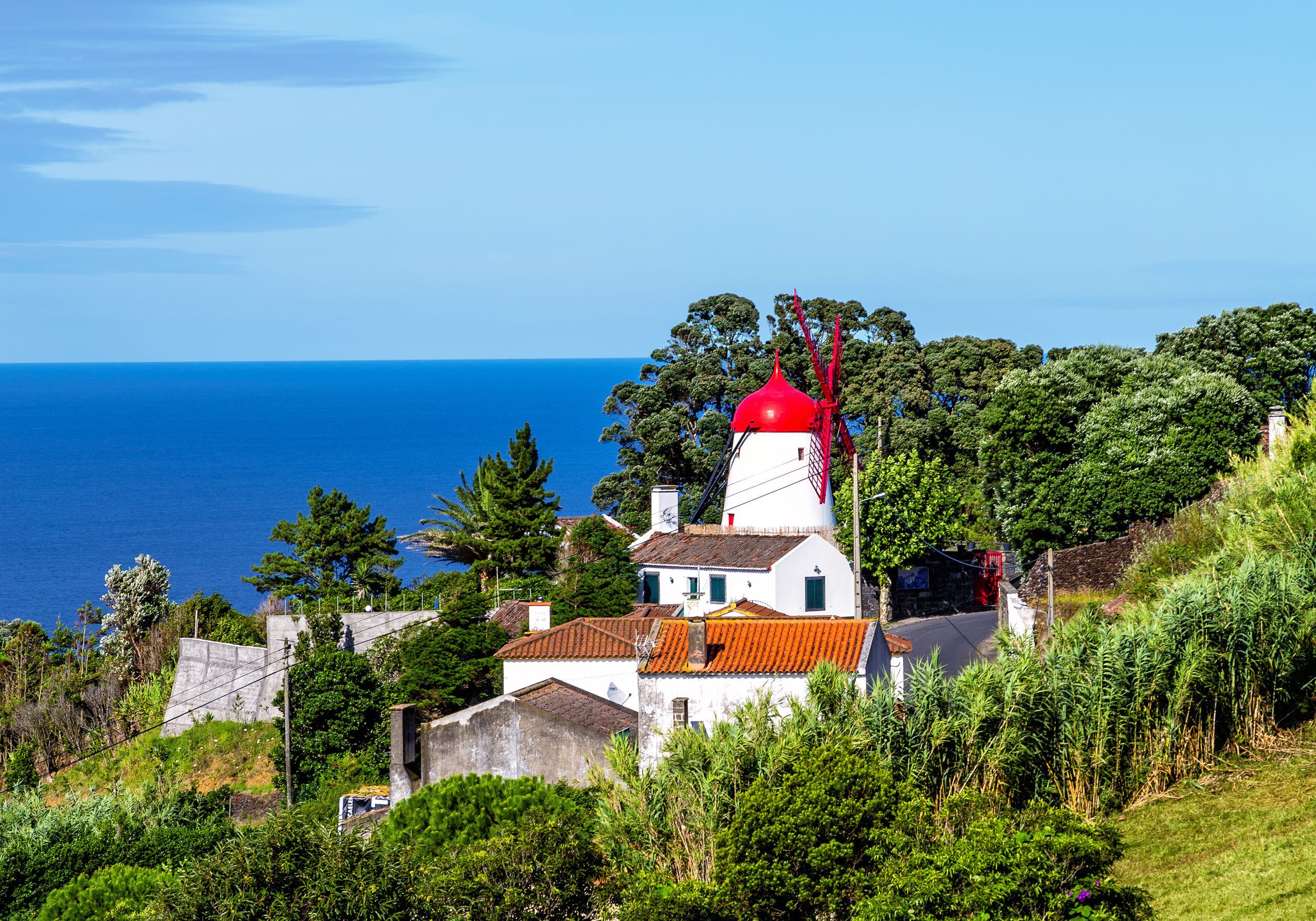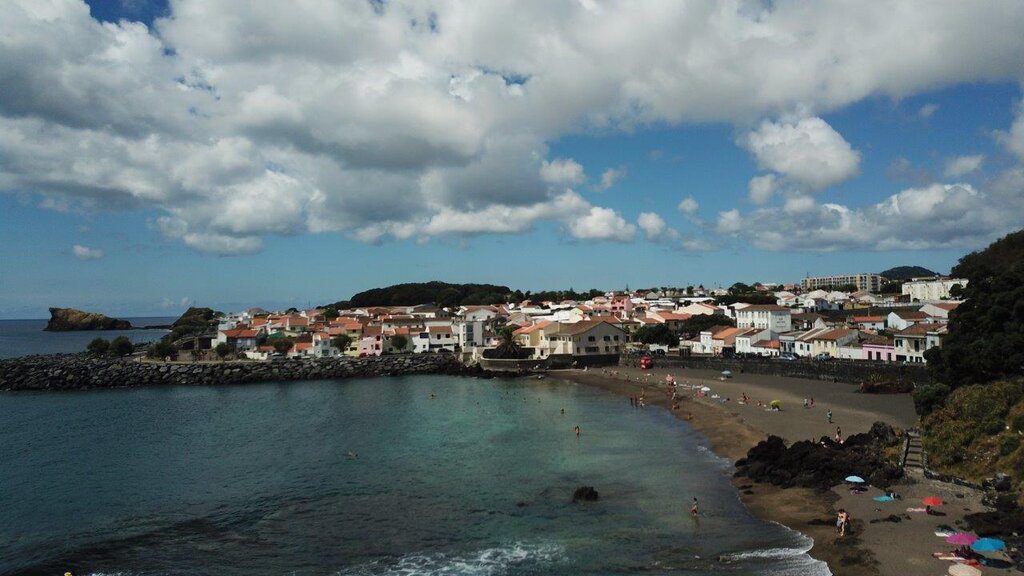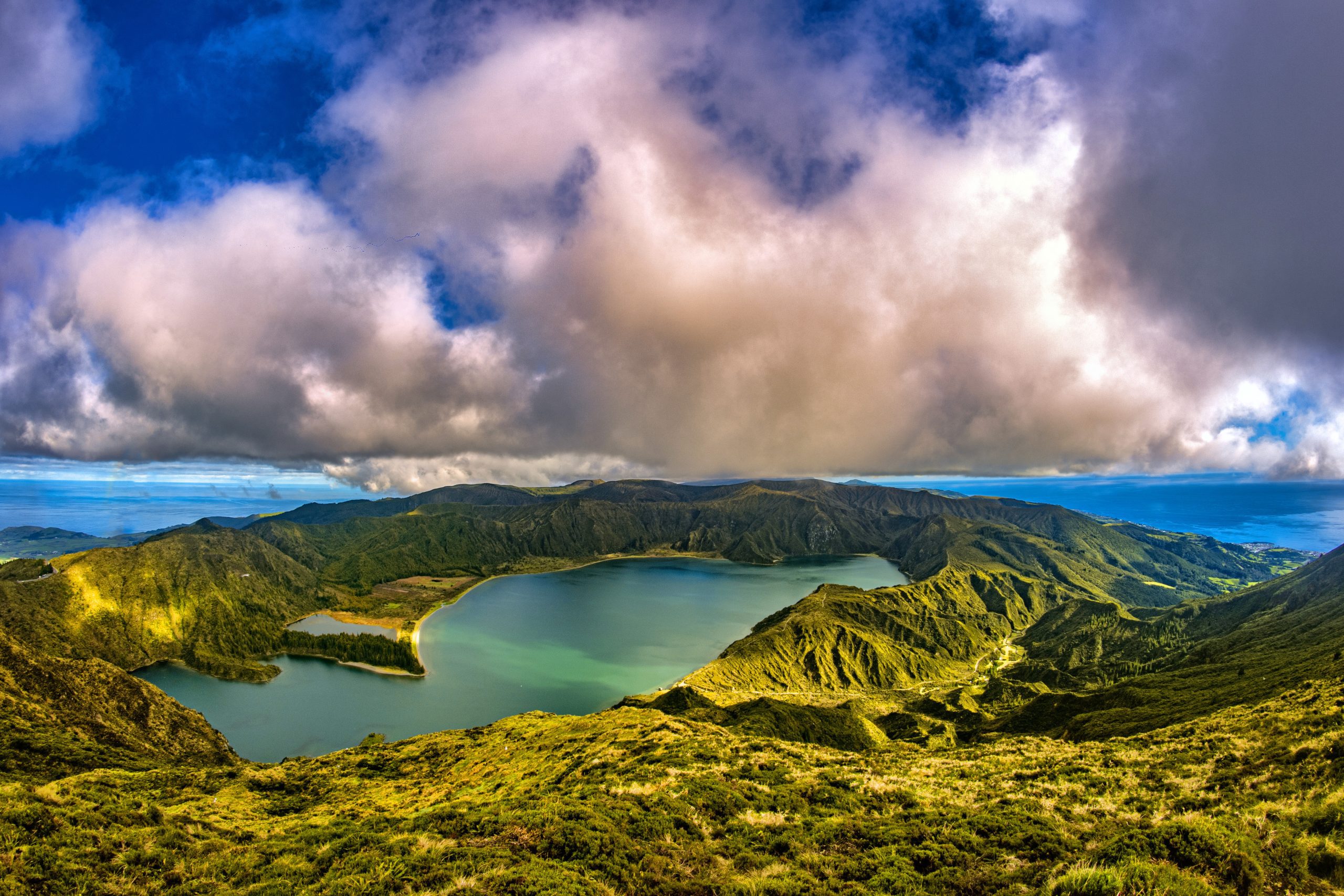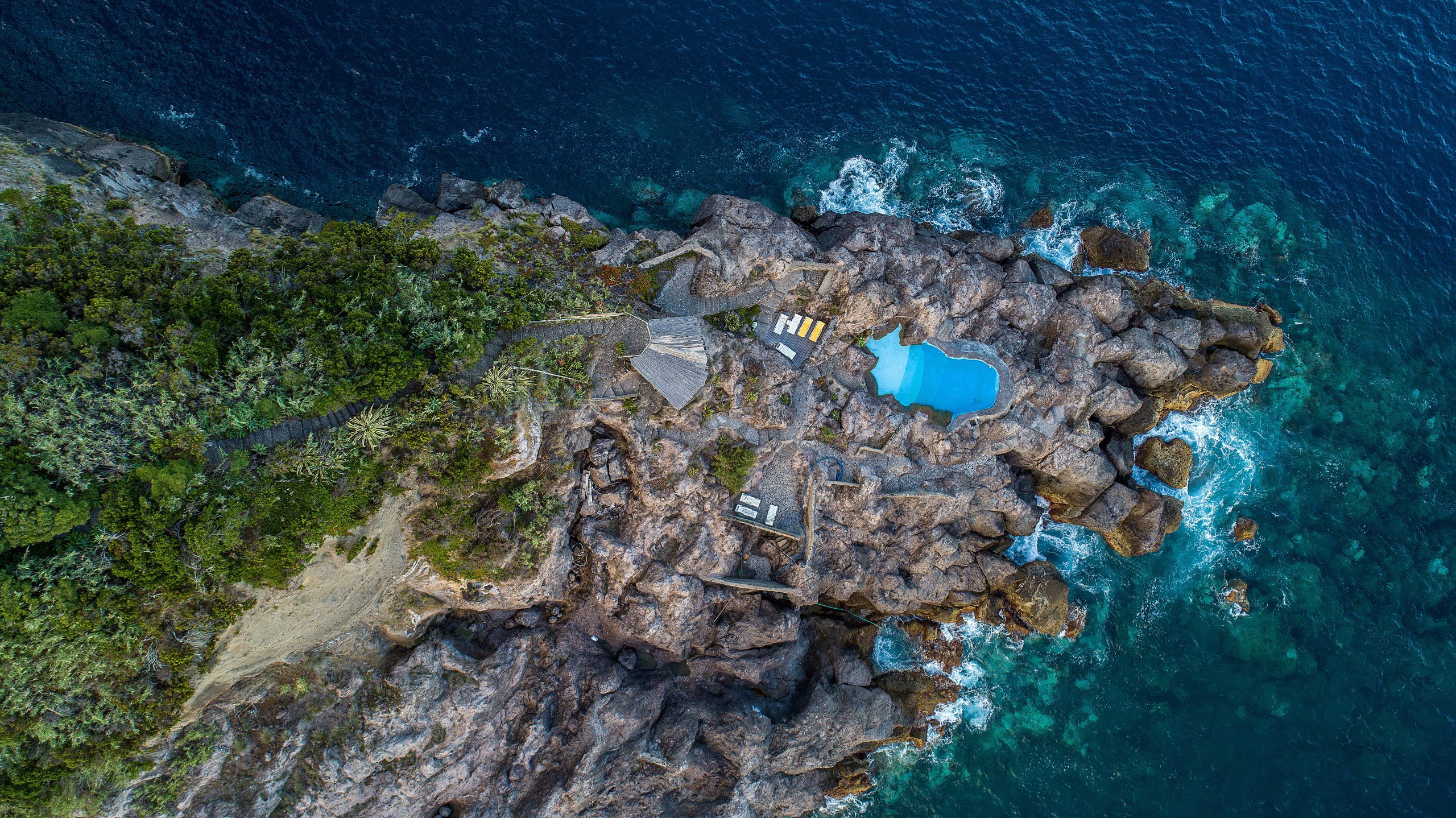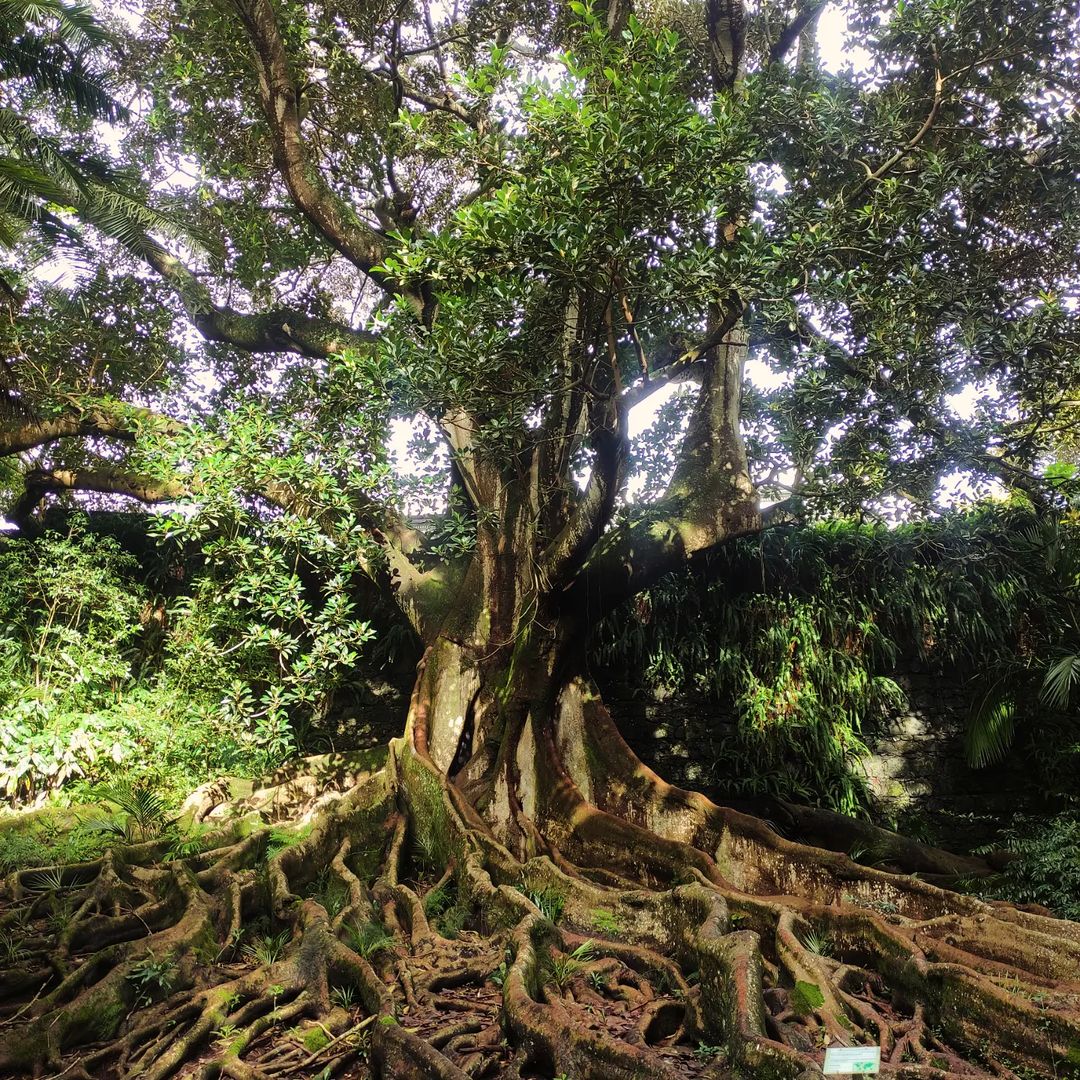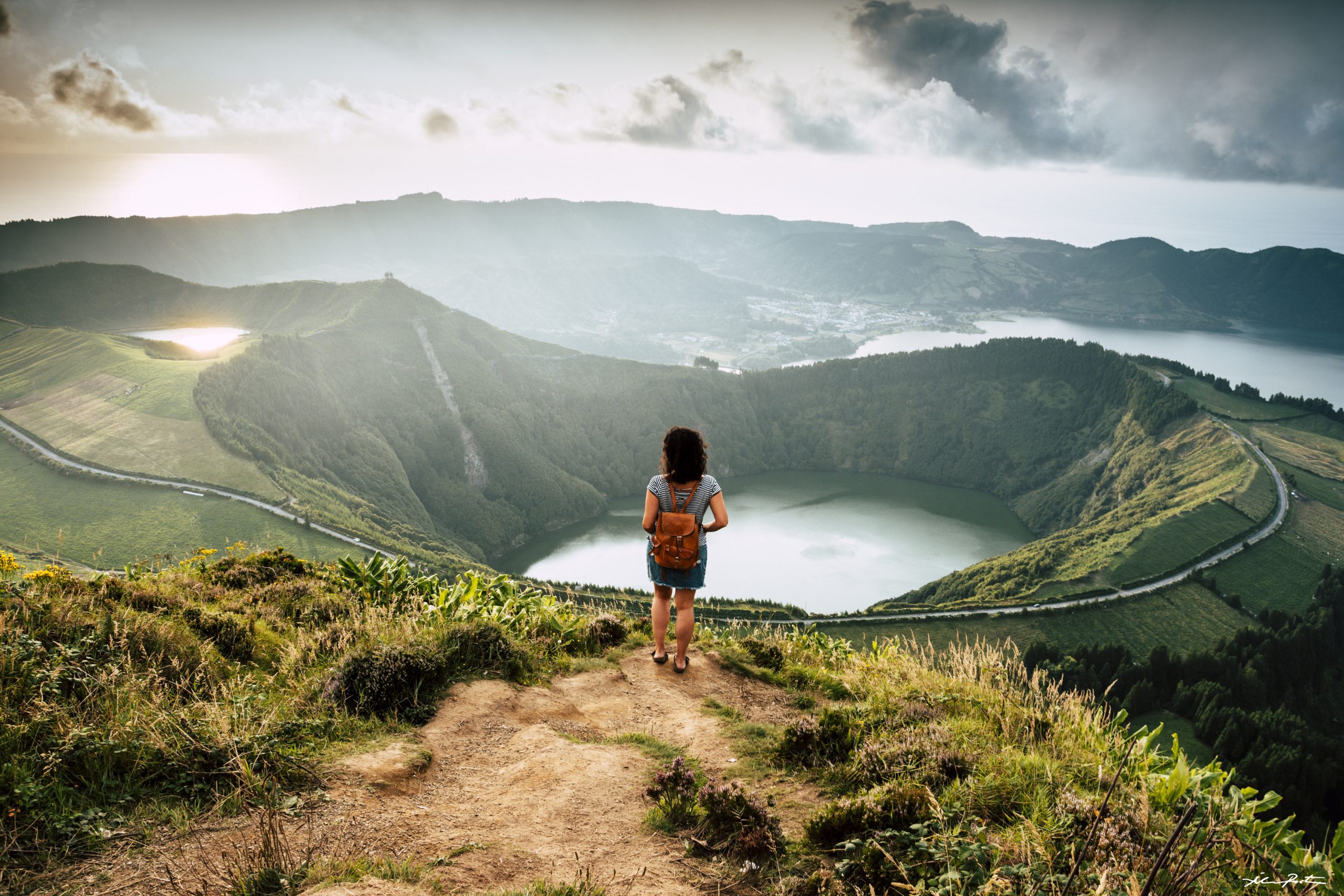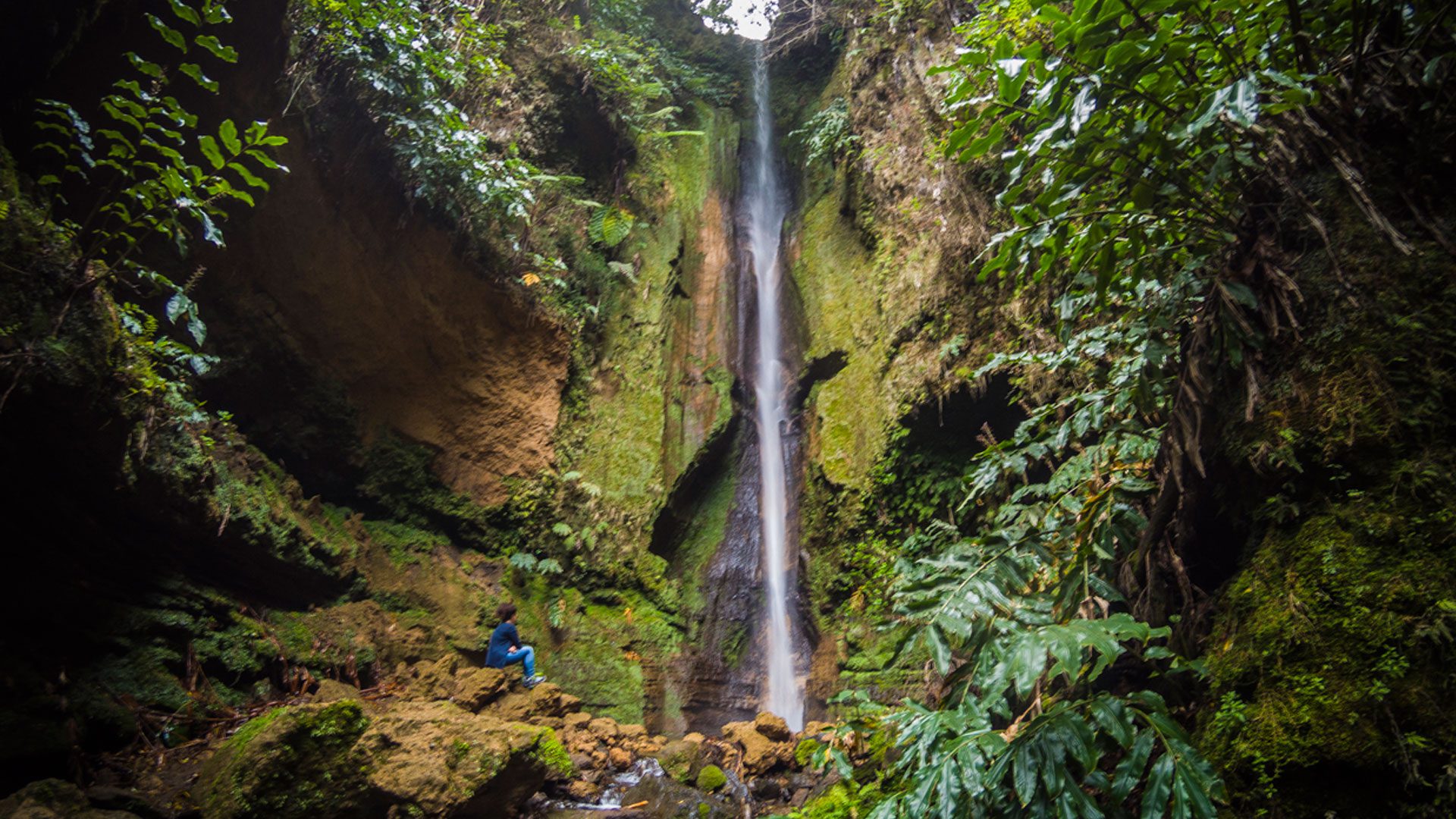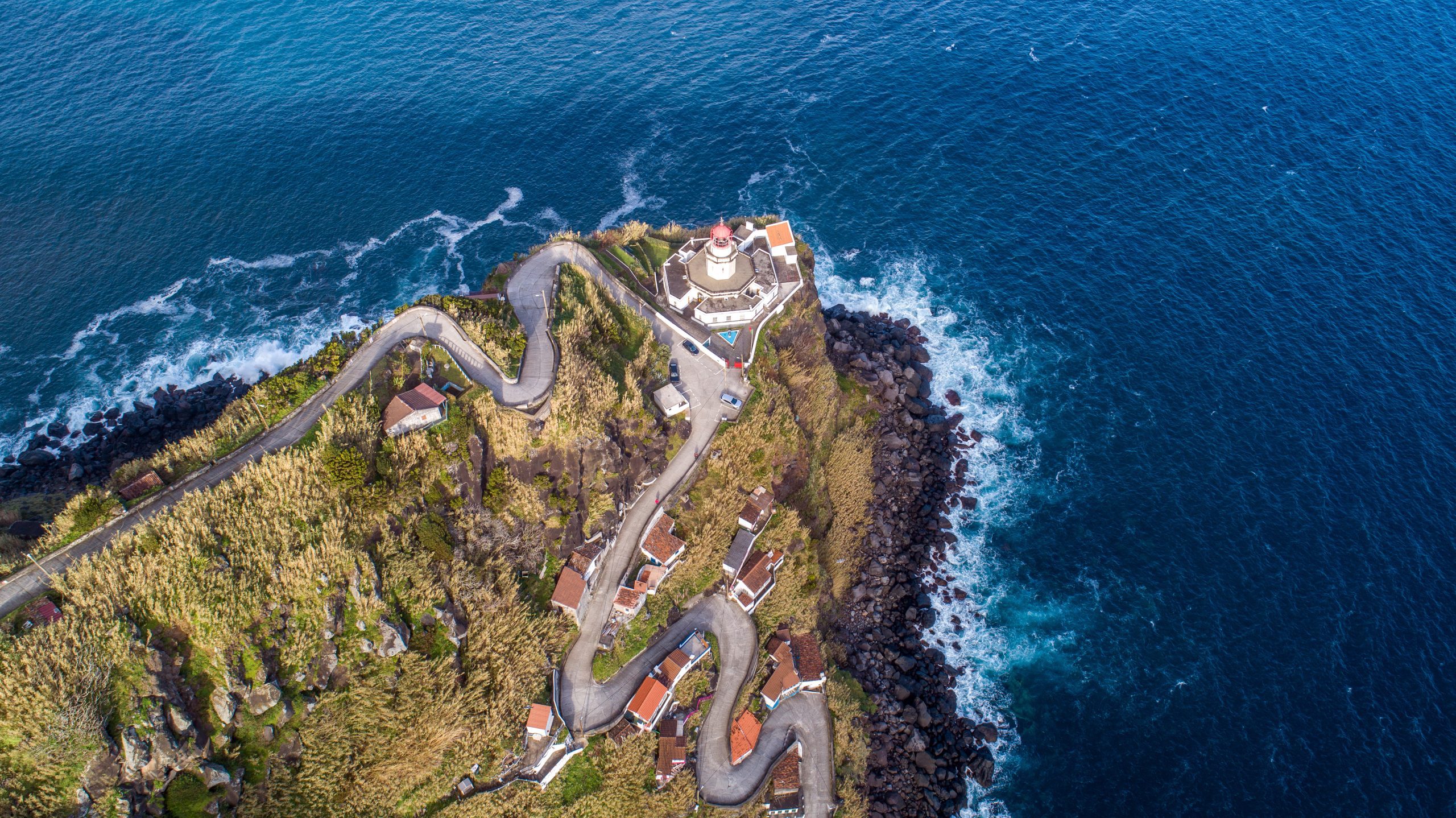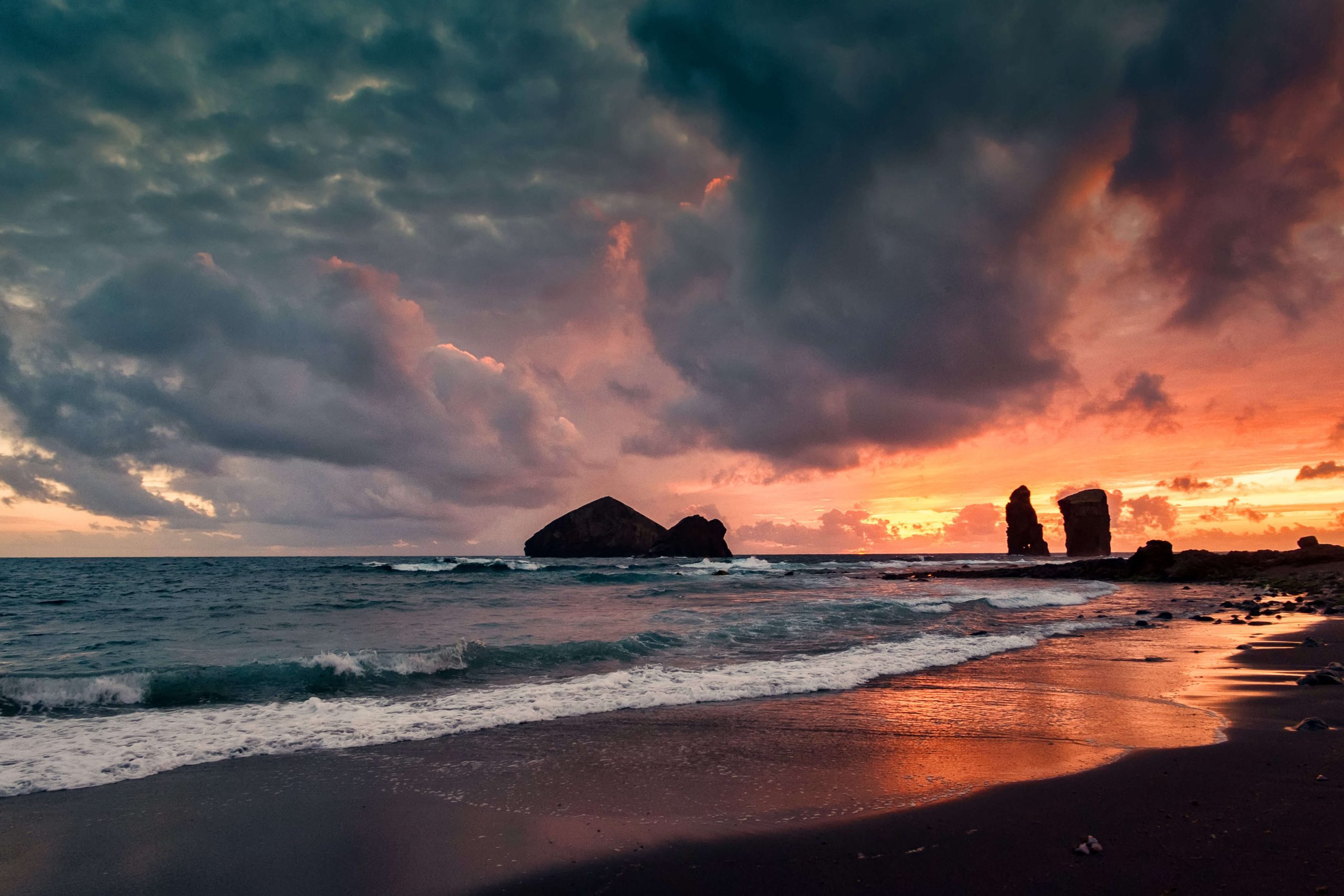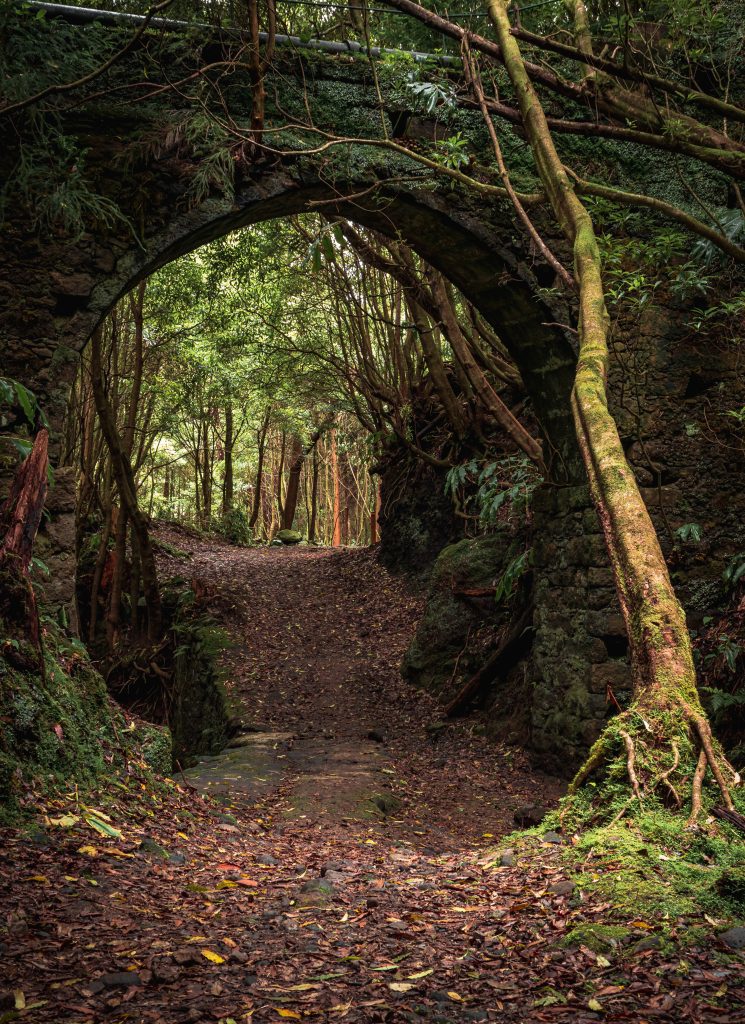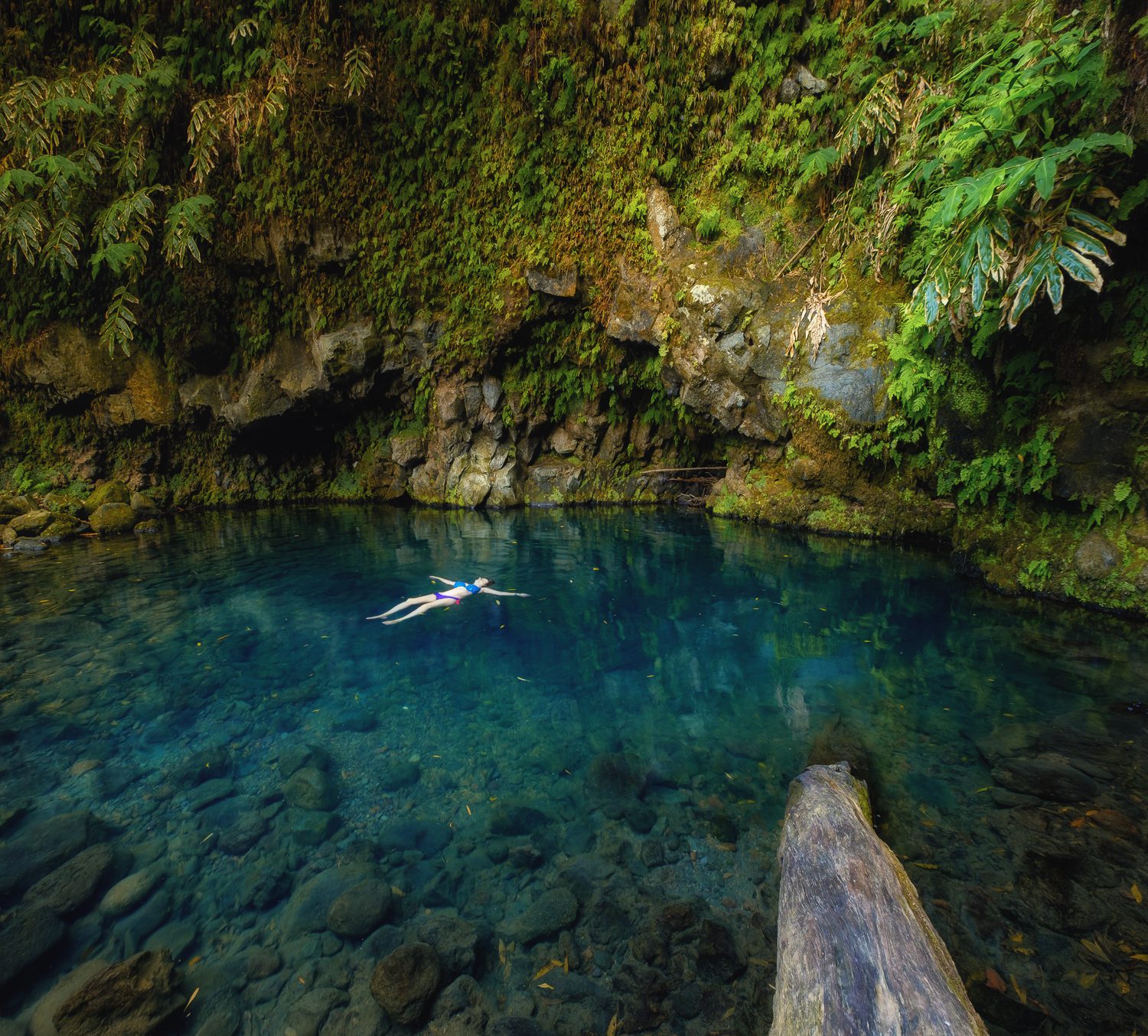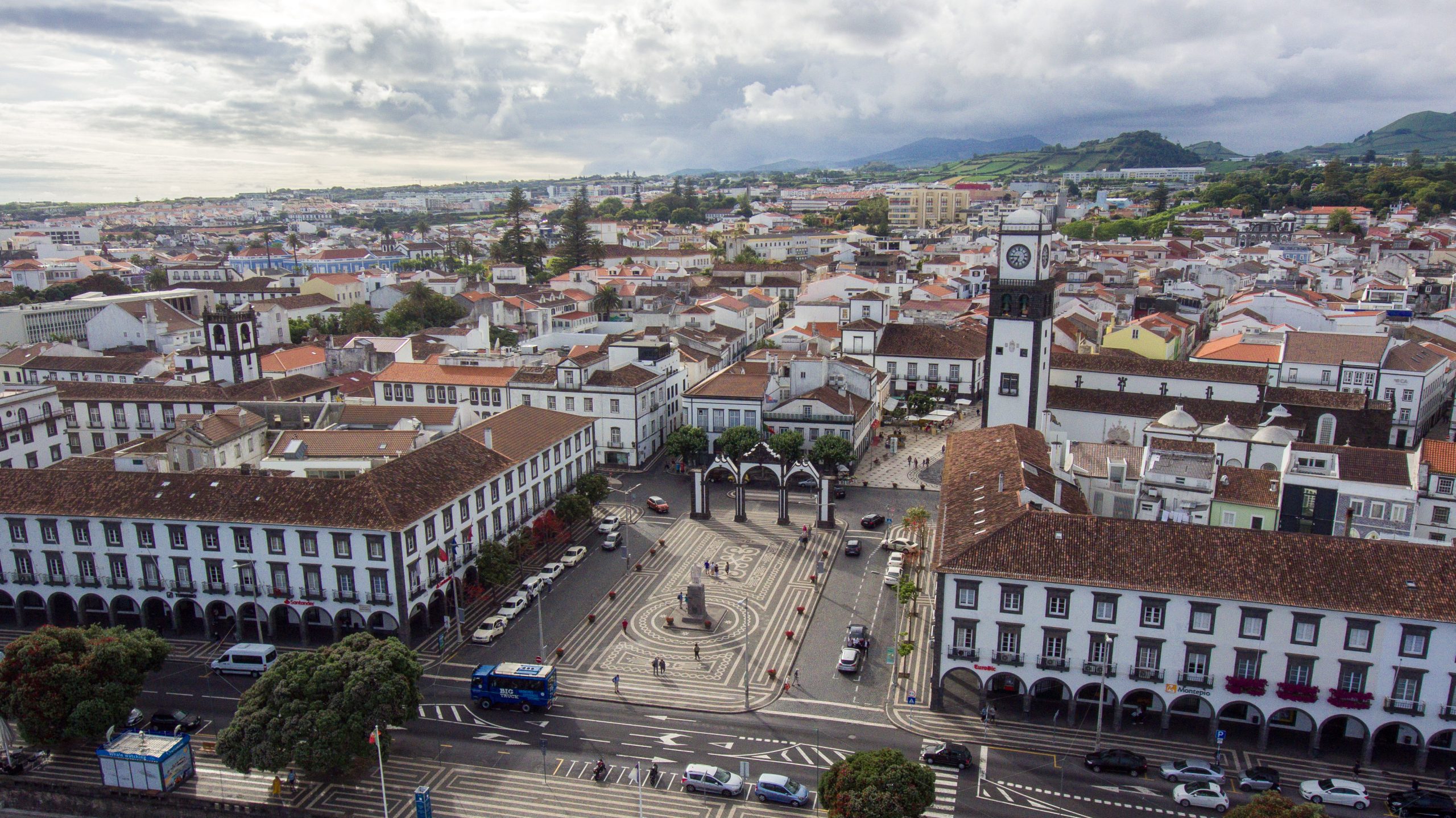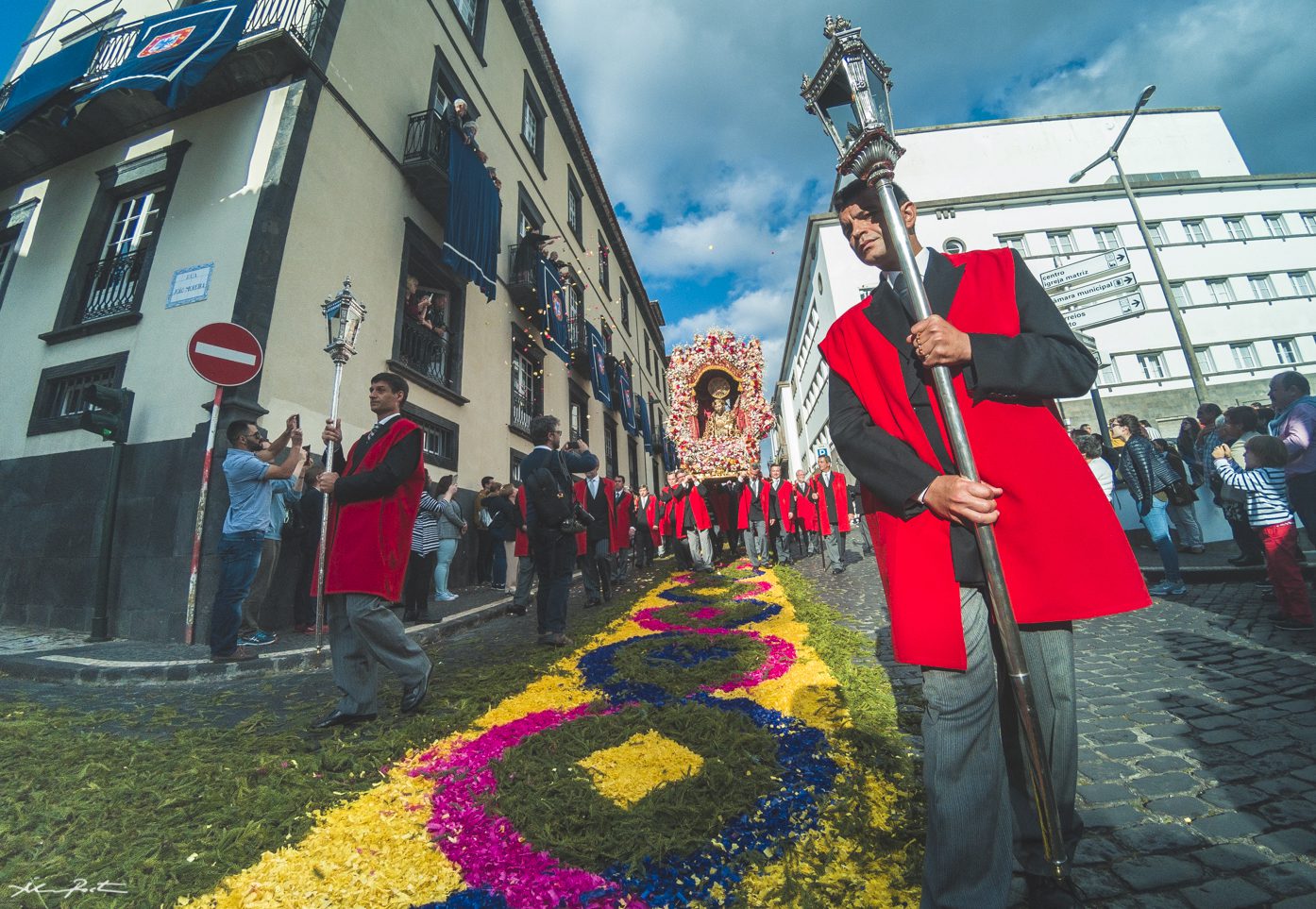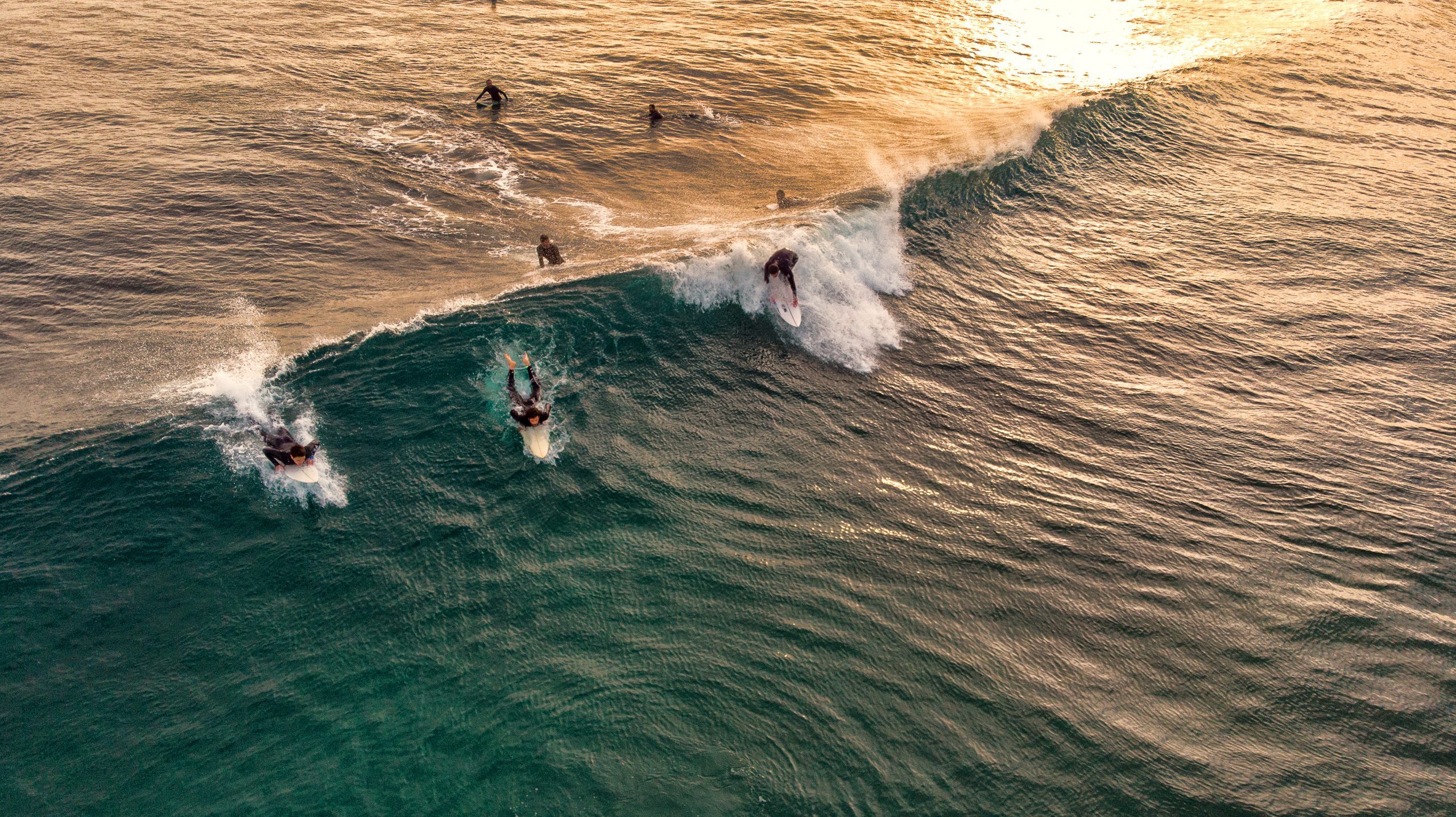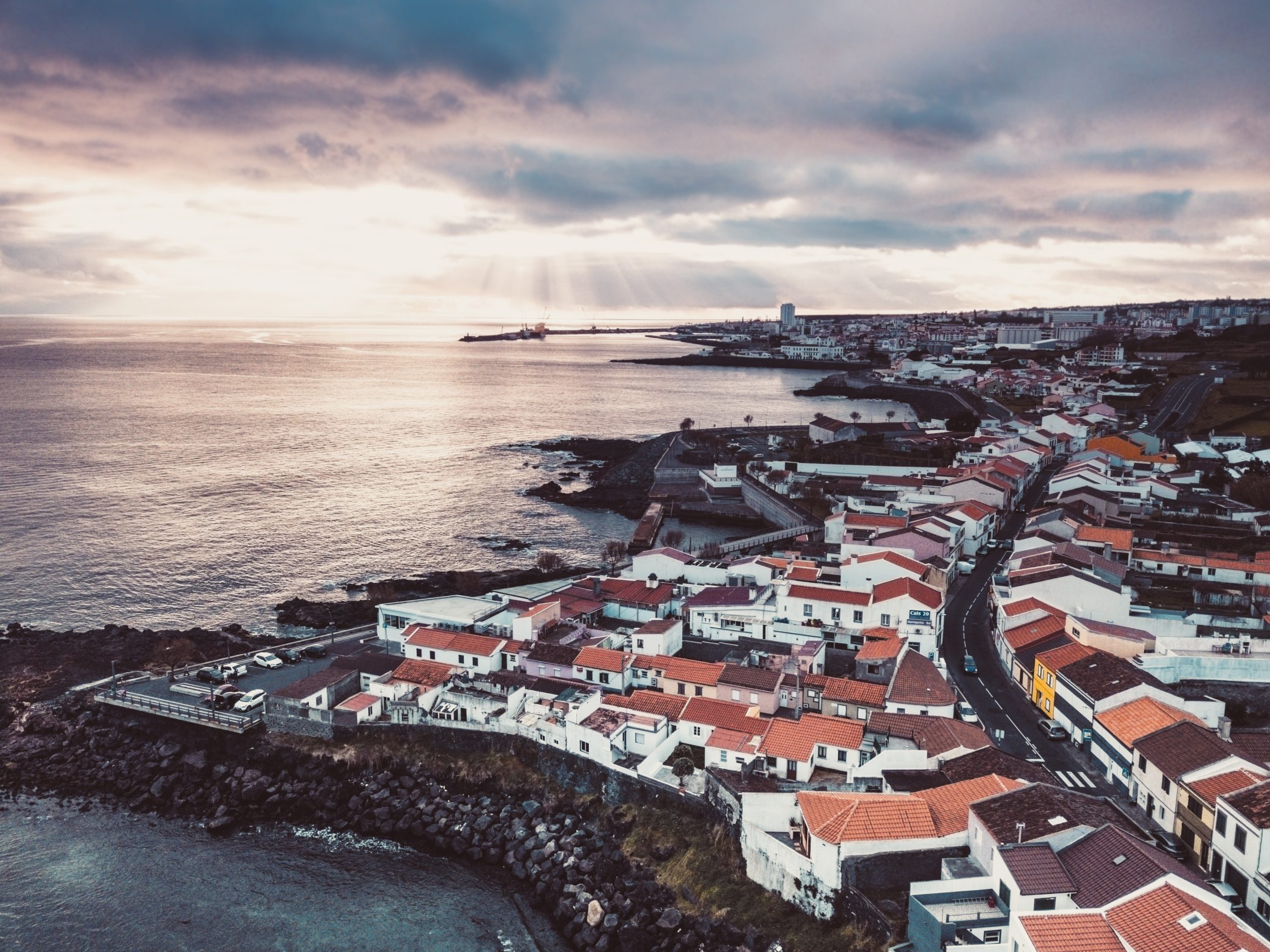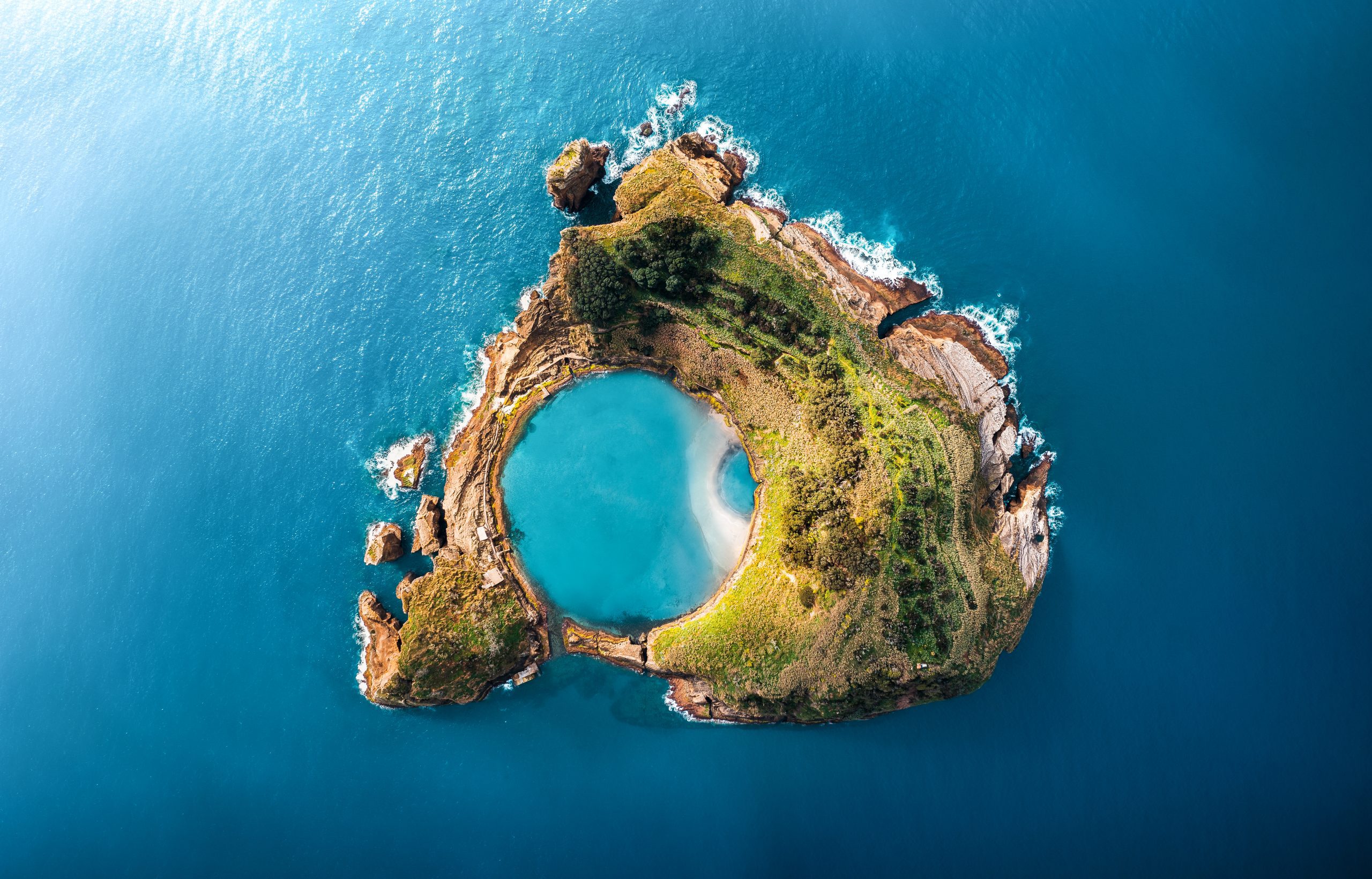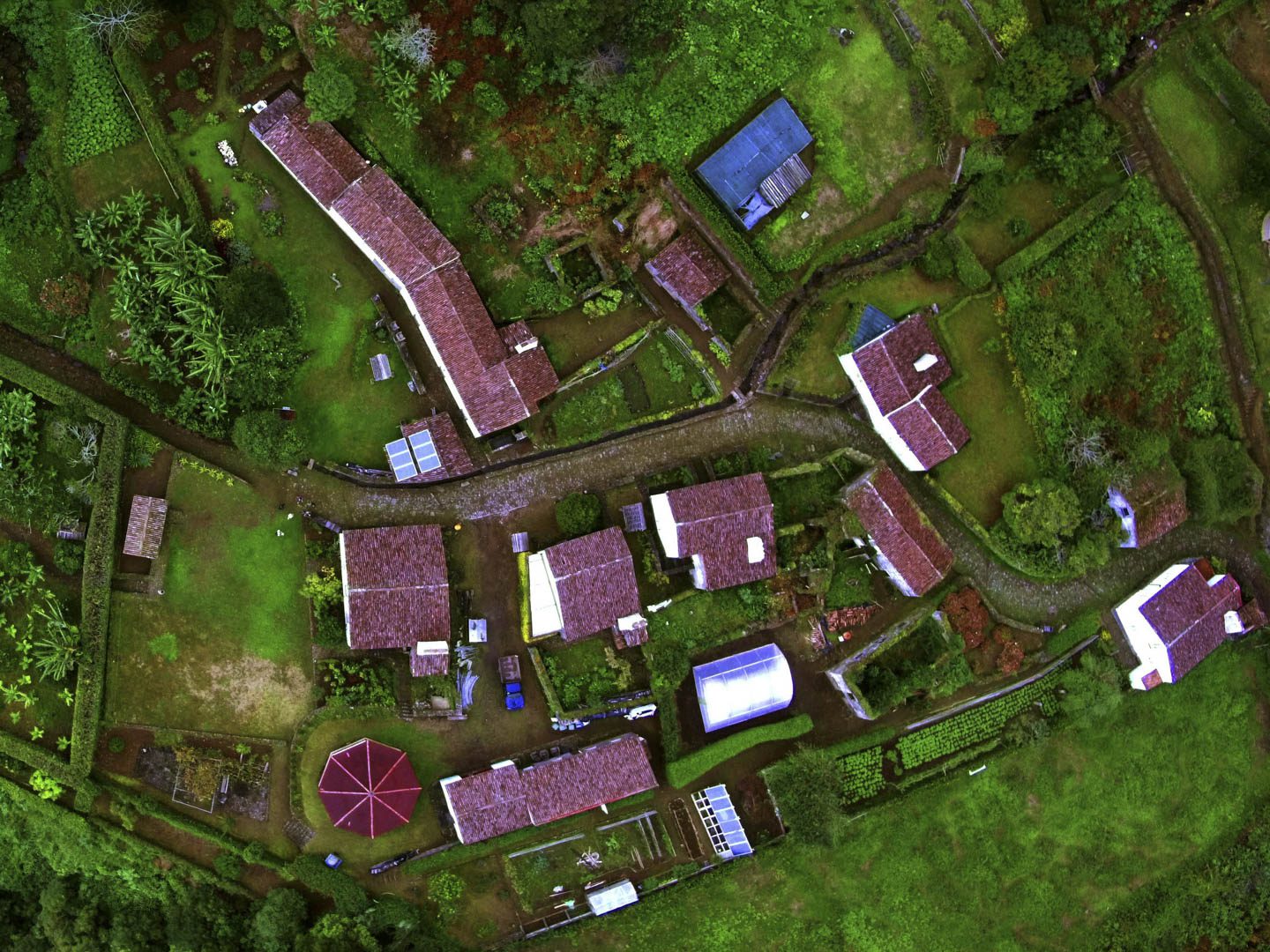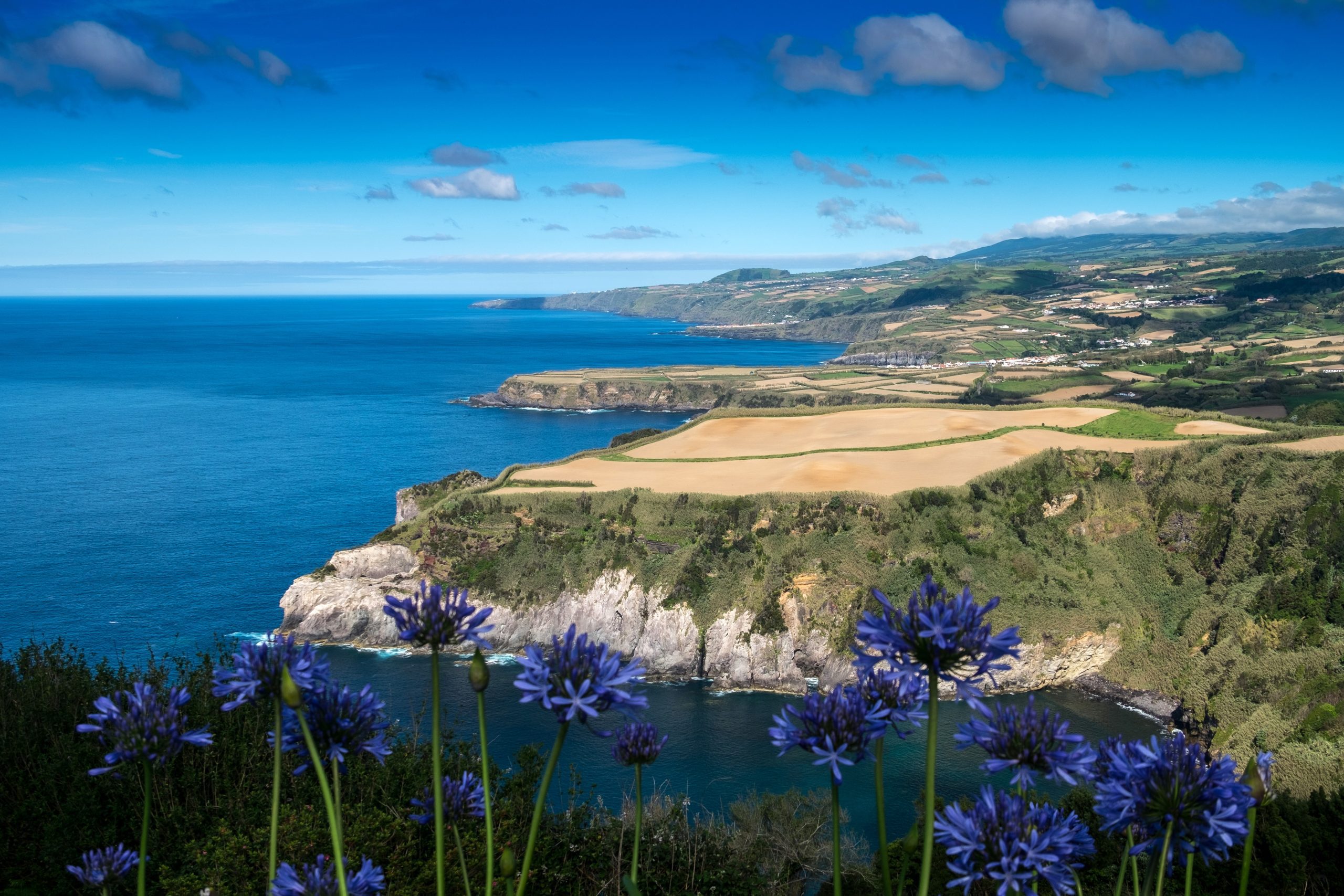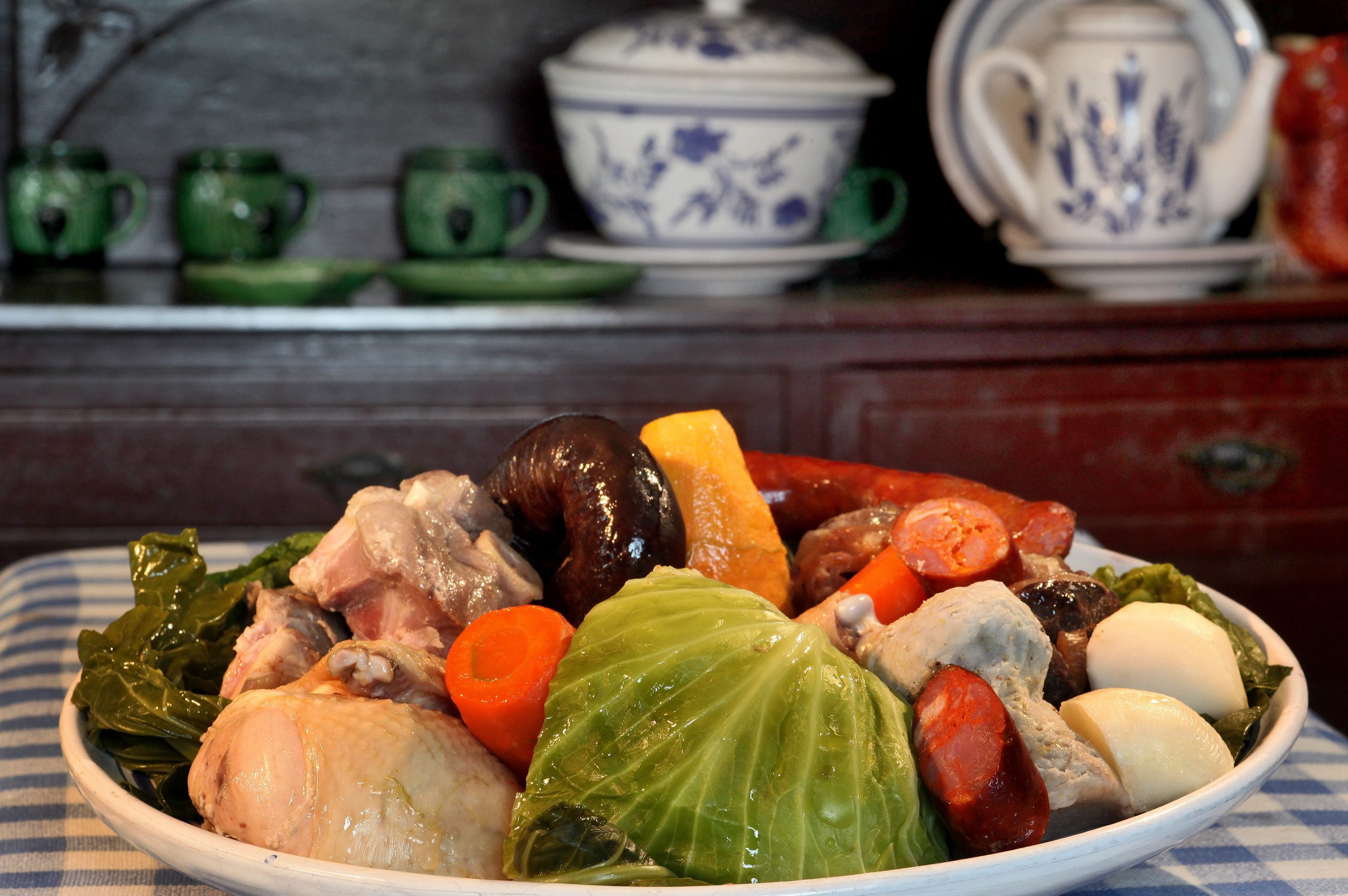The Thermal Pool of Parque Terra Nostra is a notable tourist attraction on the island of São Miguel in the Azores. The Parque Terra Nostra houses this location, a stunning botanical garden filled with fascinating plants and a vast thermal pool.
The volcanic hot springs naturally heat the pool’s water, creating a unique experience. The thermal water, due to its mineral content, offers a relaxing atmosphere and potential therapeutic benefits.
Here, you can enjoy a refreshing dip in the thermal waters while appreciating the natural beauty of the surrounding park. The Thermal Pool of Parque Terra Nostra is a popular attraction for tourists and locals looking to enjoy moments of well-being.
In this regard, we have prepared a guide with the history, information about this location, and tourist points of interest you cannot miss during your visit to Ponta Delgada.
Where is Parque Terra Nostra’s Thermal Pool

The Thermal Pool of Parque Terra Nossa is located inside the well-known Hotel Spa Terra Nostra in the Furnas Valley, in Ponta Delgada, in São Miguel. Surrounded by endemic species of peculiar plants and trees, the immense thermal tank has therapeutic and medicinal properties that fascinate all who visit it.

Did you know
With more than 2,000 trees worldwide, this botanical garden boasts a priceless collection of camellias (approximately 600 species) and a diverse array of flowers.
The unmistakable orange-brown hot water is rich in iron from the earth. It is ideal for relaxing, with a water temperature between 38 °C and 40 °C. Moreover, if you want to enjoy this pool, we recommend not wearing light-colored swimwear or towels to avoid staining them.
History of Parque Terra Nostra
As you might expect, Parque Terra Nostra is one of the most popular places on the island and in the Azorean archipelago. This natural wonder, influenced by the romantic style, was built between the 18th and 19th centuries.
Parque Terra Nostra has known several owners over the years, but it all began in 1775 with Thomas Hickling, a merchant and honorary US consul in São Miguel. Playing a significant role in the history and evolution of the Furnas Valley, the park came to be considered a spa center of interest for treating diseases such as rheumatism and obesity.
In the 20th century, Parque Terra Nostra was a huge reference point in the Azores during the golden age of gardening. Today, the garden is owned by the family of Patrícia and Joaquim Bensaude, who guarantee the preservation and dynamization of this landscape landmark.
History of the Thermal Pool of Parque Terra Nostra

The Thermal Water Pool of Parque Terra Nostra is undoubtedly a symbol of the Azorean archipelago. Built in 1780 by Thomas Hickling, the American consul responsible for the design of Parque Terra Nostra, the pool was originally part of the complex known as Yankee Hall, the holiday residence of the Hickling family.
Did you know
Initially, it had more modest dimensions but already included the famous concept of a central ‘island’ connected to the shore by a bridge.
However, the Thermal Water Tank wasn’t expanded to its current form until 1935, when Vasco Bensaude revived the park. This intervention saw the addition of stone cladding, which has remained unchanged to this day and has undergone only minor maintenance work over the years.
Medicinal Properties of the Parque Terra Nostra Thermal Pool

The experience of bathing in the immense Thermal Pool of Parque Terra Nostra is often highlighted as one of the most memorable moments of a trip to the Azores. The thermal water spring that supplies the tank, with temperatures between 35 and 40 degrees Celsius, provides an incomparable feeling of relaxation.
The waters loaded with essential minerals offer a unique opportunity for revitalization, allowing visitors to connect with the mystical nature so characteristic of Parque Terra Nostra and the Furnas Valley. This remarkable experience inspires many to return year after year for the invigorating sensation of diving into Parque Terra Nostra’s Thermal Pool waters.

What to Do in Parque Terra Nostra

Parque Terra Nostra is a renowned botanical garden home to various fascinating plants and a stunning landscape. When visiting Parque Terra Nostra and its thermal pool, visitors have the opportunity to enjoy various activities:


- Diving in the Thermal Pool: This is the park’s main attraction. The thermal pool offers therapeutic waters naturally heated by volcanic springs. Visitors can relax and enjoy the potential therapeutic benefits of the mineral waters.
- Explore the Botanical Gardens: Parque Terra Nostra has a vast collection of peculiar plants, centuries-old trees, and beautiful gardens. Visitors can stroll along the garden’s winding paths and appreciate the unique flora.
- Nature walks: In addition to the botanical garden and thermal pond, Parque Terra Nostra has trails and paths for visitors to explore the surrounding area’s natural beauty. It’s an excellent opportunity to enjoy the fascinating landscape of the island of São Miguel.
- Relaxation and Well-being: Parque Terra Nostra’s peaceful and serene environment allows visitors to relax, unwind, and contemplate nature in the surrounding area.
In other words, the Parque Terra Nostra Thermal Pool is an unmissable destination for those searching for a unique experience.
→ Explore the authentic flavors of Azorean cuisine in our articles: Bolos Lêvedos | Cozido das Furnas | Grilled Limpets | Massa Sovada | Pimenta da Terra | Gorreana Tea
Plan Your Visit to Parque Terra Nostra’s Thermal Pool

Parque Terra Nostra is known for being one of the most beautiful botanical gardens in the world and for its magnificent thermal water pool. To enjoy this unique experience, we recommend that you plan your visit, taking the following information into account:
- Despite its location on private property, the attraction is open to the public daily.
- Opening hours:
- From April to October: between 10h00 and 19h00;
- From November to March: between 08h00 and 17h00;
- If you’re staying at the hotel, the space is accessible 24 hours a day.
- Prices:
- Adults: 10 euros;
- Children (aged 3 to 10): 5 euros;
- Children (up to 2 years old): free entry;
- Hotel Spa Terra Nostra guests: free entry.
Considering your tastes, it’s also advisable to book flights and accommodation in advance to get better deals and better value for money.
Best Time to Visit
The best time to visit the Thermal Pool of Parque Terra Nostra in the Azores is during the spring and summer months, from April to September. During this period, the temperatures are milder and more pleasant, making bathing in the thermal waters even more relaxing and enjoyable.
In addition, during spring and summer, the gardens at Parque Terra Nostra are in bloom, displaying a wide variety of fascinating plants and vibrant colors. This adds an extra element of beauty to your visit and provides an even more enchanting atmosphere in which you can enjoy the thermal tank and the park’s surroundings.
Parque Terra Nostra Thermal Pool is open all year round. So, if you prefer to avoid crowds, visiting the park during the autumn and winter may also be a viable option. However, regardless of the season, a visit to the Parque Terra Nostra Thermal Pool promises a rejuvenating and memorable experience.
What to Bring
Have you planned your visit to Parque Terra Nostra? It’s time to discover which items we consider essential and which you can’t do without to make your experience the best it can be.
We recommend bringing comfortable clothes, a swimming costume, and equally comfortable footwear to enjoy this experience. You can also take a rucksack with you:
- Extra warm clothes;
- Beach towel;
- Hat and sunglasses;
- Camera to capture moments;
- Sun cream;
- Some snacks;
- Water.
Quick Info
Respect the environment and follow local rules to preserve the unique beauty of this natural area.
How to Get to Parque Terra Nostra
If you are traveling from Ponta Delgada to Parque Terra Nostra, you will have several alternatives in terms of means of transport and route. You can choose to travel by car (your own/rented vehicle or taxi), bus, or bicycle. You’ll have to travel around 43 kilometers along the EN1-1A to reach your destination.
The journey takes approximately 45 minutes by car, 1 hour 35 minutes by bus, and 2 hours 50 minutes by bicycle. You can make this journey on foot, but you should expect to walk for around 9 hours.
Where to Eat
If you need somewhere to eat near Ponta Delgada, click here. In this link, you’ll find the 10 best restaurants on TripAdvisor.
Where to Stay
To make your life easier, we’ve filtered the search by:
Nearby Attractions
Poça da Dona Beija

Poça da Dona Beija is one of Furnas’ most fantastic attractions. The natural hot springs have medicinal properties that benefit visitors’ skin. Once called Poça da Juventude, the thermal baths have various properties derived from the mud that formed inside the cave where the original “puddle” was located.

Did you know
This is a great evening activity, where the atmosphere changes to more romantic and mysterious tones. Visiting the hot pools costs 6 euros per person and is open from 8 am to 11 pm.
Visitors can enjoy the space and swim in the pools, which are typically around 38 °C. These pools are heated by geothermal energy and offer guests an unforgettable and relaxing experience.
Explore Grená Park
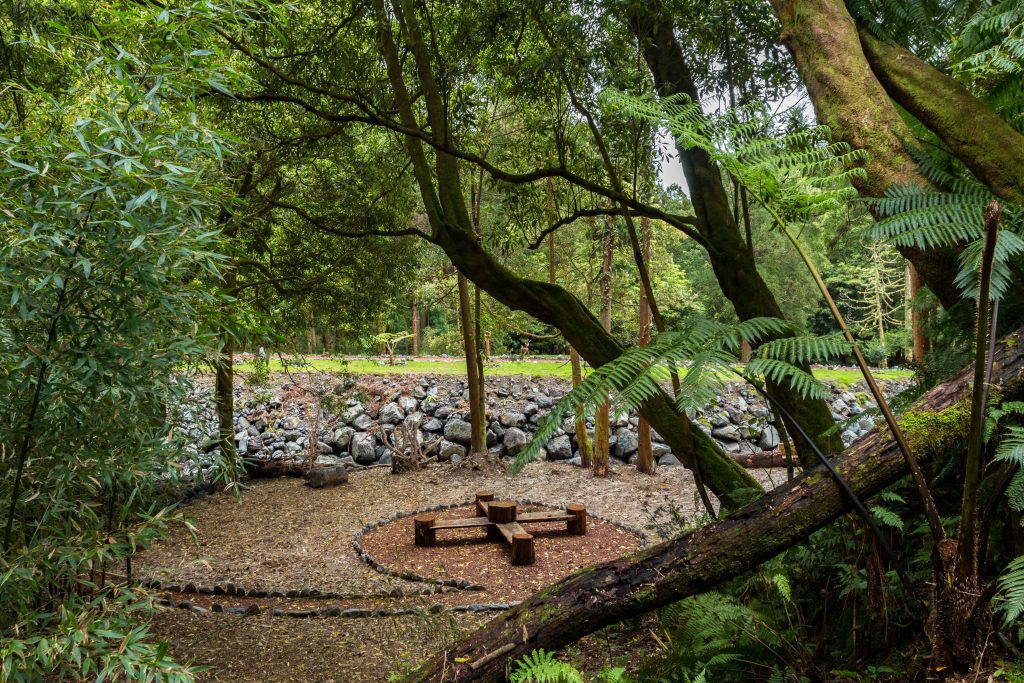
Located on the island of São Miguel, on the northern shore of Furnas Lake, you’ll find Grená Park and all its charms. During your visit to the park, you’ll see an exhibition on the history of the property’s restoration.
Did you know
The entrance fee is 10 euros per person for park visits.
This space, with 18 hectares of forest of “untouchable nature,” is a tourist attraction. Here, you can see a watercourse, waterfalls, streams, and various types of trees and animals typical of the region. You can also enjoy the view of the ruins of a 1858 manor house in the park.
Mata-Jardim José do Canto
Mata José do Canto is on the south side of Lagoa das Furnas. It was planted by the man who gave it its name in 1861 in an arid area affected by the Lagoa Seca volcano, which has been silent since 1630.
Quick Info
The project was designed by Barrillet-Deschamps, a “pop star” of French landscaping who had already achieved successes, such as the gardens of the Champs Élysées in Paris (co-authorship).
This ten-hectare woodland garden includes centuries-old camellias and sequoias, and the Salto do Rosal trail, a 2 km path to a crystal-clear waterfall. The site has been open to the public since August 2014.

The flora in Mata-Jardim is exceptional. Here, you can see a vast collection of camellias planted along the property’s extensive boulevards and in the new ‘camelito’, as well as many remarkable trees and endemic plants, some Indigenous and others from temperate and subtropical regions.
Ermida de Nossa Senhora das Vitórias

The Chapel of Nossa Senhora das Vitórias is the only neo-Gothic chapel in the Azorean archipelago. It was built in the 19th century on the south shore of Lagoa das Furnas and is part of the Mata-Jardim José do Canto.
Quick Info
The Ermida da Nossa Senhora das Vitórias was built at the behest of José do Canto as an act of faith to recover his wife, Maria Guilhermina, who was suffering from a serious illness. Later, they were both buried here.
This imposing architectural masterpiece drew inspiration from the unmatched churches in the major European capitals of the era. We recommend that you visit the interior of the church and its unmistakable construction.
The chapel is surrounded by a woodland garden, which features intricately carved tree-trunk statues and informational plaques highlighting the local flora.

Casa dos Barcos & Casa da Lagoa
The Casa dos Barcos, now a rural tourism resort, was designed initially as a cottage inspired by Nordic (Anglo-Flemish) architecture. It was previously called the Navigation Pavilion. On the other hand, Casa da Lagoa, also converted into a Rural Tourism space, is the former “Fishing Pavilion”, initially built as a Franco-Swiss chalet inspired by the picturesque architecture of the time.

These rural lodgings offer a range of natural and historical elements that will make your stay or visit memorable. You can currently stay in these beautiful houses during your visit to São Miguel.
The buildings form part of the Mata-Jardim José do Canto on the south shore of Lagoa das Furnas. In addition to the garden of exceptional botanical diversity, we also find the Chapel of Nossa Senhora das Vitórias.
Caldeiras das Furnas
The Caldeiras das Furnas, located in the village of Furnas, are a tourist attraction for both the Portuguese and the thousands of foreigners visiting this area annually.
As in any place where magma is closer to the surface, the Campo Fumarólico da Vila das Furnas and the Campo Fumarólico da Lagoa das Furnas are areas where imposing volcanic manifestations occur.


These calderas are small rainwater lagoons formed in the craters of the volcano, which has been dormant since 1630. They arose when the top of the volcano’s cone collapsed during its last eruption.
Combined with the magma close to the surface, the rainwater that accumulates in these holes reaches very high temperatures, thus causing fumaroles, springs, and hot springs. However, besides sharing the same boiling state as water, fumaroles emit vapors and gases with a strong sulfur smell.
Check all our articles about each one of the most relevant points of interest in Furnas: Caldeiras das Furnas | Furnas | Capela da Nossa Senhora das Vitórias | Castelo Branco Viewpoint | Lagoa das Furnas | Lagoa das Furnas Viewpoint | Mata-Jardim José do Canto | Parque Terra Nostra’s Thermal Pool | Pico do Ferro Viewpoint | Poça da Dona Beija | Ribeira Quente | Praia do Fogo | Salto do Cavalo Viewpoint | Salto do Rosal | Terra Nostra Garden
Complementary Information
Best Season to Visit the Azores
The Azores Archipelago boasts a unique climate that shapes its lush landscapes, making it a splendid year-round destination. With mild temperatures and minimal fluctuations, each season offers something unique. Spring averages 16 °C, summer reaches 21 °C, autumn cools to 18 °C, and winter remains mild at 14 °C.
→ For a detailed breakdown of the weather by month, check the following links 🌤️☔️: January | February | March | April | May | June | July | August | September | October | November | December
How to Get to the Azores
The Azorean Archipelago is easily accessible through numerous flight routes. Lisbon and Porto are the main entry points to the continent, with direct flights available to São Miguel (PDL), Terceira (TER), Faial (HOR), Pico (PIX), and Santa Maria (SMA). To find the best flight, use search engines like eDreams or Skyscanner. These platforms let you compare prices and schedules from multiple airlines in one convenient location.
For more details on how to get to the Azores, take a look at our complete guide. But what if you want to explore beyond your arrival island? We’ve got you covered!
- Azores airports 🛬
- Flights between islands ✈️
- Ferries between islands ⛴️
- Which island to choose? 🏝️
- What airlines fly to the Azores? 🛩️
→ Once you’ve found the perfect route, book your tickets and get ready to experience one of the world’s most stunning island groups!
Travel Essentials
Essential Information for your Azores trip: Azorean Language & Phrases 🗣️ | Currency & Banks 💵 | Credit Cards & Traveler’s Cheques 🏧 | Driving in the Azores 🚗 | Electricity 🔌 | Experiences & Tours 🗺️ | Health & Safety 🩺 | Internet & Wi-Fi Access 🛜 | Phones & Mobile Service 📞 | Post Offices & Buying Stamps ✉️ | Public Holidays 🏖️ | Shopping 🛒 | Time & Daylight 🕒 | Whale Watching Guide 🐳 | Best Island to Visit 🏞️
Useful Tools & Apps
The weather in the Azores can be variable, so it’s helpful to use some apps before visiting the islands. Spotazores provides live camera feeds from the main tourist attractions, allowing you to check the weather and plan your visit. For accurate weather predictions, use Windy or Windguru — they provide the most reliable predictions.
Video
Conclusion
One of the most emblematic thermal water tanks in the Azorean archipelago is located in Parque Terra Nostra. Here, you can enjoy the immense heated iron water pool and the botanical garden with its endless collection of botanical species.
Remember that iron water is brownish. Therefore, if you visit these tanks, avoid wearing light-colored clothing to prevent unpleasant surprises — stains.
So we can say that Parque Terra Nostra has magnificent scenery in every nook and cranny. What are you waiting for to visit this natural wonder?
Authors’ Note
I am pleased to inform you that all the recommendations in this article are based on my personal experience and observations. As the author, I have personally visited each attraction mentioned, ensuring that every suggestion is grounded in first-hand knowledge and genuine enthusiasm.
FAQs
Parque Terra Nostra’s thermal pool temperature ranges between 35 °C and 40 °C. This warmth, combined with its iron-rich waters, provides a relaxing experience and gives the pool its distinct yellow-brown color.
It is best to bring dark or older swimwear to Parque Terra Nostra’s thermal pool, as the iron-rich waters may permanently stain fabrics. Avoid light-colored or brand-new swimsuits.
Parque Terra Nostra’s thermal pool provides visitors with showers, changing rooms, and relaxing spaces. Additional hot tubs with massage jets were recently added to elevate the experience.
Parque Terra Nostra’s thermal pool is in Furnas Valley, São Miguel. It is about 45 km from Ponta Delgada and is accessible by car, with parking available. Tickets allow access to the pool and the botanical gardens.





